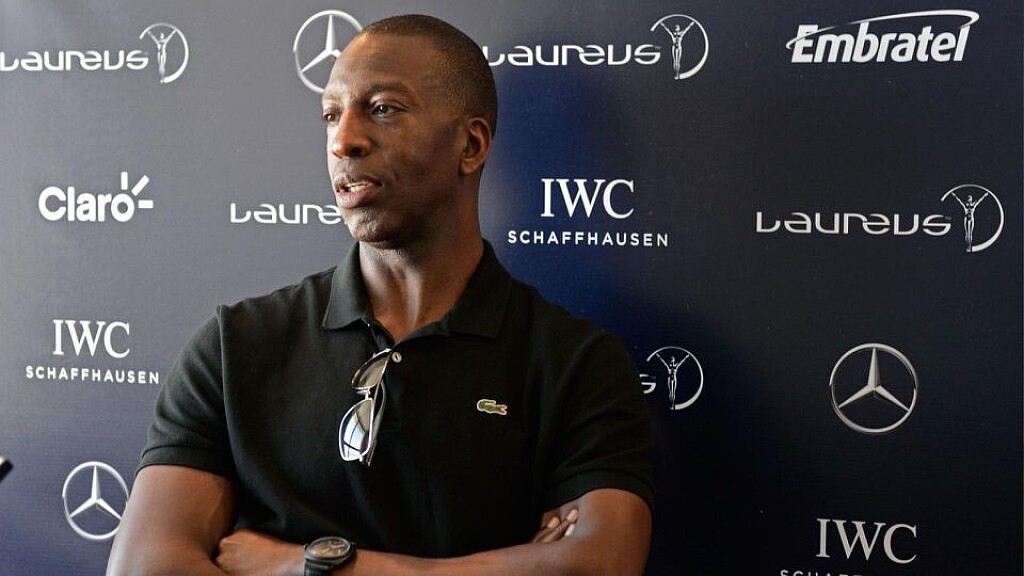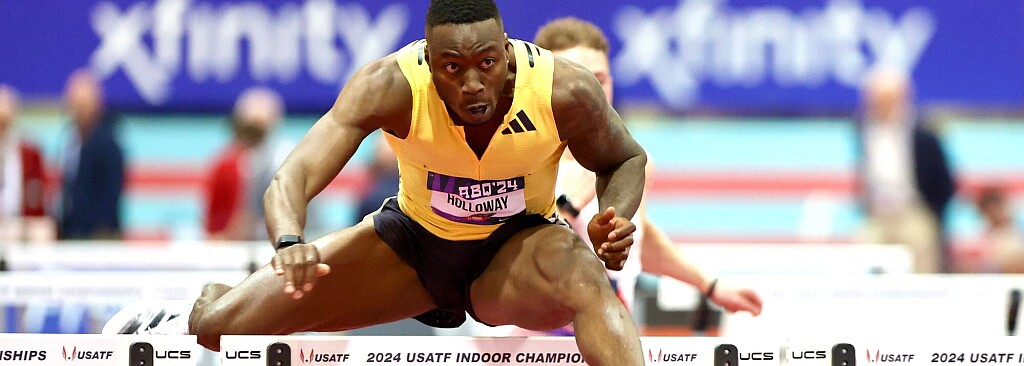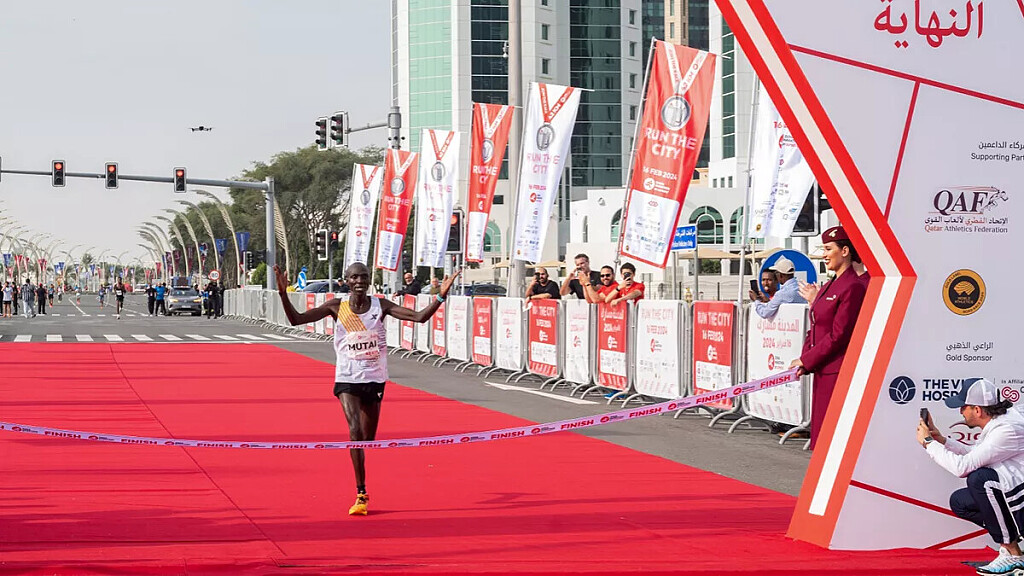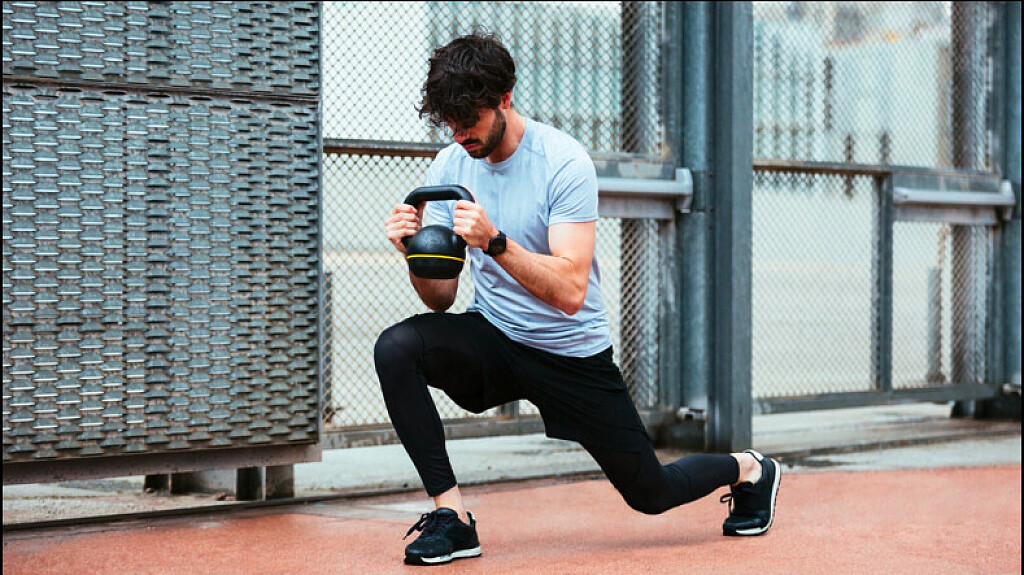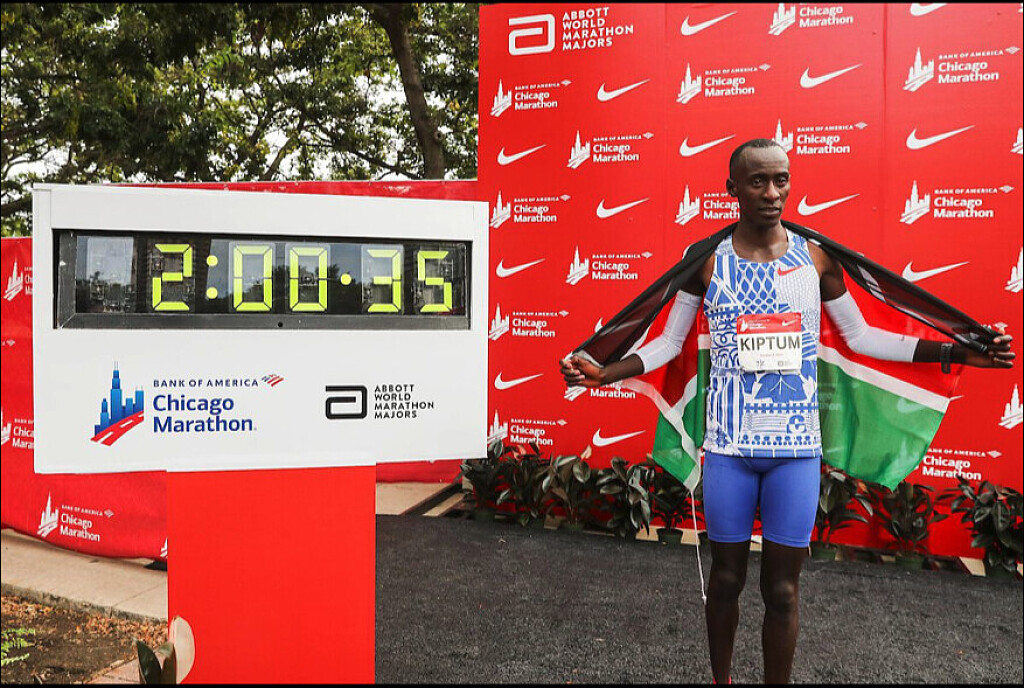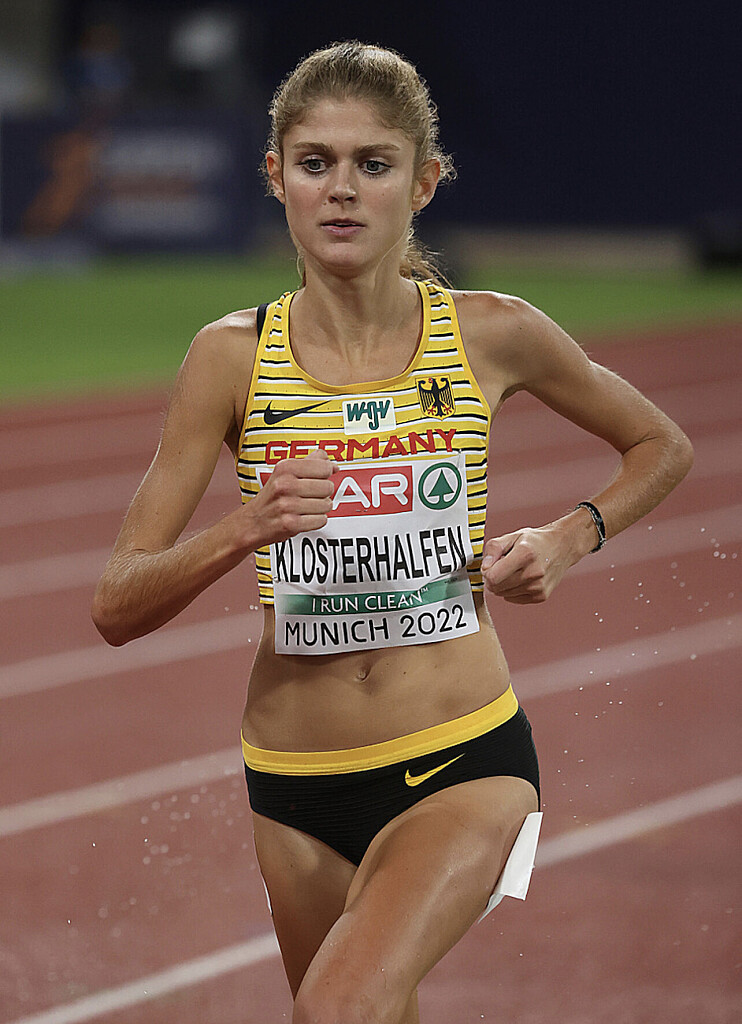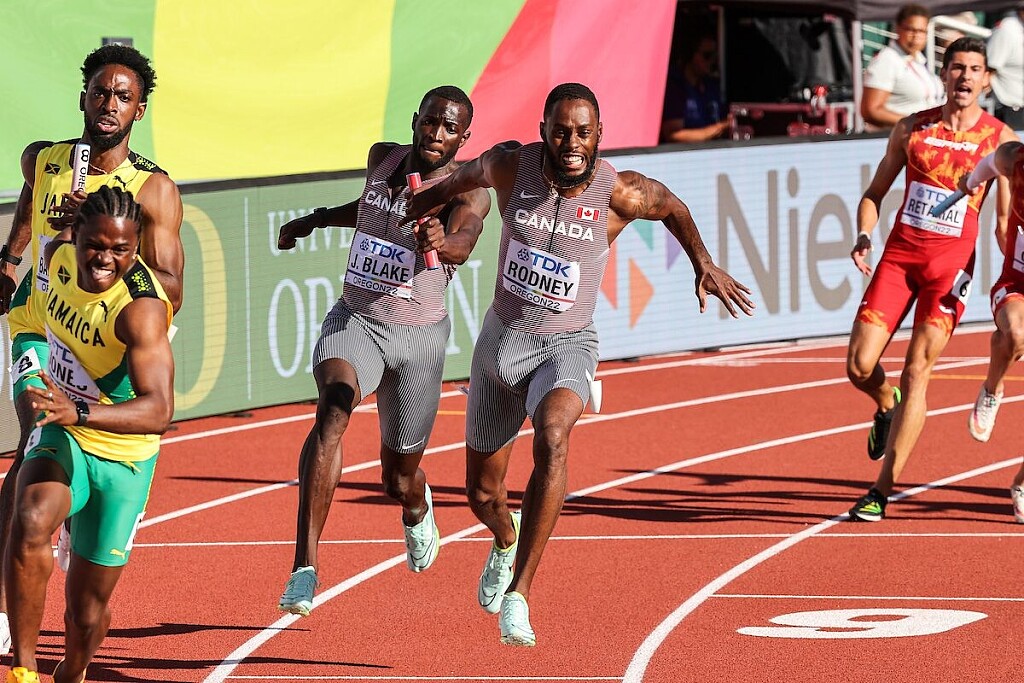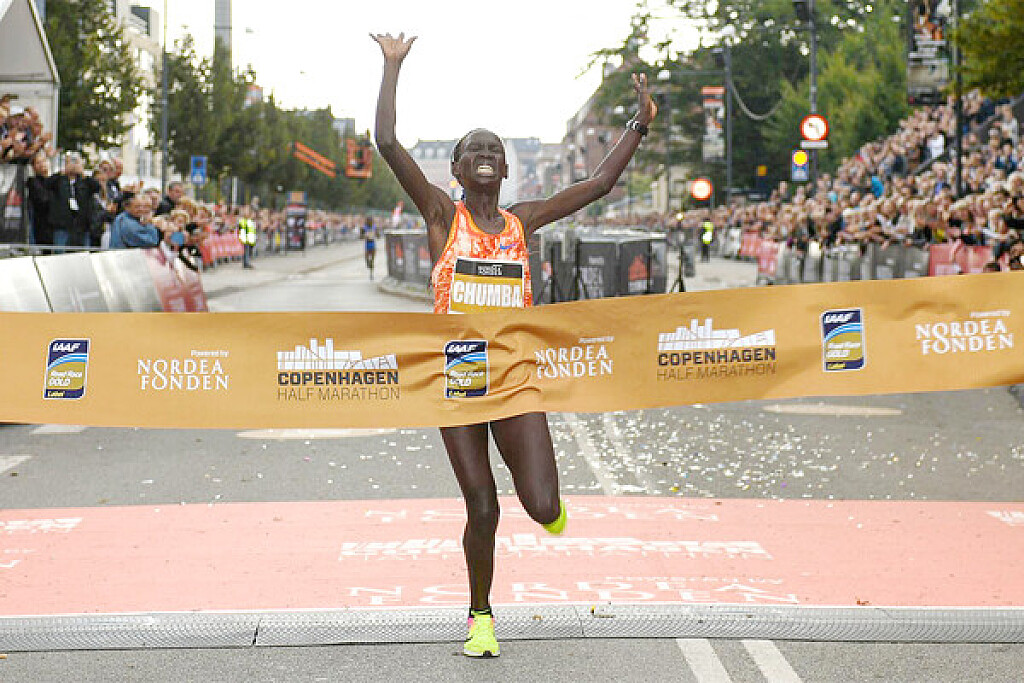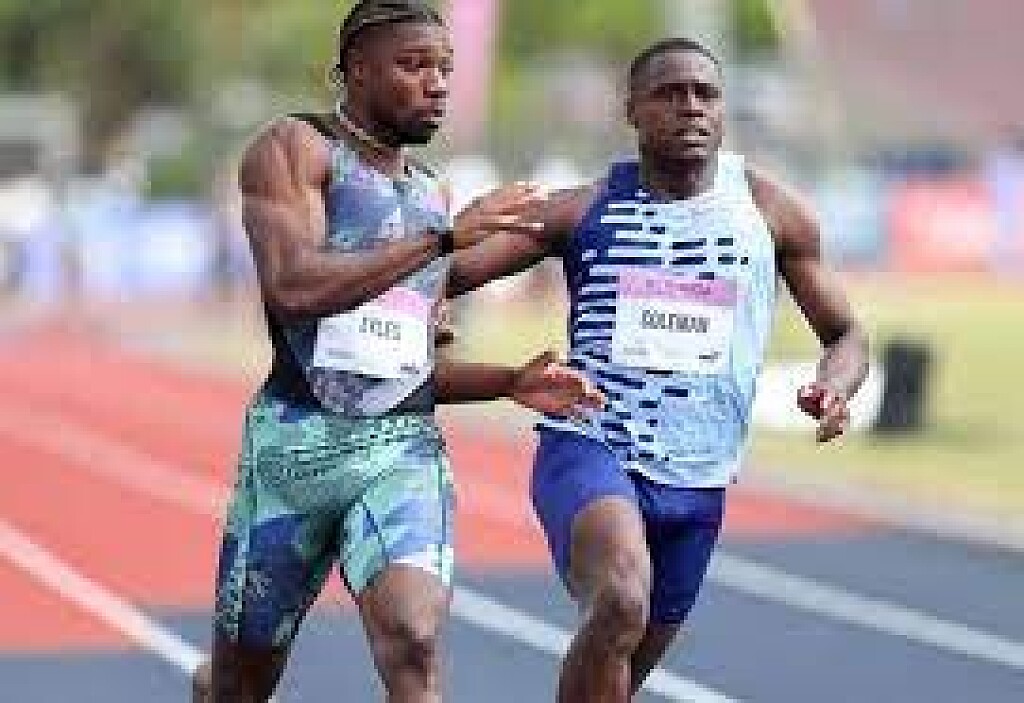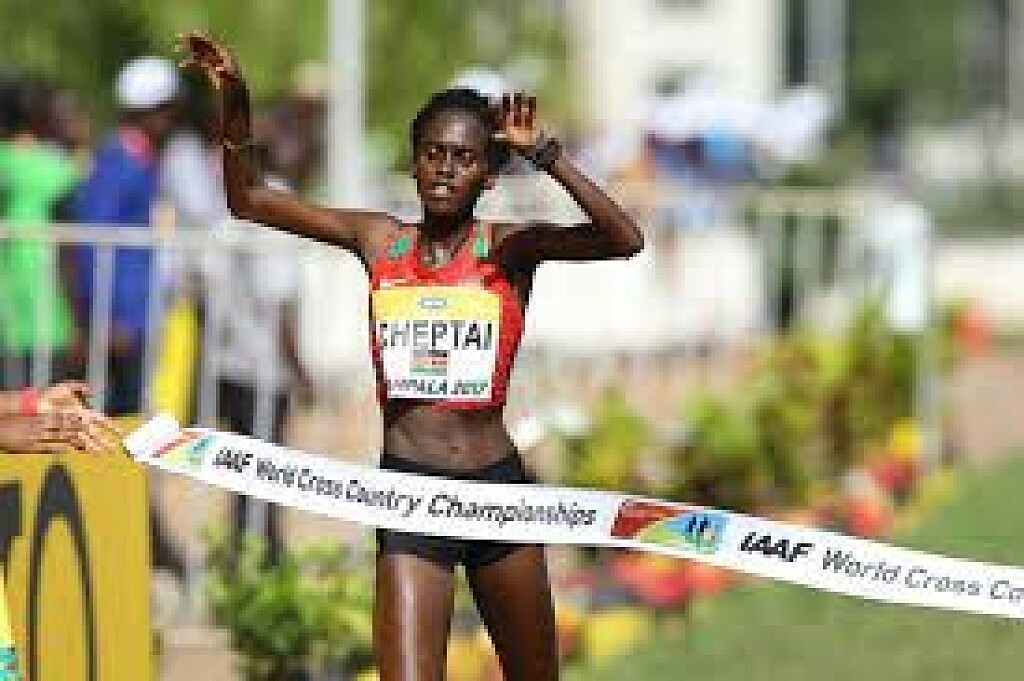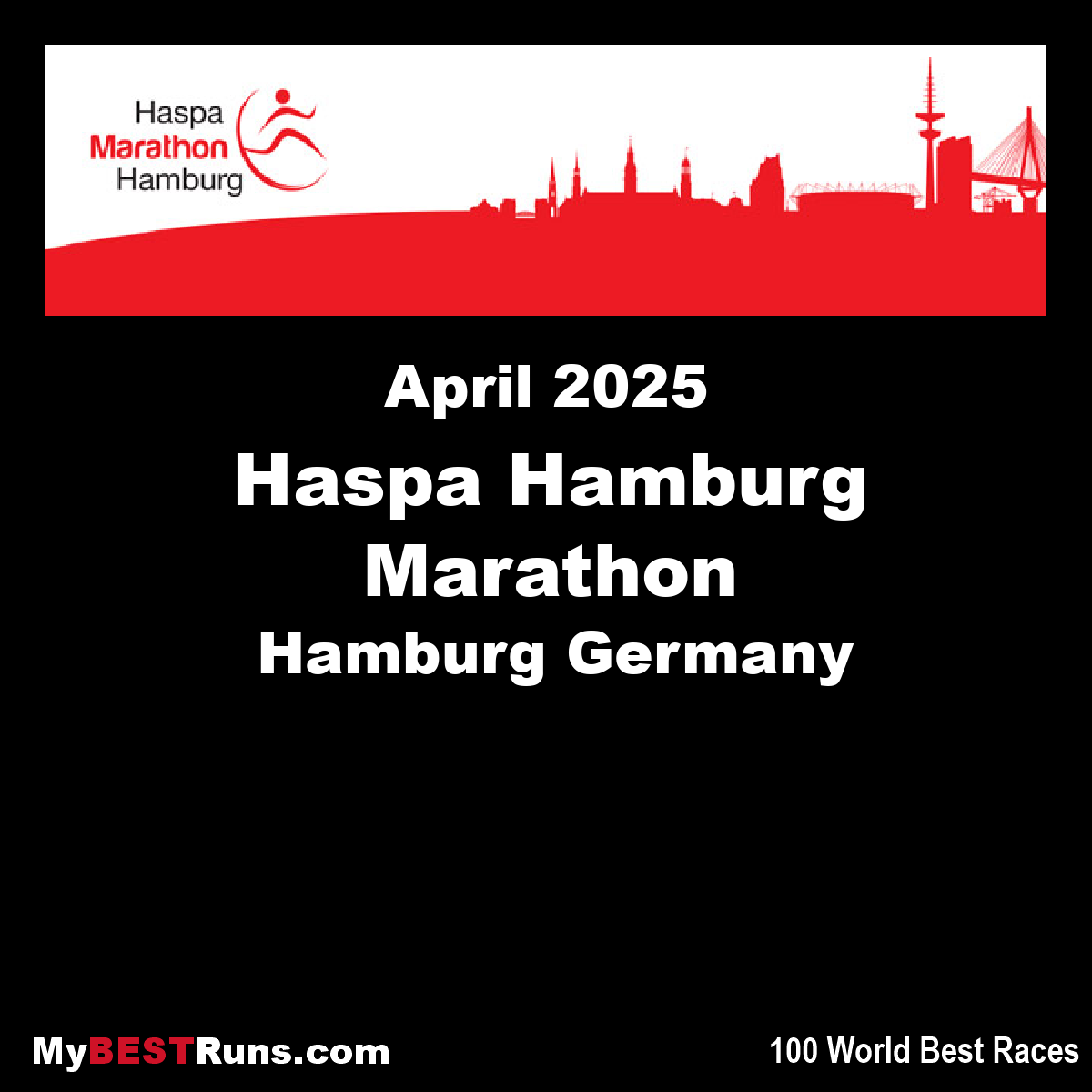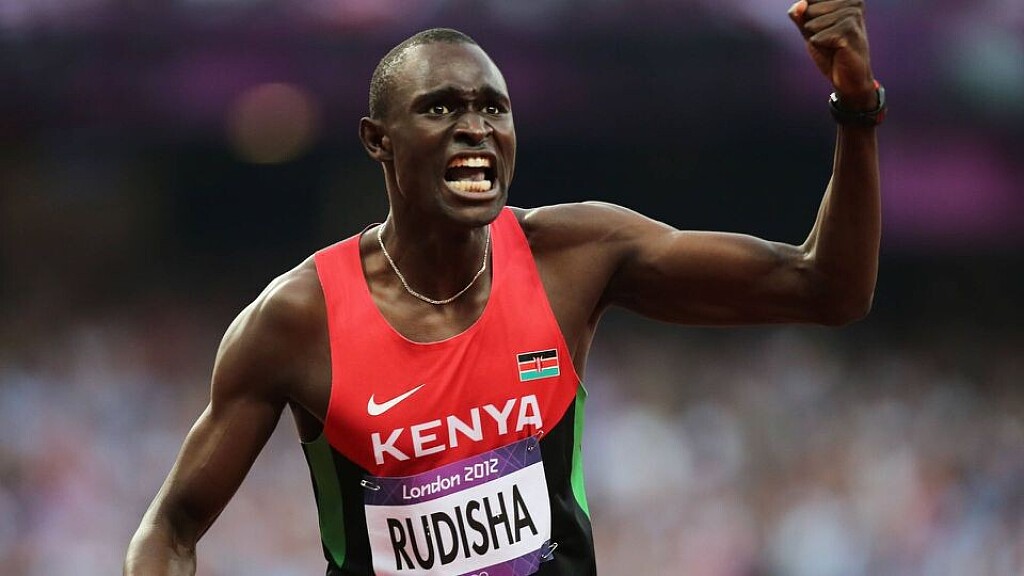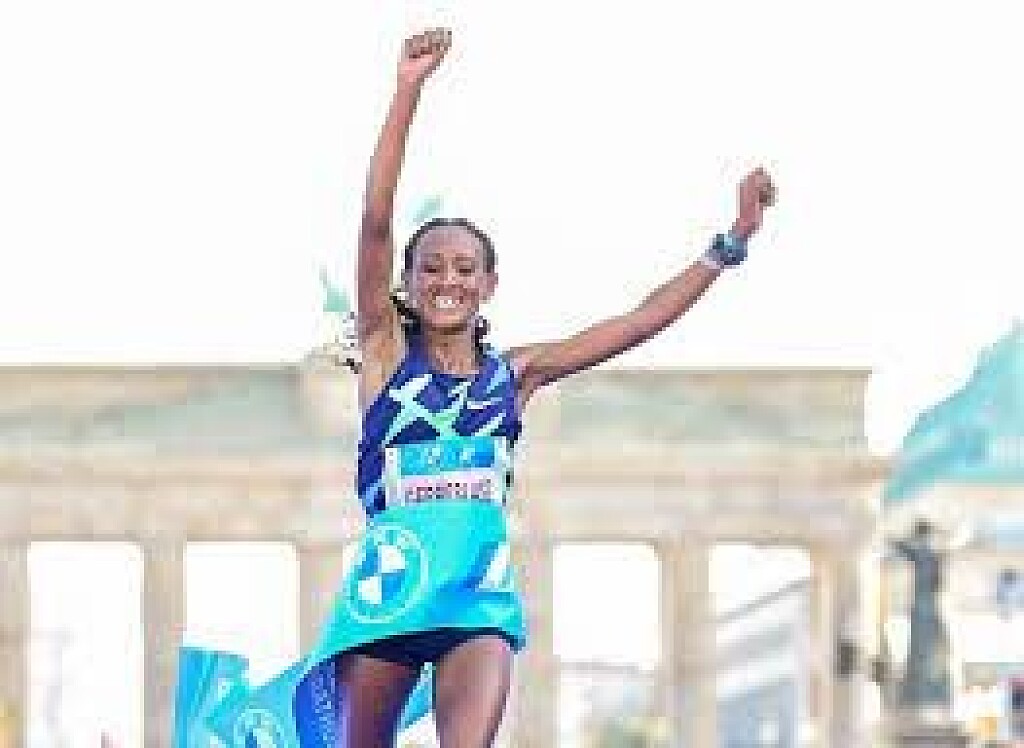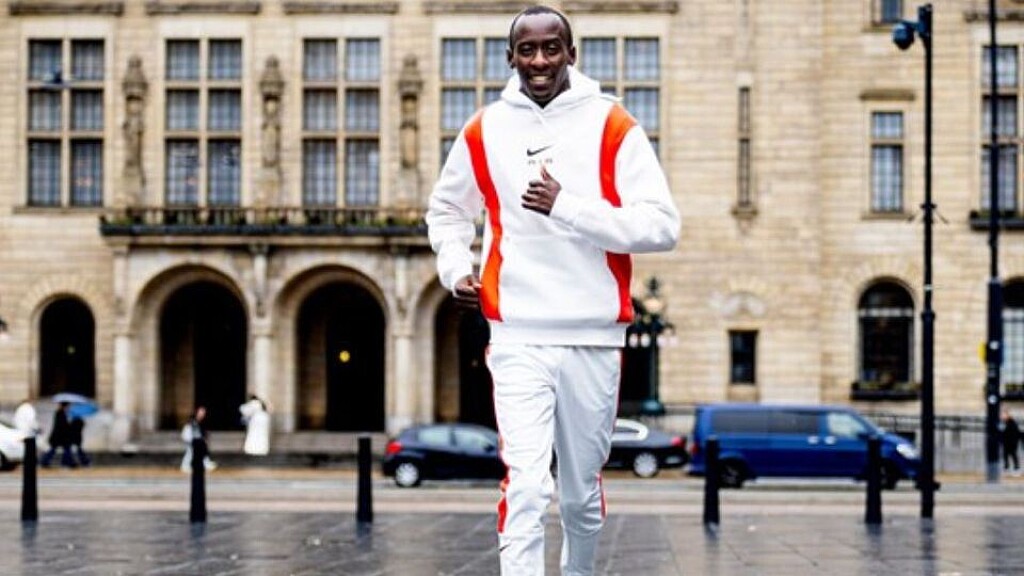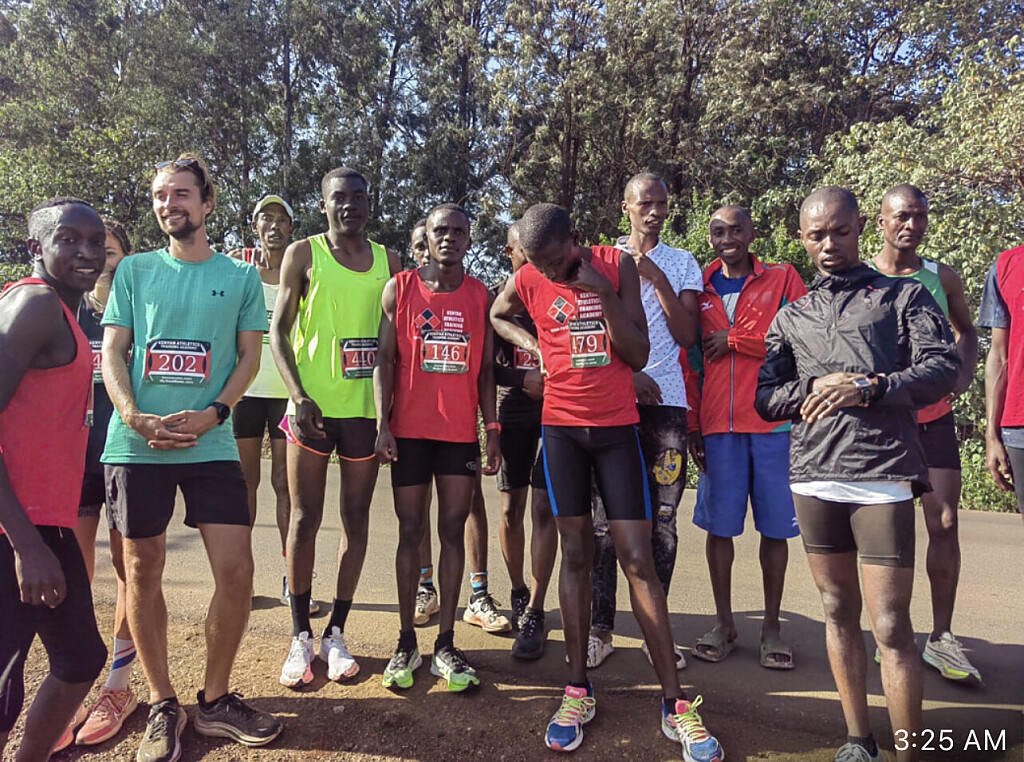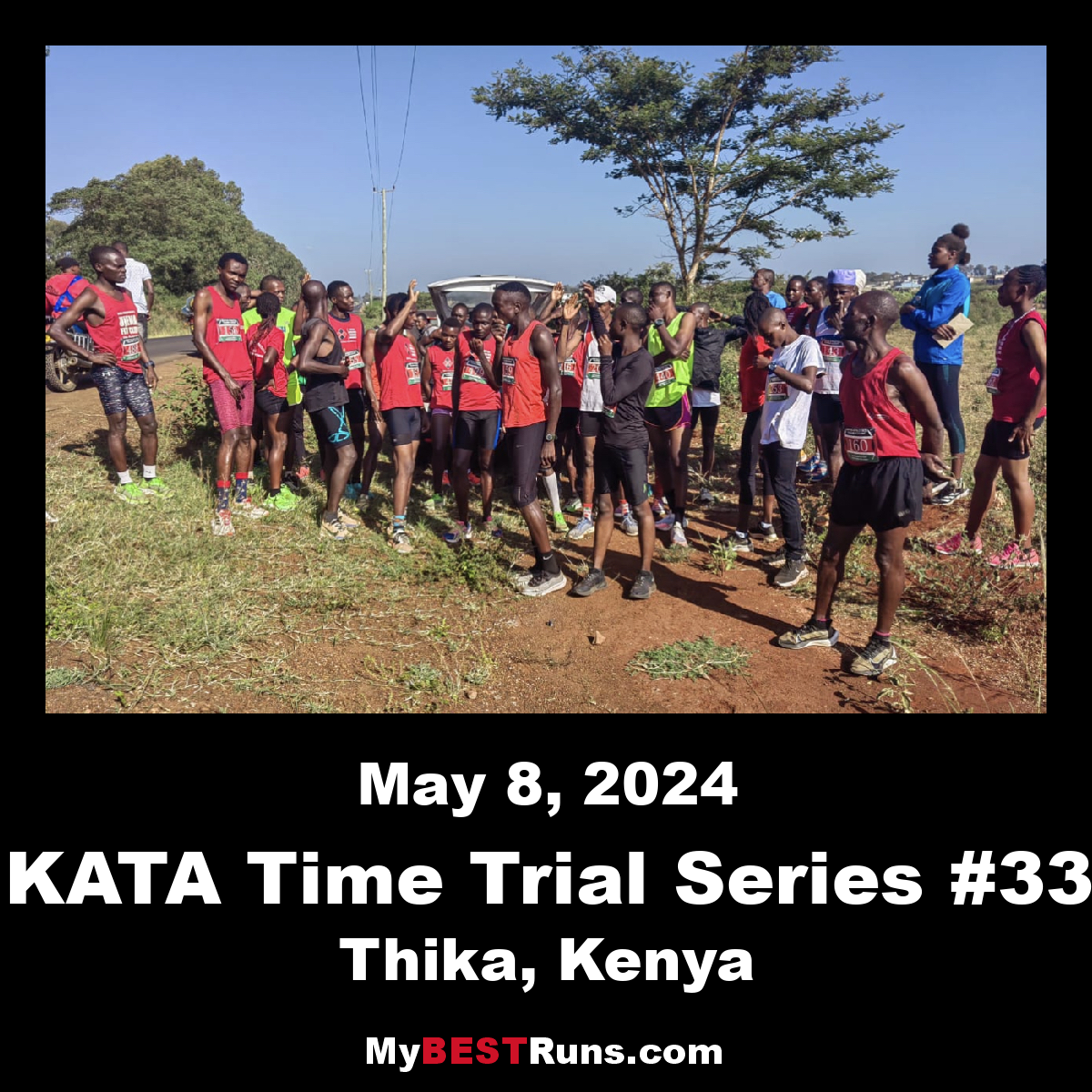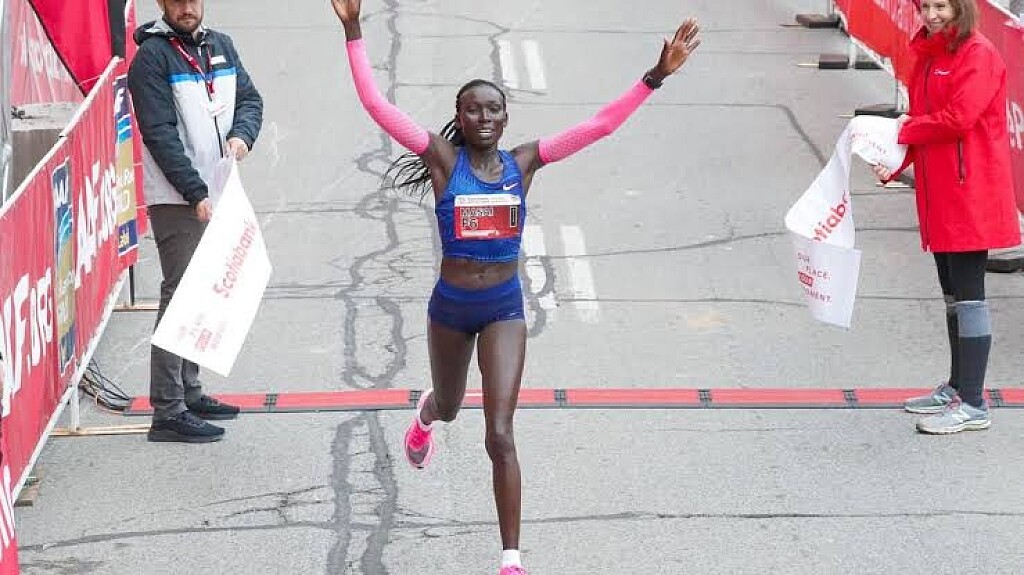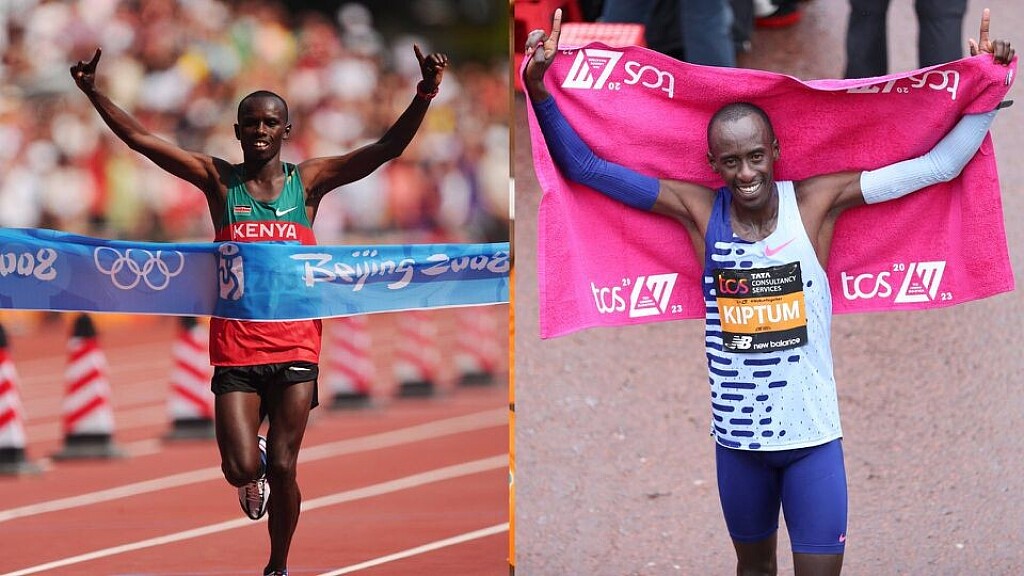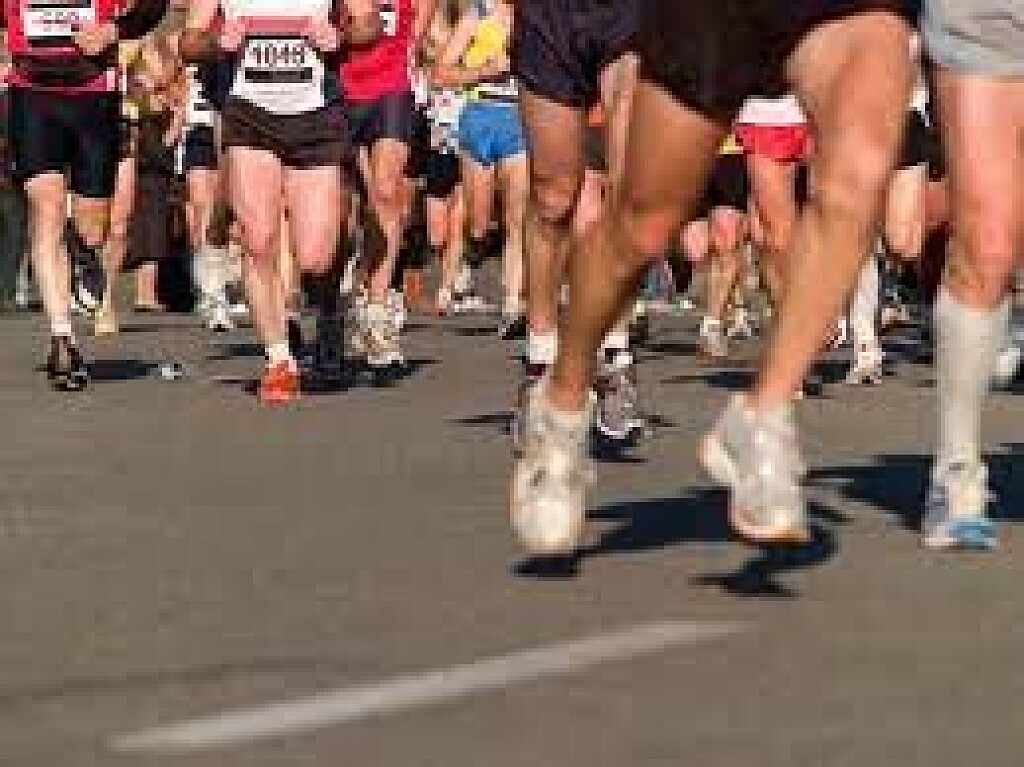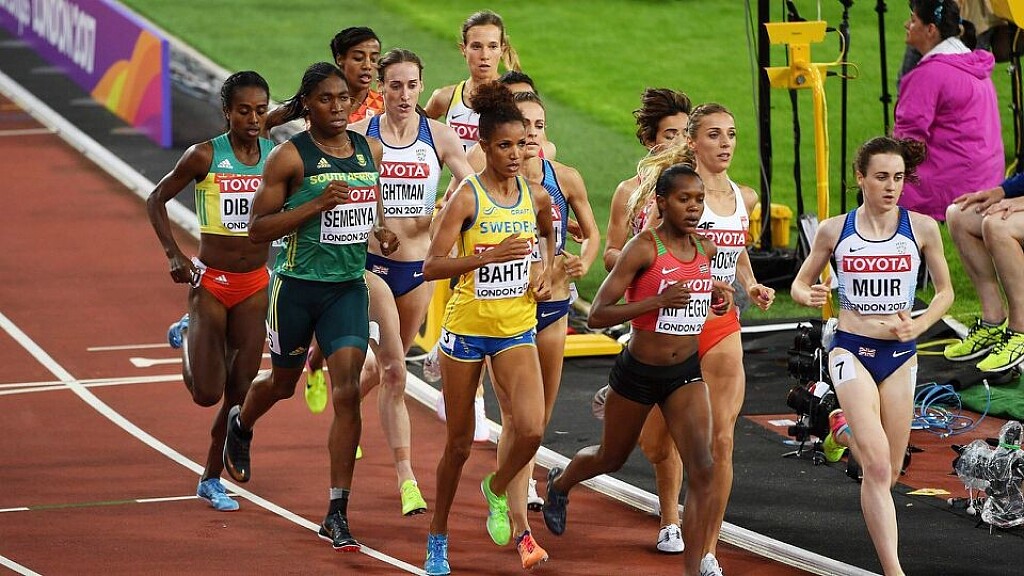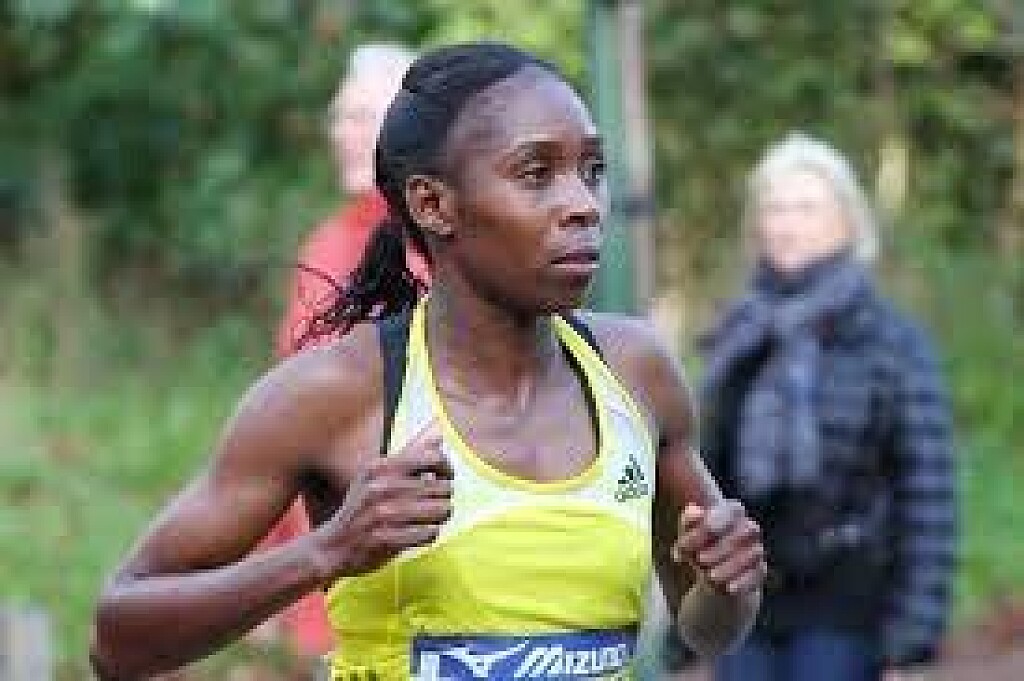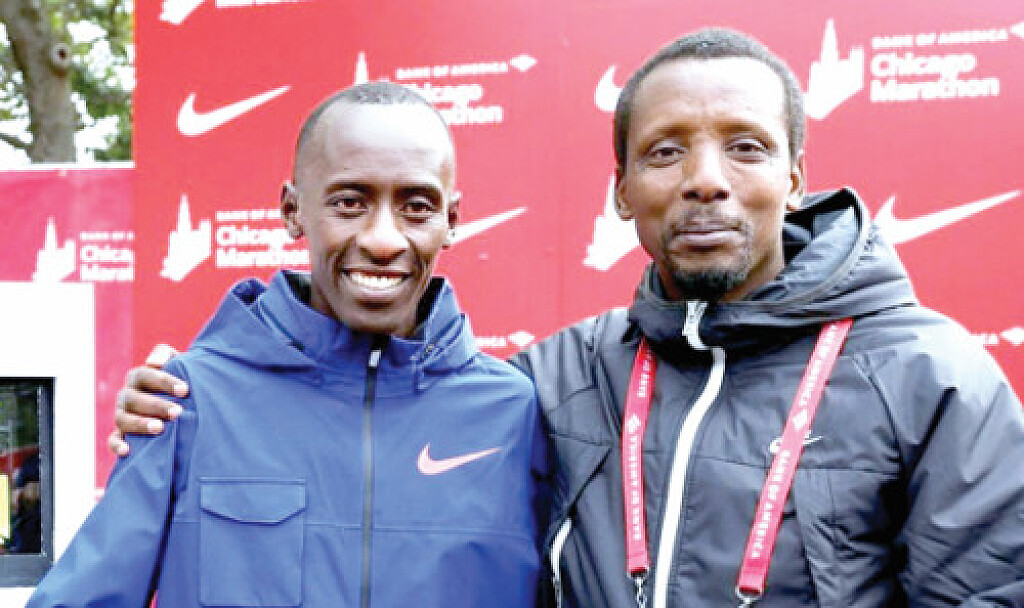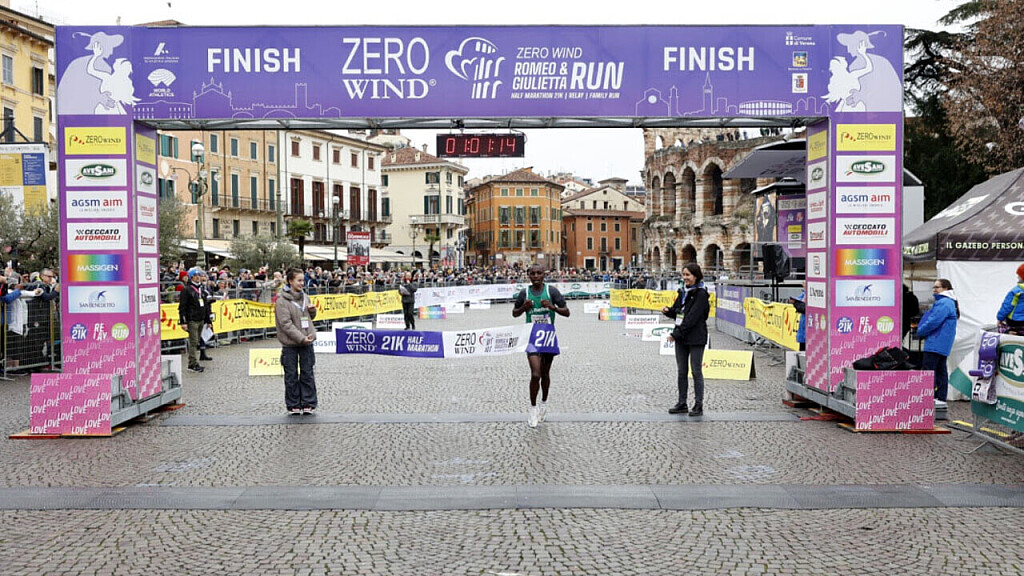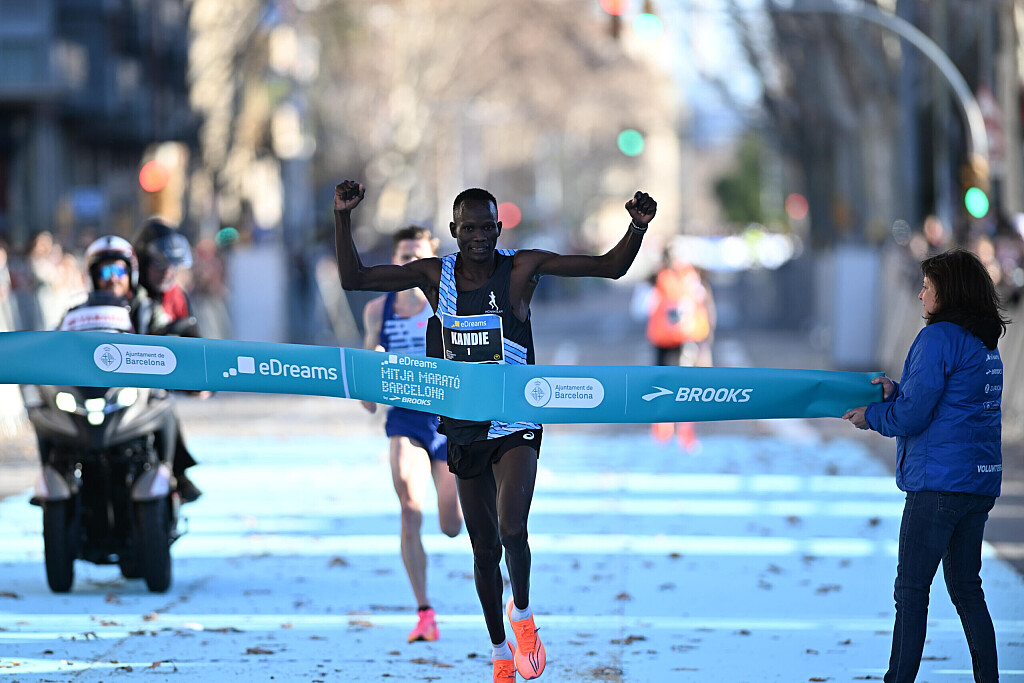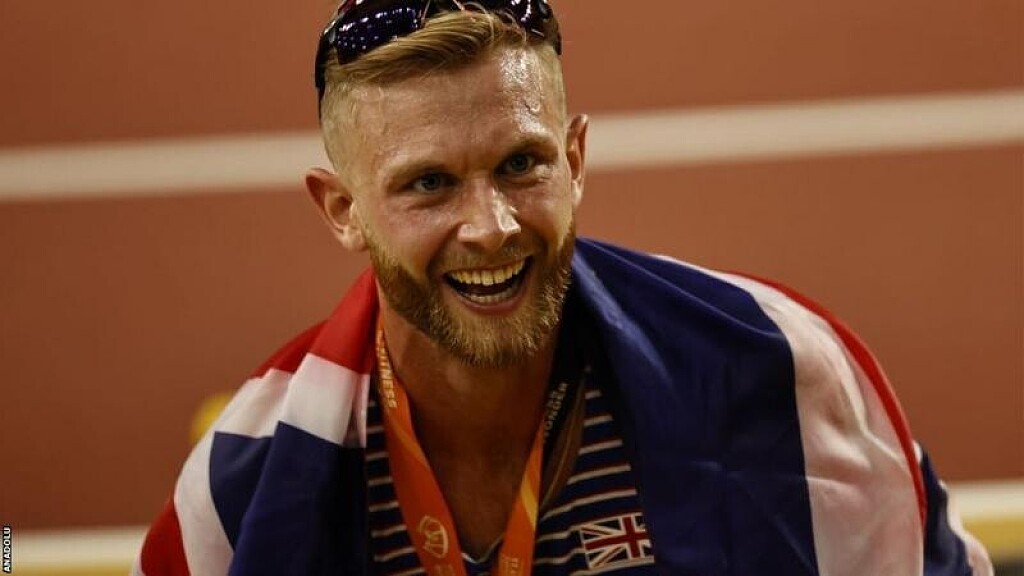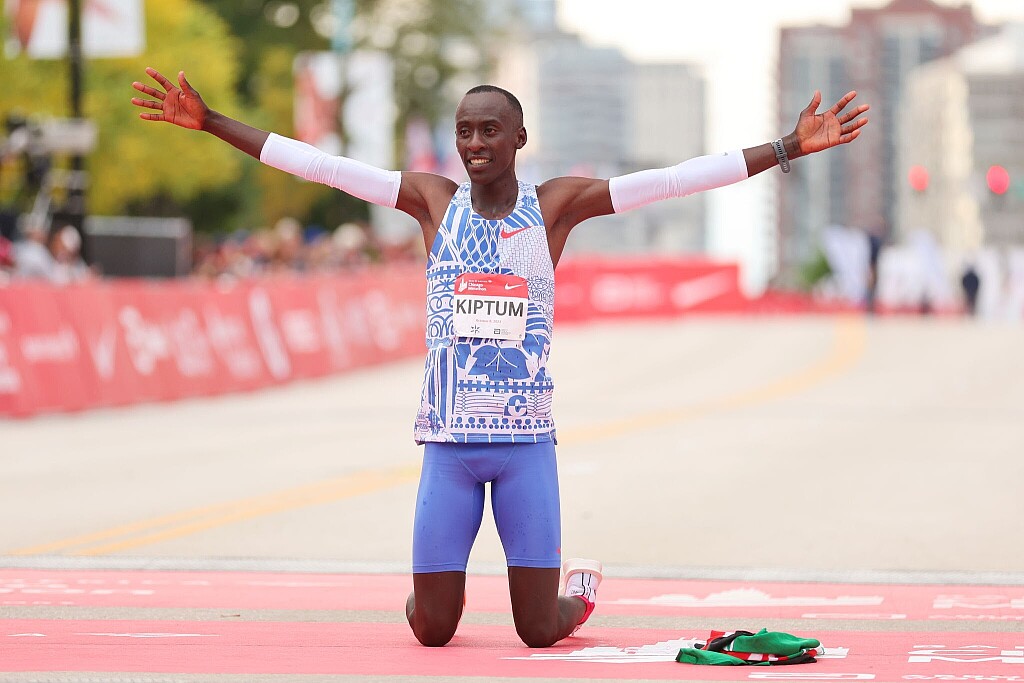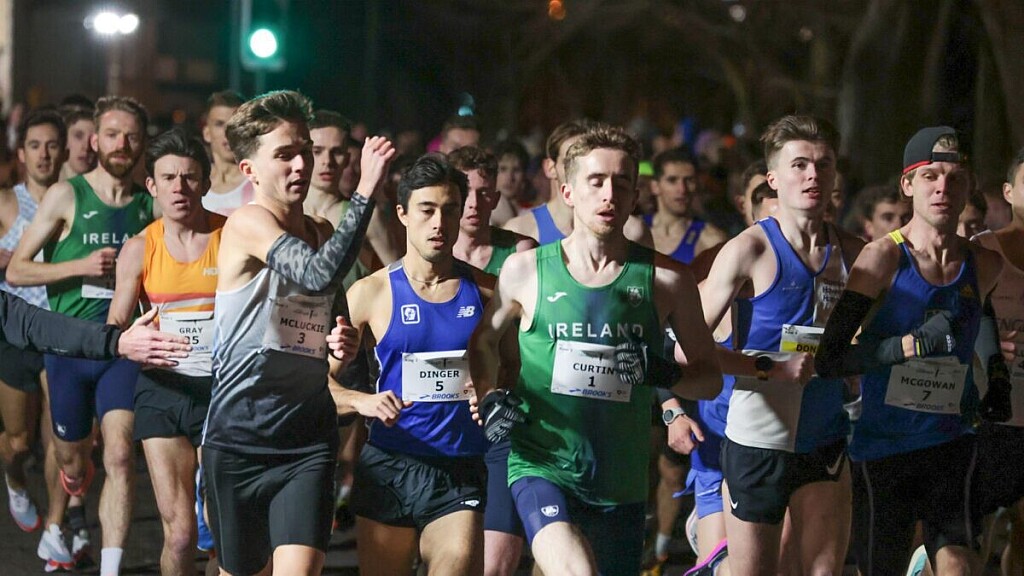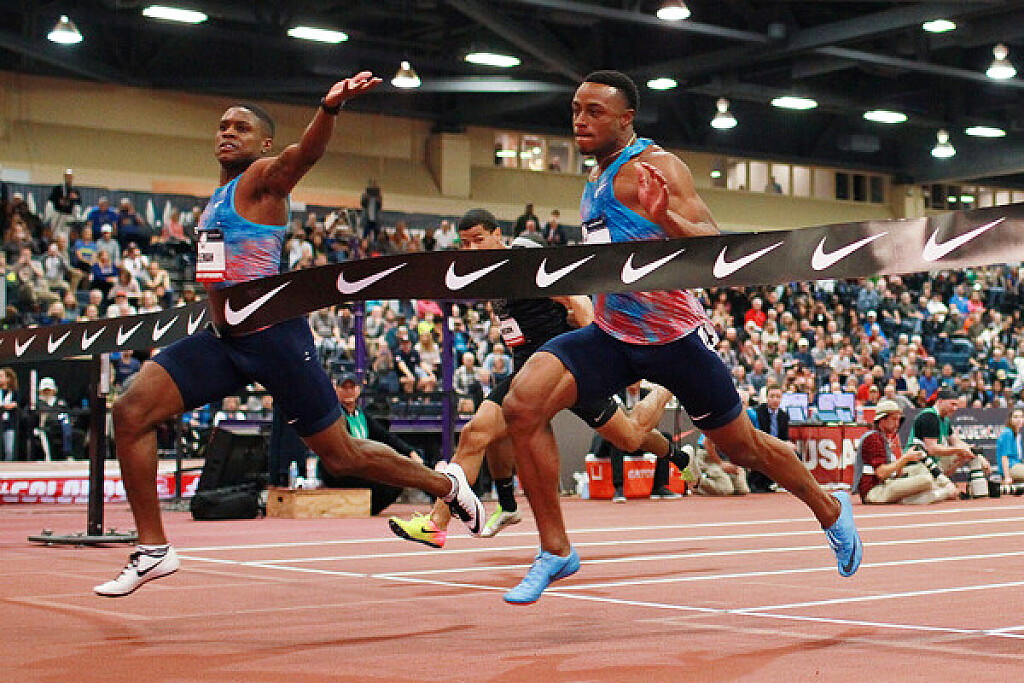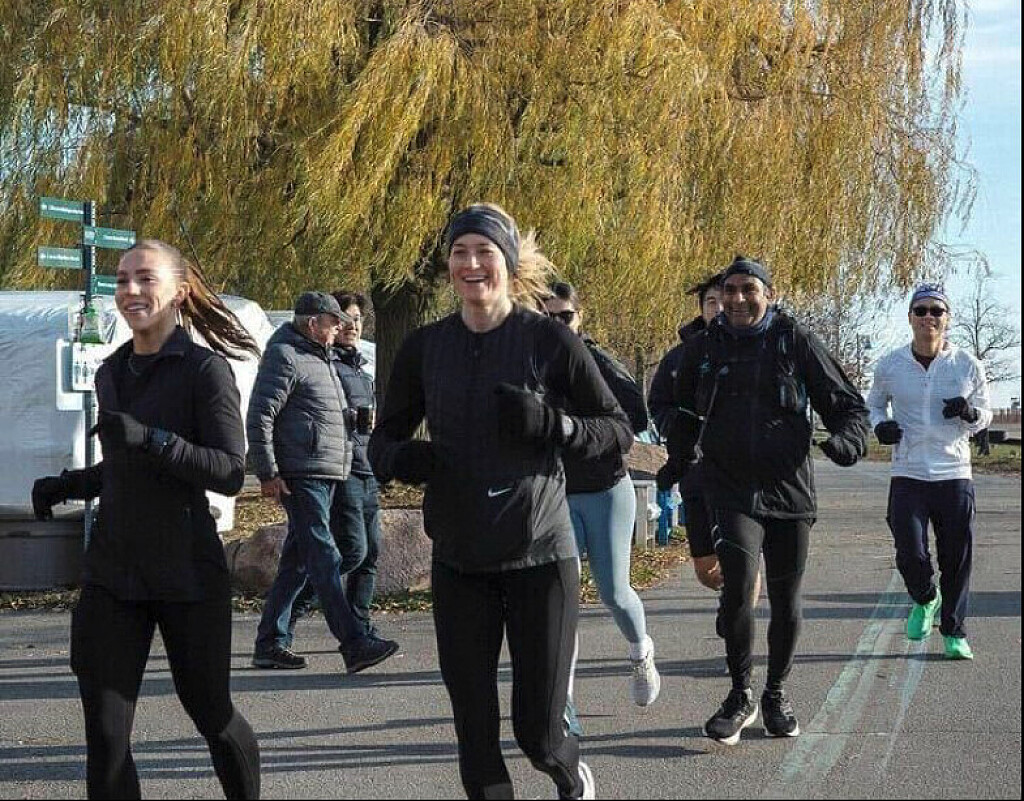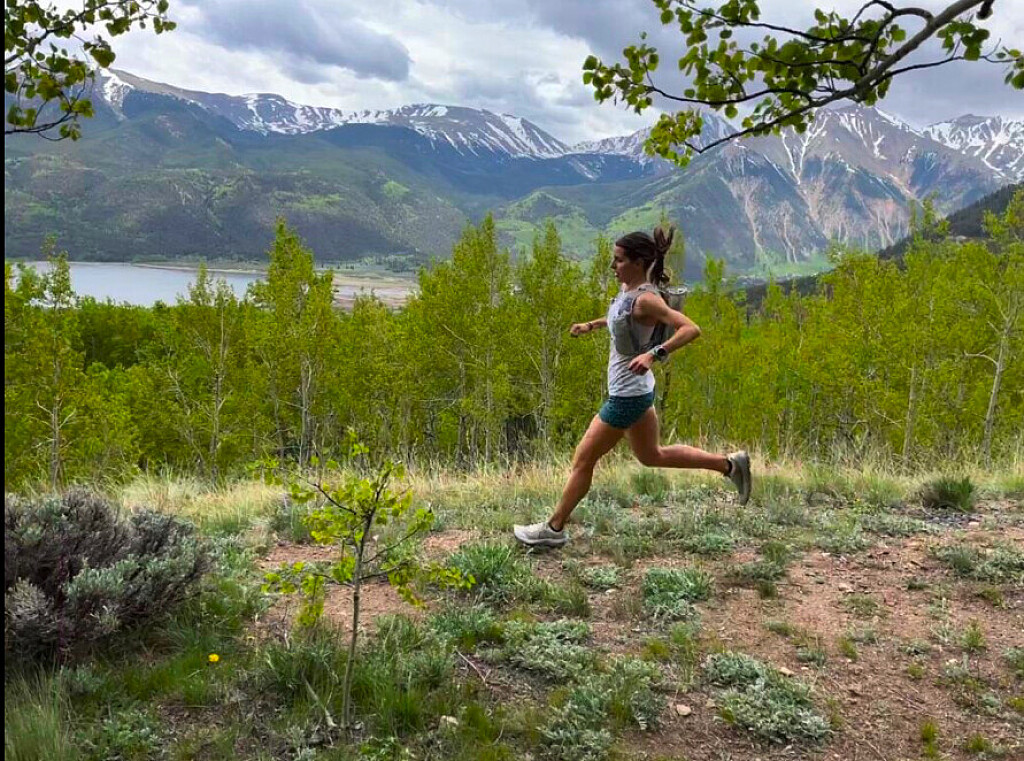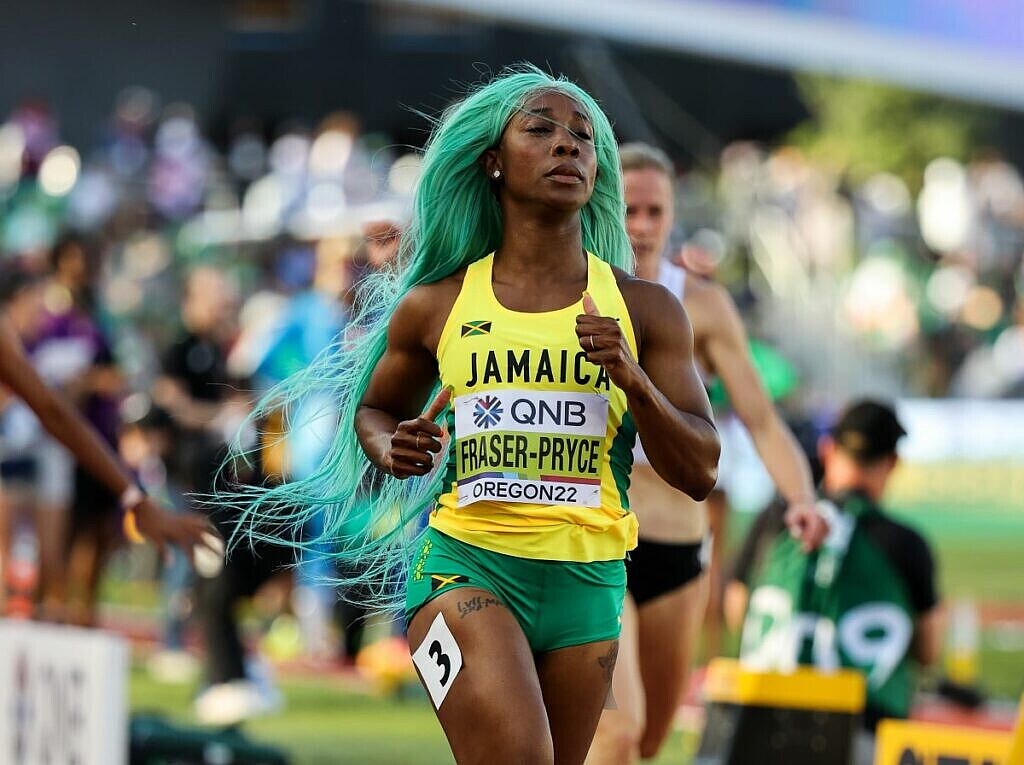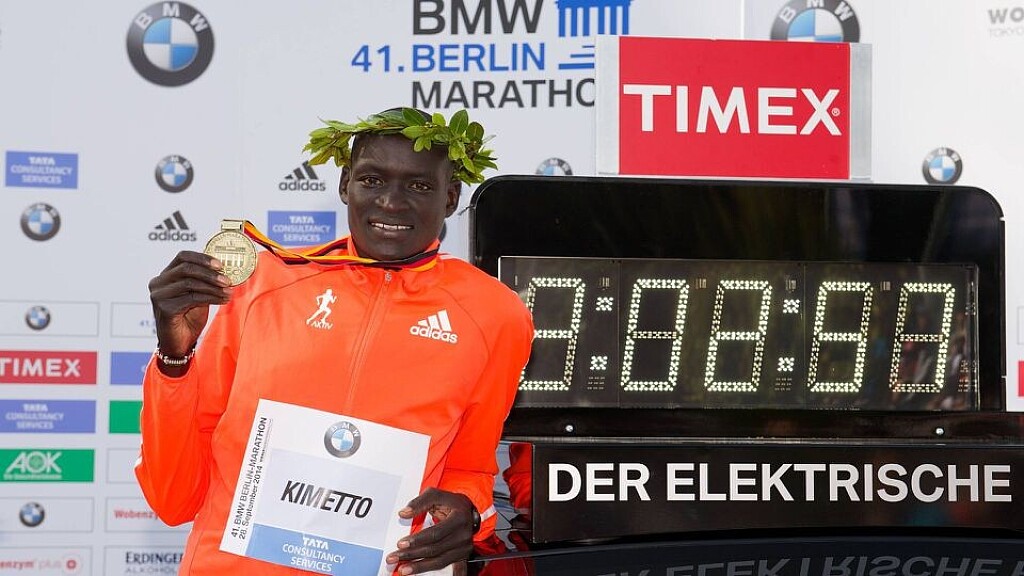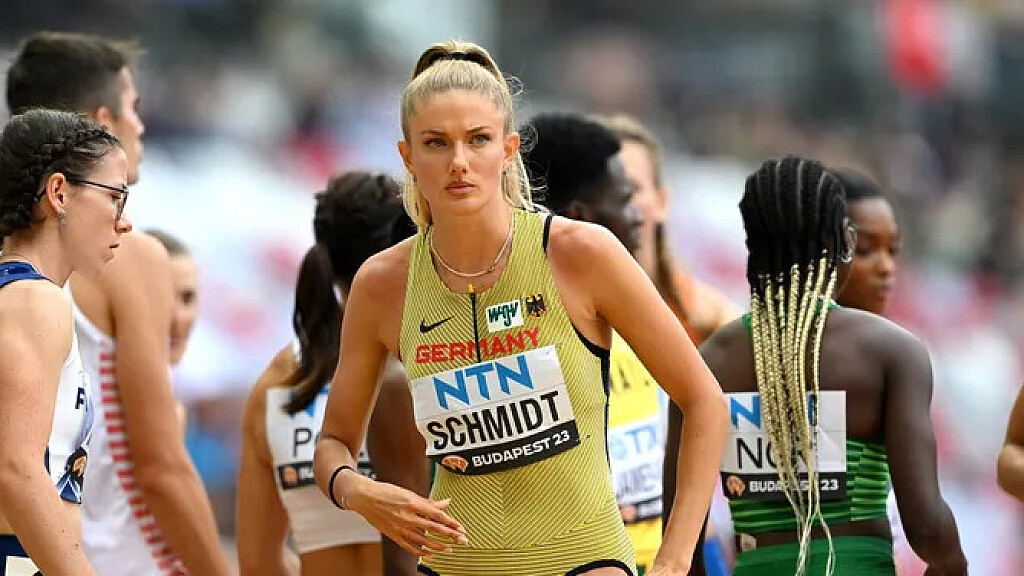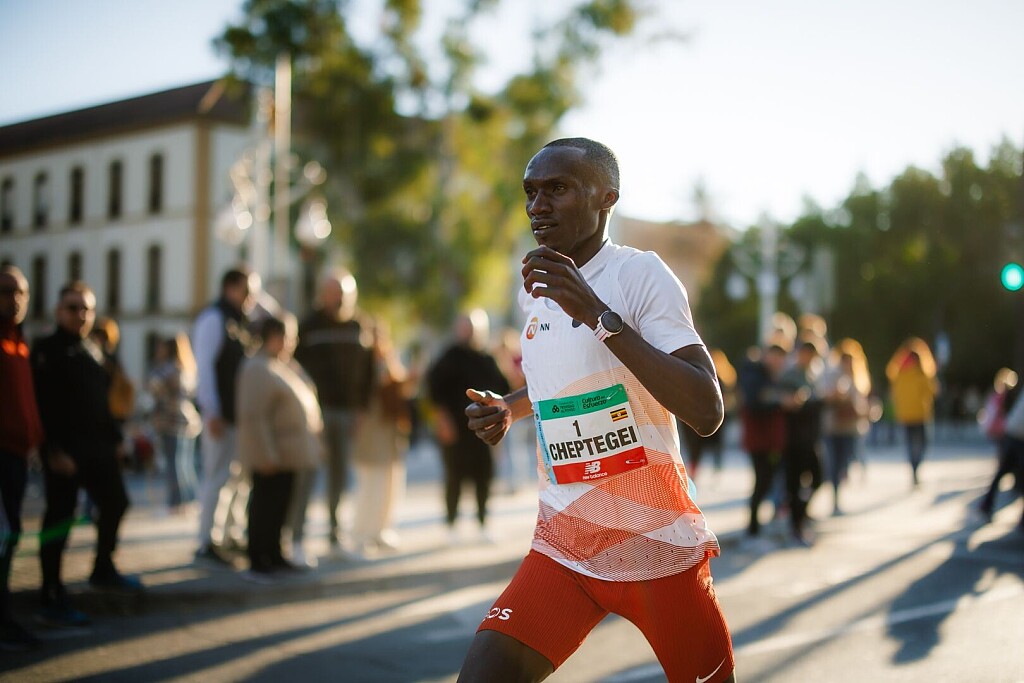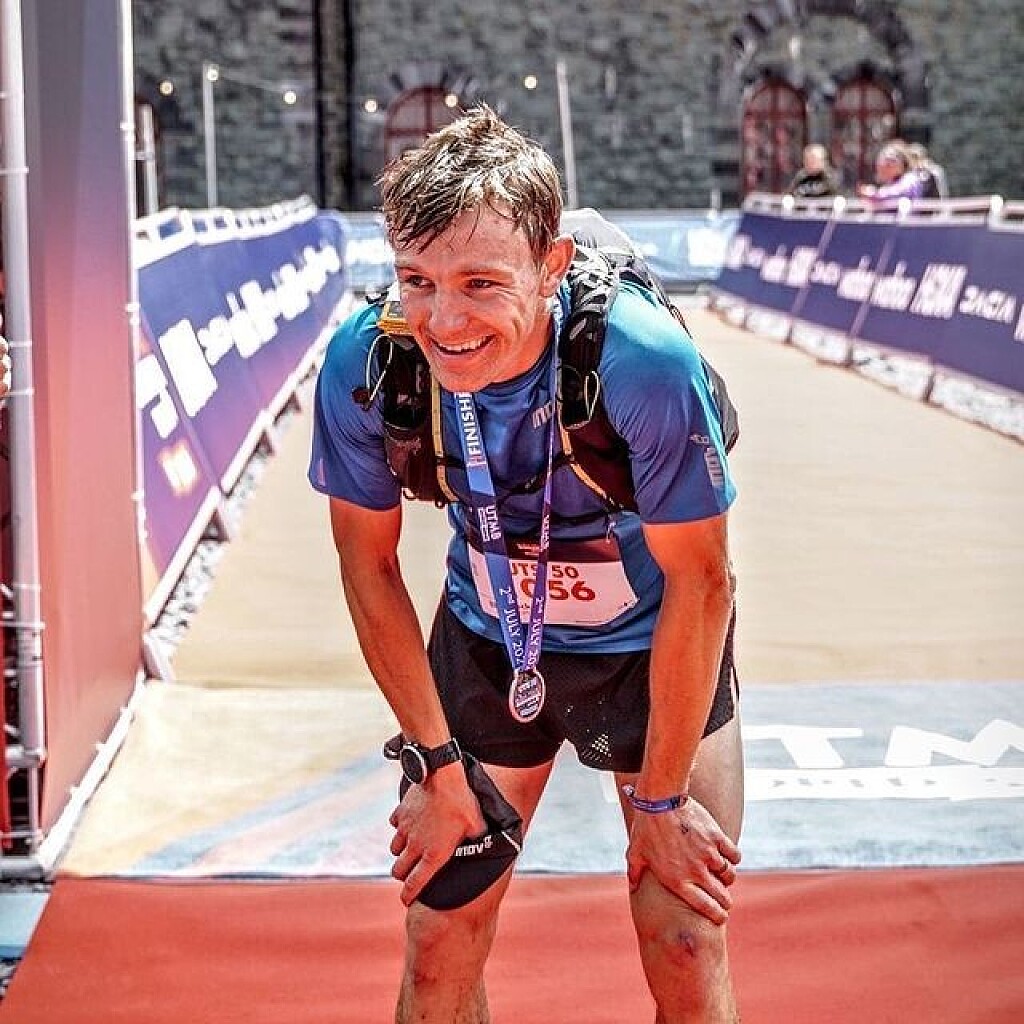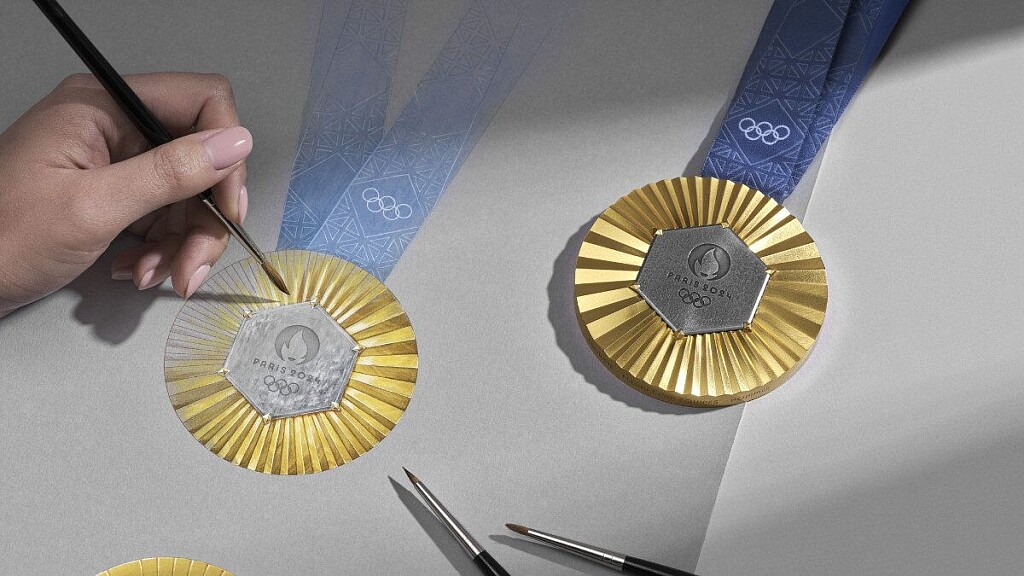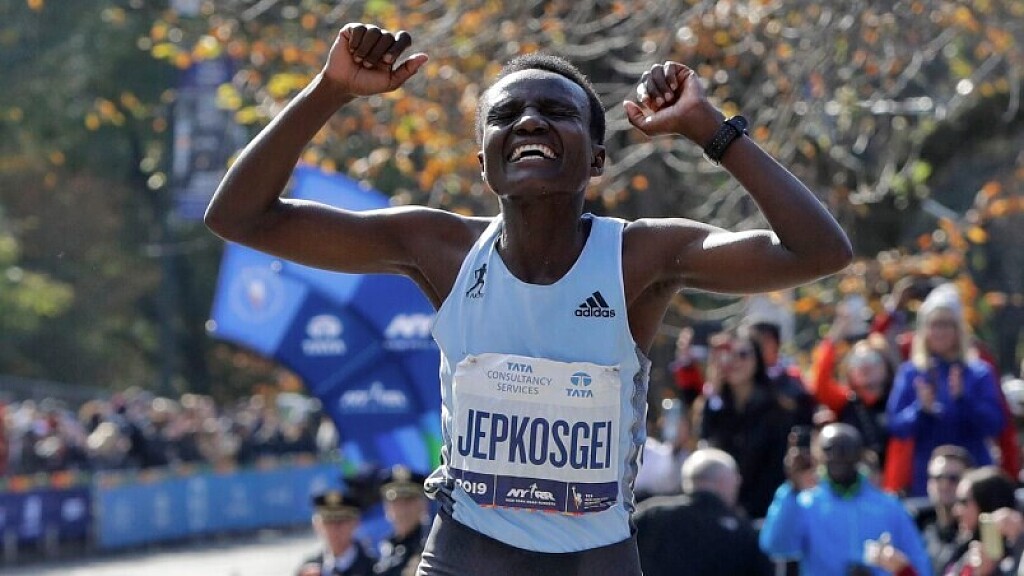Running News Daily
Running News Daily is edited by Bob Anderson in Los Altos California USA and team in Thika Kenya, La Piedad Mexico, Bend Oregon, Chandler Arizona and Monforte da Beira Portugal. Send your news items to bob@mybestruns.com Advertising opportunities available. Train the Kenyan Way at KATA Kenya. (Kenyan Athletics Training Academy) in Thika Kenya. KATA Portugal at Anderson Manor Retreat in central portugal. Learn more about Bob Anderson, MBR publisher and KATA director/owner, take a look at A Long Run the movie covering Bob's 50 race challenge.
Index to Daily Posts · Sign Up For Updates · Run The World Feed
American sprint legend claims top athletes are avoiding each other at major meetings due to low pay
Sprint legend Michael Johnson feels top athletes have been skipping meetings pitting them against their bitter rivals because there is not enough incentive to entice them.
American sprint legend Michael Johnson believes top athletes would not be skipping meetings against their bitter rivals over some flimsy reasons if the pay was good.

Johnson has been an advocate of better pay for athletes, calling on World Athletics to improve on their welfare, while also urging runners to speak out so that they can be taken seriously by the powers that be.
While commenting on sentiments made by multiple world champion Jakob Ingebrigtsen, who claimed he could beat his bitter rival Josh Kerr while blindfolded, a fan said it was highly unlikely that the two runners will clash any time soon because athletics authorities ‘do not like the idea.’

“One of them is definitely pulling out with an “injury” bc [because] there is no way we are going to get this good of a moment from the track and field gods,” said the fans.
Replying to the comment, Johnson said: “If the money goes up, the “injuries” will go down.”
It is another dig aimed at those in charge of the sport, ramping up the pressure on the need for athletes to get better pay so that fans have an opportunity to witness the best competing against each other.
Johnson, who won four Olympic Gold medals and eight World Championship titles, fired one of his many salvos last month when fans appeared to casually dismiss track and field athletes as amateurs.
“The number of people in the replies who think a track & field Olympic and World Champion is an amateur athlete is a major indictment of those in charge of the sport,” Johnson posted on social media after Pole vault Olympic and world champion Katie Moon had questioned why the Greater Cleveland Sports Commission had never nominated a female athlete for the Athlete of the Year award.
Ingebrigtsen stocked the fires on Friday when responding to Kerr’s impressive outing at the 2024 Millrose Games.
Kerr of Great Britain set a new indoor two-mile world record, running 8:00.67 to take down Mo Farah’s time of 8:03.40.
However, Ingebrigtsen seemed to dismiss his performance, claiming he could have beaten him in the two-mile “blindfolded” despite the fact that Kerr defeated him to claim 1,500m gold at the 2023 World Championships.
(02/17/2024) ⚡AMPby Joel Omotto
World 60m hurdles records for Holloway and Jones in Albuquerque
By running the fastest time in hurdling history on Friday (16), Grant Holloway also extended one of the sport’s longest stretches of dominance.
On the first day of the US Indoor Championships in Albuquerque, New Mexico, Holloway ran 7.27* in the heats to break his own 60m hurdles world record before skipping the final hours later because he was already assured of a berth on the US team bound for the World Athletics Indoor Championships in Glasgow next month.
The victory was Holloway’s 60th consecutive at the senior 60m hurdles, part of an astounding, decade-long streak that has left him still the only hurdler all time to dip under 7.30, a feat he has now achieved three times. That longevity and speed ensures he will arrive at Glasgow the prohibitive favourite to win a second straight world indoor gold medal – what he called the “main goal” of this season.

“I knew it was going to be a good one after I got out of the blocks,” Holloway said. “My main thing was just to continue going through with my steps and my rhythm. I wasn’t too upset about it but, you know, 7.27 at a nice track is always a good thing.”
With Holloway a spectator for Friday’s final, Trey Cunningham’s comeback season continued with a personal best 7.39 to claim his first national indoor title. The silver medallist at the 2022 World Athletics Championships in Oregon, Cunningham was hobbled by an injured back and hamstring in 2023, but has returned to form.

Holloway’s world record run came only 20 minutes after another. Tia Jones equalled the women’s world record in the 60m hurdles by clocking 7.67* in the heats to match the mark set by Devynne Charlton of The Bahamas just five days earlier at the Millrose Games.
After crossing the finish line and bouncing off the facility’s protective padding, Jones glanced at the clock and initially turned away – before doing a double-take when recognising she had just equalled Charlton’s mark.
In the final more than two hours later, Jones nearly matched her record yet again. Her winning time of 7.68 was 0.10 ahead of Jasmine Jones.
They were not the only favourites to win convincingly on the championships’ first day.
World-leading marks were set by Daniel Haugh, whose weight throw of 26.35m also broke the US record; Chase Jackson, who led the shot put from her first attempt and won it on her third with a mark of 20.02m; and long jumper Tara Davis-Woodhall, who described herself as “shocked” after leaping a personal best of 7.18m. Despite acknowledging that she was struggling with her approach on her final four jumps, Davis-Woodhall’s mark moves her to No.6 on the all-time list indoors.
“I think we have more in the tank,” said Davis-Woodall.
In the pole vault, Chris Nilsen set a US Championships record with his winning vault of 6.00m, ahead of Sam Kendricks, who cleared 5.95m. Nilsen missed once and Kendricks twice at a US record height of 6.05m, before Nilsen raised the bar to 6.10m and missed two more attempts at the record. In one of the night’s few instances where a top contender stumbled, KC Lightfoot finished eighth on 5.65m.
Elle St. Pierre, the only racer in the 3000m with the World Indoor Championships standard, ran alone for much of the final to win in 8:54.40, nearly nine seconds ahead of second-placed Josette Andrews. Countries are allowed two entrants per event for the World Indoor Championships – unless they also have a wild card entry in certain disciplines due to athletes winning the World Indoor Tour in 2023 or 2024, as is the case for Holloway – and competitors must either own their event’s qualifying standard or, if not, advance via world ranking.
Expecting a tactical race, St. Pierre, who was accustomed to racing at Albuquerque’s altitude after months of training at elevation in Arizona, took control of the pace early. If she qualifies for the World Indoor Championships in the 1500m as well, St. Pierre indicated she “would just focus on the 3km” in Glasgow.
Like St. Pierre, Yared Nuguse entered his own 3000m final as the only racer already owning the standard for the World Indoor Championships. Unlike St. Pierre, he waited out a slower, more strategic race with his kick to win in 7:55.76.
Running in fifth through 1400m, Nuguse moved up to stay patient in second until taking the lead entering the bell lap. He never let it go by closing the final 400m in 54.39 to edge Olin Hacker, who was second in 7:56.22. Nuguse set the US mile record last year, but said he and his coach had aimed for the 3000m in Glasgow out of a desire to maintain the strength he’d accumulated during winter training.
Will Nuguse race Josh Kerr in Glasgow, in what would be a showdown of top 1500m medal contenders stepping up to a longer distance? Kerr, fresh off running 8:00.67 for two miles at the Millrose Games, has not tipped his hand.
“Honestly, I like the suspense factor,” Nuguse said. “Maybe he’ll be there, maybe he won’t. It’s great.”
Vashti Cunningham’s reign in the high jump continued, needing only three jumps and never missing en route to winning her eighth consecutive indoor national title at 1.92m. Cunningham will enter Glasgow in position to add to her gold and silver medals earned at previous World Indoor Championships, as her season’s best of 1.97m is tied for third-best in the world this season.
The men’s high jump saw another repeat champion, as Shelby McEwen leapt 2.28m to retain his title. McEwen has not yet met the World Indoor Championships standard of 2.34m, but could advance based on world ranking.
In other finals, Chris Carter won the men’s triple jump on his last attempt, though his mark of 16.49m remains short of the world indoor standard. Nick Christie claimed the men’s 3000m race walk in 11:56.06, and Miranda Melville claimed the women’s title in 13:55.24.
(02/17/2024) ⚡AMPby World Athletics
2024 USAFT Indoor Championships
With the exception of the Combined Events, which will be selected by World Athletics invitation, the 2024 USATF Indoor Championships scheduled for February 16 – 17, 2024 will serve as the selection event for Open athletes for the 2024 World Athletics Indoor Championships. All athletes are required to complete team processing in order to be eligible for selection to a...
more...Doha Marathon; Uganda’s Solomon Mutai won the elite men’s race and Kenyan long-distance runner Valary Jemeli Aiyabei in the women’s elite race
Solomon Mutai of Uganda emerged victorious in the top men's race of the 2024 Doha Marathon presented by Ooredoo on Friday morning. The bronze medalist from the 2015 Beijing Athletics World Championship finished the 42-kilometer event in two hours, twelve minutes, and forty-eight seconds. He finished ahead of Mesfin Negus of Ethiopia (2:13:12) and Awet Habte Ghebrezghiabher of Eritrea (2:13:00).
In the women's elite event, Kenyan long-distance runner Valary Jemeli Aiyabei triumphed. With a timing of 2:23:38, the seasoned marathoner—who has taken home gold in marathons at Barcelona, Belgrade, Valencia, Prague, Beijing, and Frankfurt—added Doha to her list of accomplishments.

Rediet Daniel Molla of Ethiopia placed third in 2:26:25, while her countryman Joan Kipyatich came in second in 2:23:45.
On that day, almost 13,000 competitors competed in a variety of races across varying distances. There were races in the full, half, 10 km, 5 km, and 1 km distances.

This year's tournament featured 25 participants from across the world and the Olympics.
The races began at 6.15 a.m. at the Hotel Park and ended at the starting point after taking a gorgeous course along the magnificent Corniche.
A total of QAR 500,000 in prize money was awarded to the victors of the Ooredoo Doha Marathon.
(02/17/2024) ⚡AMPOoredoo Doha Marathon
We started the Ooredoo Doha Marathon as a way to bring people together, encourage them to live healthier lifestyles and give back to the community. Funds raised by entry fees to the Ooredoo Doha Marathon will be donated to a range of worthy charities in Qatar. The marathon features four courses for all abilities of runners including a full marathon,...
more...A Riveting New Series Shows the Insane Workouts of Elite Runners—Completely Unfiltered
Every week, TRACK: All-Access reveals the raw training of star athletes like Conner Mantz, Clayton Young, and Elle St. Pierre.
“You just watched an attempted murder,” says Graham Blanks as he catches his breath on a pole vault mat at the Harvard University indoor track.

His coach, Alex Gibby, prescribed Blanks a lengthy session. Three sets of 12 minutes at threshold pace (4:49 to 4:40 mile pace), followed by four fast 300-meter reps on the track. Blanks ripped the last interval in 41.9 seconds.
The 2023 NCAA Cross-Country champion—along with his teammate, Maia Ramsden—is the subject of an episode of the new running YouTube channel TRACK: All-Access.
The channel is the latest project from Gordon Mack, who spent the previous decade working at FloTrack and MileSplit, where he wrote articles, covered meets on-site, and co-hosted the FloTrack Podcast. Last year, after a career change, Mack got the idea of doing weekly workout videos. Now, he’s diving head-first into the venture, traveling across the country to create content with some of the biggest names in running.
Mack posted his first video—3-mile repeats with marathoners Conner Mantz and Clayton Young—to popular reception. Since then, he’s been releasing at least one episode every week and has featured the likes of Stanford University stand-out Nico Young, high school star JoJo Jourdon, and 1500-meter Olympian Elle St. Pierre.
So far, he says it’s been a success.
“I’ve been pleasantly surprised and blessed and happy and thankful that people are responding positively,” Mack says. “When you start something, you have in your head the idealistic response, but you actually don’t know if it’s gonna happen until you put it out there. And fortunately, people seem to really like the content.”
Mack plans on releasing videos every Tuesday morning, but for the first few weeks, he’s uploading another video on Thursdays to give the channel some momentum. So far, TRACK: All-Access has over 7,000 subscribers, and the workout video with Nico Young has racked up more than 83,000 views.
While YouTube comments can quickly become crude, viewers seem to welcome Mack’s content. Sometimes they’ll offer feedback or encourage Mack to film episodes with specific teams. Some users have even joked that workout videos are prophetic.
“Babe wake up! All Access just posted another workout video ? ?” @sofodachimp2776
“Thank you for the back stage pass. I feel so honored to be part of this team.” @deviljames
“I’m starting to think track all access has the script” @orangepeanutyguy6569
The essence of the channel is in its name: access. Mack believes that track and field fans—himself included—crave more behind-the scenes content from athletes, outside of competition or media appearances. “We love watching them race, run records, and win championships,” he says. “But we also really love to see how they did it. And a lot of that is not really shown.”
After working in the running industry for over a decade, Mack has accumulated a rolodex of contacts with professional athletes and coaches. So far, the videos have focused on distance runners, but Mack plans on incorporating sprinters and field events into the mix as well.
Along with access, Mack wants the videos to be in-depth. Instead of editing the raw footage down into highlights, he prefers to show every rep of a session— even the more monotonous parts—to paint a full picture of training. The relationships between the athletes and their coaches are just as important, too. “[I’m] trying to give the user a viewpoint as if they got to watch the practice in full time for that full hour-and-a-half session,” he says.
Mack is a one-man show so far. He films and edits the entirety of the videos, and he has to get creative sometimes to keep up with the runners. When he was initially filming Conner Mantz for a workout in Provo, Utah, Mack sped alongside him on a bike—until he got a flat tire. He came back two days later with a car.
Although TRACK: All Access is still in its infancy, this isn’t a part-time job for Mack—this is his life for the foreseeable future. He plans on supporting the channel with YouTube advertising revenue, as well as working with brands on potential sponsorships down the line. Consistency is a cornerstone of the channel, and Mack plans to keep his output high.
“At the end of the day, it’s a very simple concept,” he says. “It’s workout videos with the best elite athletes in the varying degrees of our sport and the varying disciplines of our sport. And, hopefully, if I put out good content, people will like it.”
TRACK: All-Access tentative schedule
February 15—Boston University men (Distance)
February 20—Sophia Gorriaran (Harvard)
February 22—Northern Arizona University men (Distance)
February 27—BYU men (Distance)
February 29—Northern Arizona University women (Distance)
March 5—Kenzie Doyle (UMass Lowell)
March 7—Arizona State University men (Sprints)
March 12—Courtney Wayment/Anna Camp Bennett (Taylor Made Elite)
(02/17/2024) ⚡AMP
by Runner’s World
Can Strength Training Protect You from Running Injuries?
The logic is good and the anecdotes are common, but the evidence is shakier than expected, researchers find
The best way to prevent running injuries isn’t to waste your time stretching or searching for the perfect shoe; it’s to get strong. That’s where the zeitgeist has been headed over the past decade or so, as old ideas about injury prevention have produced disappointing results in studies. The rationale for strength training, by contrast, is seemingly unassailable: injuries occur when more stress is applied to a tissue than it can absorb, so strengthening the tissue should ward off injuries.

But that claim, too, should be treated with caution, according to a new systematic review of exercise-based prevention programs for running injuries. In Sports Medicine, a research team led by Richard Blagrove of Loughborough University in Britain sums up the available evidence. Blagrove, for the record, is the author of Strength and Conditioning for Endurance Running and has worked with plenty of elite runners on their strength routines, so it’s not like he’s an anti-strength-training zealot. I’ve written before about some of his previous research on strength training and running economy. But the overall picture on injury prevention is underwhelming—although, as Blagrove and his colleagues point out, there are reasons for optimism and some intriguing avenues for future research.
As with all systematic reviews, the first challenge is finding studies that meet your criteria. In this case, one of the key hurdles was ensuring that the subjects in the study were, by some reasonable definition, runners. Previous reviews of the topic have included military studies where running only made up a small fraction of overall training, and injuries sustained during other training activities were counted as “running injuries.” For the new review, they insisted that running had to be the subjects’ main training activity, comprising at least half their training time.
They were able to include nine articles with a total of 1,904 subjects—which, for a tricky topic like running injuries, isn’t a lot. The exercise interventions were all over the map: strength exercises like lunges and squats, plyometric hops and jumps, core routines, foot strengthening, and so on. Overall, perhaps not surprisingly given the wide variety of regimens, there was no significant benefit for the exercise groups compared to the control groups in injury risk (what proportion of subjects got injured during the studies) or injury rate (how many injuries they suffered for a given amount of running).
That, for now, is the state of the evidence. As always, we’re left hungry for more. What are the injury benefits of a straightforward strength-training routine? Given that this is among the most common forms of supplementary exercise among runners, you’d think we would know if it helps, but there’s almost no evidence either way. That’s important, Blagrove and co. point out, because there is robust evidence that this approach works in other sports like soccer. That doesn’t mean it will work in running, since the injury mechanisms are different, but it does suggest that it’s worth finding out.
One intriguing pattern in the data is that the three studies that produced the lowest injury risk also happened to be the three studies where the exercise routine was supervised rather than just assigned to be performed at home. Previous research has tended to find that people get bigger gains when they have a spotter or a personal trainer looking on. That could be because they dig a little deeper; or in this case, it could be that this is the only way to ensure people do the exercises at all. Sports medicine doctors and physical therapists often laugh about the patients who come for a follow-up visit claiming that they’ve been doing their assigned exercises religiously… but when they’re asked to demonstrate them, search for the piece of paper where the exercises are described. Exercises can only work if you actually do them, needless to say.
It’s also worth noting that Blagrove and his colleagues were particularly intrigued by a 2020 study from the American Journal of Sports Medicine that used foot and ankle strengthening, including exercises like the “foot doming,” based on the concept of a “foot core” providing stability to the rest of the body. In that study of 118 runners in Brazil, the control group was 2.4 times more likely to develop an injury during the one-year follow-up period. The survival graph from that study, showing the cumulative injuries for the control group (solid line) and foot-strengthening group (dashed line), is certainly compelling:
But the whole point of a meta-analysis is to pool more than one study, to increase sample size and reduce the risk of fluke results—and of investigator error or bias. One of the minor details in the meta-analysis: there were actually two other studies that met the inclusion criteria, both by the same research team. But when Blagrove’s team dug into the studies, they found identical baseline data—the same age, height, body mass, BMI, running experience, and biomechanical parameters—and identical injury occurrences… even though the studies had different sample sizes, durations, and exercises. The authors didn’t respond to questions about their data, so Blagrove’s meta-analysis excluded them.
The bottom line? We can’t say for sure, at this point, whether strength training or other forms of exercise lower your risk of getting injured while running. The logic is sound, and the circumstantial evidence from other sports is suggestive. Maybe more importantly, there’s also solid evidence that various forms of strength training improve running economy and boost your long-term health. It would be nice to get some injury prevention as a bonus, but the package is already pretty enticing.
(02/17/2024) ⚡AMPby Outside Online
Here are the top songs runners love
Still listening to “Eye of the Tiger” to help you channel your inner Rocky (III) when running stairs? You’re not alone—but marathoners do like a range of music to power them through their workouts. The charity fundraising website Just Giving recently conducted a survey of 2,000 participants gearing up for the 2024 London Marathon in April, hoping to reveal the rhythm that fuels their 42.2K journey.
We already know that music can play a powerful role in helping us get out the door and stay motivated. Studies have shown that not only does what you listen to while you exercise potentially improve your performance, but tuning in to some pre-workout music can boost your performance in the gym and help you get more out of each session. One could predict that playlists and preferences would be largely unique and individual, just like running styles and abilities, but it seems that runners have a lot of similarity in what they find motivating.

From more than 6,000 song nominations, the top 10 tracks emerged as the ultimate running playlist, with Survivor’s timeless Rocky anthem “Eye of the Tiger” still leading the way (however, the classic theme from the original Rocky didn’t make the list). Eminem‘s “Lose Yourself” and Queen‘s invigorating “Don’t Stop Me Now” also raced to the forefront. And while you may be getting tired of hearing about Taylor Swift‘s latest football sideline fanatics, you’re apparently still happy to have her cheer you through the miles of a long, slow distance session, with her name appearing on both favourite artists and within the top 10 songs.
Top 10 songs marathoners love to listen to:
1. Eye of the Tiger – Survivor 2. Lose Yourself – Eminem 3. Don’t Stop Me Now – Queen 4. Dog Days Are Over – Florence & The Machine 5. Running Up That Hill – Kate Bush 6. Mr Brightside – The Killers 7. Born to Run – Bruce Springsteen 8. Adore U – Fred Again 9. Pump It – Black Eyed Peas 10. Cruel Summer – Taylor Swift
The survey also determined the top artists runners tune in to, with Queen, Swift and Fred Again making the cut for both lists.
(02/17/2024) ⚡AMPby Running Magazine
Kelvin Kiptum's legacy lives on with two-hour challenge
Last Sunday, the running world lost marathon world record holder Kelvin Kiptum at the age of 24 after he lost control of his car in Kaptagat, Kenya. Kiptum was one of the most promising athletes in the sport, setting the marathon world record of 2:00:35 at the 2023 Chicago Marathon, and was slated to challenge the two-hour barrier at the 2024 Rotterdam Marathon.
In memory of Kiptum, the running community has come up with an idea to honour his legacy: a virtual two-hour run on April 14, the day he was scheduled to run Rotterdam.The challenge isn’t asking runners to go out and try to break the world record, but they can use the challenge as a long run for their upcoming race or see how far they can run in the elapsed time.The two-hour challenge also does not have to be a run; it could be a ride, or even a walk. Just be sure to tag #TwoHours4Kiptum on your Strava or social media post.

Kiptum had a rapid rise to superstardom in the sport, recording the fastest-ever marathon debut at the Valencia Marathon in 2022. Five months later, he broke Eliud Kipchoge’s course record at the 2023 London Marathon, where he ran an impressive negative split of 2:01:25. Then came the one he’ll most be remembered for–setting a world record of 2:00:35 at the Chicago Marathon last fall.“Athletics world mourns death of marathon world record holder Kelvin Kiptum” — Canadian Running Magazine
After his world-record run, Kiptum said he never felt he was challenged by the marathon distance, and there was a fascination around what he might run in Rotterdam–a topic that will forever be debated, and a question that the world will never know the answer to. The running community will forever remember Kiptum and his drive to show people that anything is possible.
(02/17/2024) ⚡AMPby Running Magazine
Konstanze Klosterhalfen is running the RAK Half Marathon
Konstanze Klosterhalfen is one of the few Europeans who have successfully challenged East African superiority in long distance running in recent years; but the German star will have a mass challenge from Kenyans and Ethiopians in her next venture, the Ras Al Khaimah Half Marathon on Saturday February 24.
The reigning European 5000 metres champion ‘Koko,’ to her fans, won bronze in the World Championships at that same distance in 2019, but her debut victory over a posse of leading East Africans in the Valencia Half Marathon in October 2022 signalled not only a step-up in prestige but also potential for success in the full marathon. And RAK in nine days’ time will be another stepping stone.
The RAK ‘half’ has been one of the fastest 21.1k races in the world since its inception 17 years ago in one of the smaller emirates in the UAE. The list of winners and record breakers reads like a ‘who’s who’ of distance running. Leading this year’s women’s field and a formidable opponent for Klosterhalfen is reigning Olympic marathon champion and three-time world ‘half’ winner, Peres Jepchirchir of Kenya, who set a then world record of 65:06 when she ran RAK in 2017. Burgeoning competition and the advent of super-shoes has resulted in that record now standing at 62.52, to Letesenbet Gidey of Ethiopia.
Klosterhalfen’s debut win in Valencia came in 65:41; and with another former world record holder – Ababel Yeshaneh of Ethiopia (64:31) in the RAK field, the German will not have an easy task, the more so since she took a break in the second half of last summer season, and has not raced for six months. She was understandably cautious this week when she said, ‘Overall I am happy with how my training has been going and I’m ready to test myself and see exactly where I am after a good training camp. I’m certainly looking forward to returning to racing, especially at the Ras Al Khaimah Half Marathon as it is a race I’ve heard a lot about’.
Klosterhalfen spends a lot of time training at altitude in the USA, and in her quieter moments has walked the runway at Berlin Fashion Week, and also plays piano and flute; but running full tilt for just over an hour before breakfast will be the order of the morning a week on Saturday.
(02/16/2024) ⚡AMPRak Half Marathon
The Ras Al Khaimah Half Marathon is the 'world's fastest half marathon' because if you take the top 10 fastest times recorded in RAK for men (and the same for women) and find the average (for each) and then do the same with the top ten fastest recorded times across all races (you can reference the IAAF for this), the...
more...Athletics Canada names nine athletes to 2024 World Indoor Championship team
On Thursday, Athletics Canada released a list of nine athletes who will represent Team Canada at next month’s World Indoor Championships from March 1-3 in Glasgow, Scotland. The team is on the smaller side, consisting of five women and four men, who hope to contend for medals in Glasgow.
World championship silver medalist in the shot put, Sarah Mitton, will lead Team Canada in Glasgow. Mitton has yet to win a world indoor medal in her career. Last August, she won her first world championship medal, taking silver behind Chase Ealey of the U.S. Mitton is the Canadian national record holder both indoors and outdoors.
The other four women joining Mitton on Team Canada are 1,500m runners Lucia Stafford and Simone Plourde, 2023 World Indoor Tour winner Alysha Newman (pole vault) and, making her world indoor debut, Mariam Abdul-Rashid, who is coming off a personal best of 8.01 seconds in the women’s 60m hurdles in Clemson, S.C. last weekend.

“World Indoor Championships is a fun test to see where we’re at with the training and all the work we’ve put in,” Mitton said to Athletics Canada. “With it being an Olympic year, my focus is set toward the Games, but it’s great to be able to be competitive and get into that competitive mindset this early in the season at an event like the World Indoor Championships.”
On the men’s side, the team will feature three veterans and one rising star. Malachi Murray, a sprinter out of Edmonton, has had several breakthrough performances in the men’s 60m this season. Just days before the Feb. 14 selection deadline, Murray ran to a personal best of 6.55 seconds in the men’s 60m–the fastest mark among Canadian athletes this year. The 23-year-old will be joined in the 60m event by Brendon Rodney, who ran the third leg for Canada’s gold-medal-winning 100m relay team in 2022.

Charles Philibert-Thiboutot and Kieran Lumb will compete in the men’s 1,500m. Both men have had a fantastic start to the 2024 season, setting personal bests in almost every race they’ve run.
Eleven other athletes have been provisionally nominated to the team: Sade McCreath, Audrey Leduc, Astrid Nyame, Donna Ntambue, Madeleine Kelly, Jazz Shukla, Regan Yee, Ibrahim Ayorinde, Abdullahi Hassan, Olivier Desmeules and Matti Erickson. According to Athletics Canada, these 11 athletes met the AC indoor qualification standard in their respective events. They will be added to the team if they appear as “Qualified by Entry Standard” or “In World Rankings quota” on the World Athletics rankings list and quota places remain open in their event.
These athletes will be selected if they appear in the World Athletics selection quota as of Feb. 21. (For example: Shukla currently holds the 32nd spot of the allotted 30 spots in the women’s 800m, if several other 800m in front of her choose to not go, she would then get their spot on points). But that invite rests in the hands of World Athletics, not Athletics Canada.
At the 2022 World Indoor Championships in Belgrade, Serbia, Team Canada came home with one gold medal, three national records, seven personal bests and eight top-eight performances. The lone medal came from Damian Warner in the men’s heptathlon. It was Warner’s first World Indoor gold medal, having also won silver at the 2018 championship in Birmingham, U.K.
The 2024 World Indoor Championships will run from March 1-3 and will host more than 700 athletes from more than 130 countries, competing across 26 events (13 for men and 13 for women).
(02/16/2024) ⚡AMPby Marley Dickinson
World Athletics Indoor Championships Glagow 24
Welcome or fáilte as the Gaelic speakers in Scotland would say, to the digital home of the 19th edition of the World Athletics Indoor Championships taking place in Glasgow in 2024. With the competition fast approaching it’s nearly time to take your seat for one of the hottest sporting tickets in Scotland this year. Glasgow has a proven track record...
more...Chumba will go head to head against Gebreslase when the two clash at the Nagoya women’s marathon
Kenya-born Bahranian Eunice Chumba will go head to head against 2022 World champion Gotytom Gebreslase of Ethiopia when the two clash at the Nagoya women’s marathon slated for March 10.
Nagoya women’s marathon is held annually in Japan and it is the largest women’s race in the world certified by the Guinness World Records.
It was launched on March 12, 2012 with an initial participation of 13,114. It has since grown to be recognized by World Athletics as a Platinum label race averaging 20,000 participants.

Chumba was a silver medalist in the 10,000m at the 2018 Asia Games in Jakarta, Indonesia, where she clocked 32:11.12.
Before that, she had also placed second in the same event in the 2015 Asia Championships held in Wuhan, China in 32:22.29. The 31-year-old further won the 2023 NN Rotterdam Marathon, Netherlands, clocking 2:20:31.

She followed it up with a bronze medal during the Shanghai Marathon, China, in November clocking 2:22:20.
Chumba has also won titles in the Abu Dhabi Marathon (2:20:41) in 2022 and the Copenhagen Half Marathon (1:06:11) in 2017.
In 2021 Gebreslase made her debut in the marathon with an overwhelming victory at the Berlin Marathon, Germany, clocking 2:20:09.
She followed it up with a bronze medal in the Tokyo marathon in 2022 (2:18:18) before winning the title at the 2022 World Athletics Championship (2:18:11) in Eugene, USA.
The 29-year-old also has a title in the Bahrain Half Marathon (1:05:36) and a silver medal in the Ras Al Khaimah marathon (1:05:51).
The two will be joined by the 2020 Napoli half marathon champion Violah Lagat and Kenyan-born Romanian Delvine Meringor.
Meringor won a title at the 2022 Los Angeles Marathon, USA, where she clocked 2:25:04.
The local contingent will be led by Ai Hosaoda who boosts a personal best of 2:21:42. She will be joined by 2016 Japanese champion in the 10,000m Suzuki Ayuko.
(02/16/2024) ⚡AMPby Teddy Mulei
Nagoya Women's Marathon
The Nagoya Women's Marathon named Nagoya International Women's Marathon until the 2010 race, is an annual marathon race for female runners over the classic distance of 42 km and 195 metres, held in Nagoya, Japan in early March every year. It holds IAAF Gold Label road race status. It began in 1980 as an annual 20-kilometre road race held in...
more...Noah Lyles, Christian Coleman set for major showdown at US Track & Field Indoor Championships
Noah Lyles and former world 100m champion Christian Coleman are set for an epic clash will at the US Track and Field Indoor Championships in New Mexico this weekend.
Multiple world champion Noah Lyles is set for a thrilling battle with former world 100m champion Christian Coleman at the US Track and Field Indoor Championships taking place in New Mexico this weekend.
Lyles, Coleman and 2020 World Indoor tour winner Ronnie Baker will be the star attractions in the 60m sprint showdown that also has the likes of Demek Kemp, Ray Wells with, Kendal Williams, Brandon Carnes, Coby Hilton, Pjai Austin, Lawrence Johnson, Zachaeus Beard and Kasaun James.

The three-time world 200m champion is fresh from winning the New Balance Indoor Grand Prix in Boston, where he clocked a personal best of 6.44 seconds, and will line up as the athlete with the best time over 60m from the lot.
Lyles clocked 6.34 seconds, a world record in the event at the US Indoor Championships in Albuquerque, New Mexico, in 2018 while Baker managed a personal best time of 6.40 seconds, finishing behind Coleman and the three are set for an epic clash once more.

The 27-year-old claimed he is in good shape after winning in Boston while revealing his lofty ambitions for the World Indoor Championships set to take place in Glasgow, Scotland next month.
“World lead, meet record. Now let’s go out there and get a world indoor medal in Glasgow. Last year I went out there and won three gold medals. This year I want to get four. And if I don’t get four, I am going after three world records," he told the Guardian after the race.
Lyles is seeking to stay in great shape as he gears up for the Paris 2024 Olympics where he has declared his intentions to win up to four gold medals while also eyeing Usain Bolt’s 200m world record.
(02/16/2024) ⚡AMPby Joel Omotto
2024 USAFT Indoor Championships
With the exception of the Combined Events, which will be selected by World Athletics invitation, the 2024 USATF Indoor Championships scheduled for February 16 – 17, 2024 will serve as the selection event for Open athletes for the 2024 World Athletics Indoor Championships. All athletes are required to complete team processing in order to be eligible for selection to a...
more...Irine Cheptai to make marathon debut at the 2024 Haspa Marathon
The 2017 World Cross-country champion Irine Cheptai will make her full marathon debut at the 38th edition of the Haspa Marathon in Hamburg.
Reigning Copenhagen Half Marathon champion Irine Cheptai will make her full marathon debut at the 38th edition of the Haspa Marathon on Sunday, April 28.
The 2017 World Cross-country champion has competed on all surfaces from the track to cross-country and she will finally make her debut in the 42km distance in April.

Cheptai finished second at the 2023 Valencia Half Marathon and third at the Annual Charity Run in Saudi Arabia.
The Commonwealth 10,000m silver medalist opened her season with an eighth-place finish at the 10K Valencia Ibercaja and she now gears up for the 42km distance where she hopes to impress. Other notable debutants at the event will be Nelly Jepchumba and Roselida Jepketer.

Meanwhile, Winfridah Moseti and Sharon Chelimo from Kenya headline the field. Moseti took second place at the 2023 Frankfurt Marathon with a time of 2:20:55, while Chelimo also put in a strong performance with a time of 2:22:07.
The Ethiopian charge will be led by Kidusan Alema while Canada’s Natasha Wodak (Canadian record holder with a personal best of 02:23:12) will also be in the mix seeking top honors. Margaret Wangari from Kenya with a time of 2:23:52 also seeks to spoil the party.
Portuguese runner Jessica Augusto (02:24:25) will also be at the start again, having won the marathon back in 2017.
“We are excited to see what awaits us at the 38th Haspa Marathon Hamburg. Hamburg has proven to be a springboard for great runners in the past, as we saw for example with Eliud Kipchoge, who once made his debut in Hamburg. So it remains exciting to see which new talents will prove themselves on the track this year,” race organizers said.
(02/16/2024) ⚡AMPby Abigael Wuafula
Haspa Marathon Hamburg
The HASPA MARATHON HAMBURG is Germany’s biggest spring marathon and since 1986 the first one to paint the blue line on the roads. Hamburcourse record is fast (2:05:30), the metropolitan city (1.8 million residents) lets the euphoric atmosphere spill over and carry you to the finish. Make this experience first hand and follow the Blue Line....
more...David Rudisha named ambassador for WIC Glasgow 24
David Rudisha has been named World Athletics Indoor Championships Glasgow 2024 ambassador inspiring athletes for the event on 1-3 March.
World 800m record holder David Rudisha has been appointed as the World Athletics ambassador for the upcoming World Athletics Indoor Championships set to dazzle Glasgow from 1-3 March 2024.
The Kenyan legend, a revered figure in athletics with two Olympic gold medals and two World Championships titles in his storied 800m career, is no stranger to the city, having clinched a silver medal at the 2014 Commonwealth Games held there.

David Rudisha has been named World Athletics Indoor Championships Glasgow 2024 ambassador inspiring athletes for the event on 1-3 March.
World 800m record holder David Rudisha has been appointed as the World Athletics ambassador for the upcoming World Athletics Indoor Championships set to dazzle Glasgow from 1-3 March 2024.

The Kenyan legend, a revered figure in athletics with two Olympic gold medals and two World Championships titles in his storied 800m career, is no stranger to the city, having clinched a silver medal at the 2014 Commonwealth Games held there.
The 35-year-old's career has been punctuated by remarkable achievements, notably his world record-breaking performance of 1:40.91 at the London 2012 Olympics.
With this ambassadorship, Rudisha is poised to inspire a new generation of athletes at the first global championships of 2024.
"I really feel honored," Rudisha remarked, reflecting on his successful career and his role in encouraging young talents to aspire to global accolades.
Rudisha's fond recollections of competing in the UK, and particularly in Glasgow, add a personal touch to his ambassador role.
He recounted the 2014 Commonwealth Games with fondness, praising the supportive and kind-hearted Glasgow crowd.
"The people were very kind and supportive. I got silver in that race, but it was clear that the crowd supported and cheered for every athlete, regardless of the position they finished," he said.
As the world gears up for the Paris 2024 Olympics, Rudisha highlighted the importance of a strong start to the competitive season.
"The Olympics is at the helm of any sport," he asserted, underscoring the significance of the Games in an athlete's career.
His anticipation for the championship in Glasgow is not just as an ambassador but also as a fan, especially for events close to his heart like the 800m and 400m races.
He expressed his excitement to see athletes like Femke Bol, who has already posted impressive times early in the season.
The World Athletics Indoor Championships Glasgow 2024 promises to be a spectacle, with over 700 athletes from around 130 nations vying for medals across 26 disciplines.
(02/15/2024) ⚡AMPby Festus Chuma
World Athletics Indoor Championships Glagow 24
Welcome or fáilte as the Gaelic speakers in Scotland would say, to the digital home of the 19th edition of the World Athletics Indoor Championships taking place in Glasgow in 2024. With the competition fast approaching it’s nearly time to take your seat for one of the hottest sporting tickets in Scotland this year. Glasgow has a proven track record...
more...Ethiopian Gotytom Gebreslase will run in world’s largest women’s marathon
The Nagoya Women’s Marathon announced today the world’s top women athletes who will compete in the 13th edition of the race to be held on Sunday, March 10, 2024.
The leading names in the field are Gotytom Gebreslase of Ethiopia, world champion in Oregon in 2022 with a personal best of 2:18:11 and Silver Medallist in Budapest in 2023, and Eunice Chebichii Chumba of Bahrain, Asian Games Champion of 2023 in Hangzhou, who has a personal best of 2:20:02.
The competitor list also includes many outstanding international athletes such as Delvine Relin Meringor of Romania, Violah Cheptoo of Kenya, Giovanna Epis of Italy, Eloise Wellings of Australia, Camille French of New Zealand, and others representing China and Puerto Rico.

The local athletes who will face them from Japan are Ai Hosoda, the third-place finisher in the Marathon Grand Championship, Japan’s domestic qualifier for the 2024 Paris Olympics, who set a personal best of 2:21:42 in the 2022 London Marathon, the 2020 Tokyo Olympians Ayuko Suzuki in the marathon and Yuka Ando in the 10,000m, and 2023 Budapest World Championship competitor Rika Kaseda, all of whom have personal best records under 2:22 and will be vying for the final spot in Japan’s marathon team for the Paris Olympics.
Anyone who beats the Japanese record of 2:18:59 – just set this January for the first time in 19 years – will qualify for Paris.

The pacemakers driving the high-speed race include Sheila Chepkirui of Kenya, who has a personal best of 2:17:29.
The Nagoya Women’s Marathon is not only one of the world’s fastest elite competitions as a World Athletics Platinum Label road race, but it is also known as the world’s largest women’s marathon and a unique festival to celebrate women runners. All finishers will receive an event-exclusive Tiffany & Co. pendant as a token of their achievement.
The 2024 race will take place in Nagoya, Japan, on March 10 with 20,000 runners, while a virtual race is currently held from February 10 through March 31, which can be participated in anywhere in the world via a running app.
(02/15/2024) ⚡AMPby AIMS
Nagoya Women's Marathon
The Nagoya Women's Marathon named Nagoya International Women's Marathon until the 2010 race, is an annual marathon race for female runners over the classic distance of 42 km and 195 metres, held in Nagoya, Japan in early March every year. It holds IAAF Gold Label road race status. It began in 1980 as an annual 20-kilometre road race held in...
more...Rotterdam Marathon to honor Kelvin Kiptum who was set to be star attraction at this year’s race
Organizers of the Rotterdam Marathon have planned a special tribute for Kelvin Kiptum who was eyeing history in the Dutch city in April before his tragic death.
Rotterdam Marathon plans to have a special tribute for world record holder Kelvin Kiptum who died alongside his coach Gervais Hakizimana following a road accident on Sunday.
Kiptum had been preparing for the Rotterdam Marathon on April 14 where he had declared his intentions to become the first man to break the two-hour barrier in an official marathon.

Following his death, the race has now been robed of its star attraction but organizers plan to honor him during the event.
Organizers have announced that all the over 50,000 runners who have signed up for the race will wear a special ribbon in memory of Kiptum on race day.

The NN-organized event had expressed its excitement when Kiptum agreed to grace this year’s race in what was going to be his first race before he heads to the Paris 2024 Olympics.
“Continuing the rich history of records is another aim: national and European records were broken in recent editions but Rotterdam is also the fourth city worldwide when it comes to marathon world records,” Rotterdam marathon said on its website in November.
“Attracting the ambitions of world record holder for the 2024 edition is also part of that plan. Kiptum knows the NN Marathon Rotterdam. Back in 2019 he made his first appearance here as a pacer! He was keen on returning but Covid showed up.
“He should have started in April 2022 but some small injuries kept him away from his marathon debut. In the past 10 months, he wrote history but he did not forget he wanted to return to Rotterdam.”
Kiptum had been working towards lowering his own world record of 2:00:35, set in Chicago last October in the Dutch city, and also possibly complete an official marathon under two hours before death struck.
“He had told me that he was feeling his body was in good shape and ready to run 1:59 or 1:58,” his father Samson Cheruiyot said on Monday while recounting his last conversation with his son.
(02/15/2024) ⚡AMPby Joel Omotto
NN Rotterdam Marathon
The marathon has been the biggest one-day sporting event in the Netherlands for many years in a row with over 35000 athletes professionals inclusive. The world's top athletes will at the start on the bustling coolsingel, alongside thousands of other runners who will also triumph,each in their own way.The marathon weekend is a wonderful blend of top sport and festival. ...
more...Former world record holder Henry Rono has passed away at the age of 72
Kenyan track legend Henry Rono, famed for setting four world records, has passed away at 72 in Nairobi, leaving a lasting legacy.
Kenya’s athletics fraternity is in a state of mourning following the death of track legend Henry Rono who passed away on Thursday morning in Nairobi.
Rono, who was 72 at the time of his death, had been admitted to Nairobi South Hospital for the past ten days.

His illustrious career in the 70s and 80s saw him dominate the track, setting an astounding four world records within just 81 days.
"Athletics Kenya is saddened to announce and notify the public of the demise of former Athlete Mr. Henry Rono which occurred today at 10.30am," a statement from the organization read.

Rono's achievements on the track have cemented his legacy as one of the greatest runners of his time, particularly as the former record holder of the 3000 meters steeplechase, a record he held for over a decade.
Rono also twice set the world record for the 5000 meters, first in 1978 and then again in 1981.
The athletics community, both in Kenya and globally, has been pouring in tributes for the late Rono.
"On behalf of Athletics Kenya Executive Committee and athletics fraternity, we wish to convey our sincere heartfelt condolence to his family, friends, and the entire athletics fraternity during this trying moment. May his soul rest in eternal peace," the statement added, reflecting the deep sense of loss felt across the athletics world.
Rono's journey in athletics was marked by remarkable achievements, including gold medals in the 10,000m and 3,000m steeplechase at the Commonwealth and African Games in Edmonton and Algiers, respectively.
His tenure at Washington State University was historic, as he became only the third person, after Gerry Lindgren and Steve Prefontaine, to win the National Collegiate Athletic Association (NCAA) Men’s Cross Country Championship three times, in 1976, 1977, and 1979.
His winning time of 28:07 in 1976 still stands as the fastest 10,000m cross country mark in NCAA history.
Despite his global acclaim, Rono never competed at the Olympics, a consequence of Kenya's boycotts of the 1976 and 1980 Games.
By the time of the 1984 Olympics, Rono had retired from competition.
Born in Kiptaragon, Kabsabet in Nandi County, Rono returned to Kenya in 2019 after spending 33 years living in the USA.
(02/15/2024) ⚡AMPby Festus Chuma
Lots of Personal Bests set at the 30th KATA Time Trial held Feb 14
The monthly KATA (Kenyan Athletics Training Academy) time trial was held February 14 in Thika Kenya. Most athletes ran very well lowering their personal best with huge margins.
Raphael karita won the 10 km race in a scintillating time of 29:20 lowering his previous time by 32 seconds. Karen waithera was equally impressive taking the crown in the woman race in a time of 33:59. She lowered her previous time by 11 seconds.

She was followed by Jacinta mwende who clocked 35:10 lowering her personal best by 57 seconds. Lois wambui was third in a time of 35:29 improving her previous time by 51 seconds. Kevin ragui won the 5k men race in a time of 14:53 which was 19 seconds of improvement from his previous time. He was followed by Charles ndirangu who posted a personal best of 15:42 lowering his previous time by 20 seconds. Lilian musenya gave KATA family smile and tears of joy at the same time by winning the 5k race in a time of 19:07 improvement of 11 seconds from her personal best. Her time was indeed impressive because she has been unwell.
The overall performances were very impressive. We have posted improvement in all aspects of our athletes. We performed in the schocing heat and we prevailed. This is a clear indication that we are on the right track. As a team we have managed to exercise and apply the strength and the power of information and knowledge. Getting athletes to understand the art and the dynamic of training bore fruits. Scintillating indeed.

KATA's guests from France also participated, Arthur and Marie ran the 5k.
The next KATA Time Trial (#31) is set for March 13, 2024
MEN 10k
1 Raphael karita 24 150 29:20
2 Martin ndungu 24 143 30:36
3 Zacharia kirika 22 158 31:11
4 Boniface mungai 24 191 31:17
5 Anthony Mukundi 35 488 31:30
6 Kenneth gichoya 26 442 31:39
7 Fredrick kiprotich 23 250 32:18
8 Levi's kuria 22 164 33:06
9 Vincent kosgei 29 133 33:10
10 Alfred kamande 26 198 33:27
11 Bernard gicheha 35 188 33:52
12 Ramadan ambani 25 159 35:27
13 Charles ndirangu 64 150 39:11
WOMEN 10k
1 Karen waithera 37 130 33:59
2 mwende Jacinta 22 248 35:10
3 Lois wambui 23 246 35:29
4 Jane wanja 33 445 37:06
5 Virginia wanjiru 22 249 37:31
MEN 5k
1 Kelvin ragui 21 247 14:53
2 Charles ndirangu 23 479 15:42
3 peter mburu 23 448 15:43
4 Amos chirchir 23 146 15:55
5 Dickson mangera 29 435 16:19
6 Joseph wanjiru 35 251 16:45
7 Jeremiah obura 18 440 17:18
8 Geoffrey ngama 50 205 17:31
9 Colins maina 20 152 17:44
10 peter Mukundi 24 180 17:46
11 Brian njenga 20 253 17:57
12 John mwangi 35 199 18:31
13 Ismael mbugua 23 455 20:35
14 Arthur legourd 31 202 20:58
15 Alex kamau 21 254 23:45
WOMEN 5k
1 Lilian musenya 23 162 19:07
2 Susan njuu 36 188 19:37
3 Marie barin 28 444 24:48
(02/14/2024) ⚡AMPby KATA Coach John
KATA Time Trial Series
The Kenyan Athletics Training Academy (KATA) in Thika Kenya stages a monthly time trial. Starting Sept 2021 this monthly event is open to anyone who would like to get an official time on a acurant course. Results will be published at My Best Runs so race directors and other interested people can see what kind of shape our participants are...
more...Running date ideas
Sometimes staring across a table at someone you’ve only just met, as you delicately attempt to eat in a way that won’t give them the ick, can be too much pressure for a date early on in a relationship.
Instead of meeting at a restaurant, why not meet for a first date run instead? Other than having to make your debut in lycra, there’s not much else to put you off a running date—unless, of course, you’re more into your 4K TV than your 5K runs.
Choose your running date route

First things first—you’ll have sussed out if your date is into running during those first Bumble chats, or at an early in-person meet-up, so suggesting an active date shouldn’t come as too much of a surprise.
But be specific—rather than just saying “shall we go for a run?” suggest a route, a meeting point and even, if you like to plan ahead, a spot for a little post-run refuel.
It might be a nice date idea to explore a new area together as you run. Perhaps look for a local park in a part of town neither of you know well. Just make sure that there are good running routes and most importantly, nice resturants or cafes to stop in after.

You don’t want the run to be so short that it’s over too soon, or too long that it becomes hard work and not enjoyable. A 5k route feels about right for a first date run.
How to start a first date run
Arrange to meet somewhere that you can warm up together first. You can get the small talk out of the way and break the ice, so that when you do set off you can settle into a more natural kind of conversation.
Perhaps for the warm up stretch, you could both alternately suggest exercises as a cute way of getting to know each other. Make sure you get those hamstrings nice and loose!
It’s a good idea for one person to take the lead and navigate during your running date—you can swap next time so it’s equal. But this means you both aren’t looking at your phones and potentially falling out over directions when you’ve only just met!
Have a look at the route together before you set off, so you know what to expect. And be willing to compromise or change your plans if your date doesn’t fancy the uphill section. And once you do set off, set a good pace. Go slow enough to be able to comfortably chat as you go.
Remember this is a running date, not a race
If you’re a sporty person, it can be easy to turn a first date run into a competition, even without meaning to. You want to show how fit you are, how fast you are—you want to impress your date, it’s only natural! But you’re not really here for a workout–though that is a nice bonus–it’s a date, and getting to know each other should be the priority. Don’t run off ahead, and if your date is struggling to keep pace, slow down. Don’t be afraid to walk for a bit of the date run too, particularly if there’s nice scenery.
How to make a running date more challenging
This might be best saved for a third or fourth date, but setting goals and challenging each other can keep running dates feeling fresh—even if it isn’t the first time. Running with a partner can be a great way to push yourself to reach new goals. Before you start your date, set a goal for the distance or time you want to run, and challenge each other to reach it. This can help motivate you both to push yourself and make the experience more enjoyable.
How about incorporating interval training? Interval training involves alternating between periods of high-intensity exercise and recovery. This can be a fun way to mix up your run and challenge yourselves. You can sprint for a short distance, walk, then sprint again.
Another good idea for your running date is to make it a game: Try playing tag or running backwards for short distances. You can also add challenges like stopping to do push-ups or jumping jacks every kilometer. Yes, this is fun for some people!
Running date chat: what do you talk about as you go?
There’s a lovely cadence to running, and once you relax into it, conversation can begin to flow without having to really think about it. If you’re struggling though, a great first date conversation starter could be asking about their fitness journey. Have they always enjoyed running? Have they ever completed a marathon? What do they like to listen to as they run?
And on that note—if you don’t fancy chatting on your running date, you could always make a playlist that you both listen to. Sharing music can be a nice way to share something of yourself and express your personality. Just keep it upbeat and energetic!
Plan a post-run treat
The date doesn’t end when you cross the imaginary finish line! Hopefully you’ll have identified a cute spot to recharge and refuel in advance, or even spied somewhere during the run that you can head back to. Take a leisurely walk there, cooling down as you go and then enjoy treating yourself. You deserve it! Hopefully, if this is a first date run, you’ll have bonded so much during the running part of the date, that by the time you get to the sitting down opposite each other part of the date, you’ll be able to just relax and enjoy each other’s company.
(02/14/2024) ⚡AMPby Bumble
Masai, Gebru to battle it out at Sevilla Marathon on Sunday
Vienna Marathon champion Magdalene Masai will battle Azmera Gebru at the Sevilla Marathon on Sunday even as the organizers promise to honor Kelvin Kiptum.
The organizers will observe a 42-second silence in respect to Kiptum, the world marathon record holder who died on Sunday in a road accident alongside his coach, Rwandese Gervais Hakizimana.
“Before the start of the marathon on Sunday, we will pay tribute to Kelvin Kiptum, the world record holder, and his coach, who died in a traffic accident. We will observe 42 seconds of silence, as many as kilometers of the race, in his memory,” the organizers said in a statement.

Masai won the Vienna Marathon in April last year in 2:24:12.
She also won the 2019 Toronto Waterfront Marathon in Canada (2:22:16) and was second at the Hasper Marathon in Hamburg, Germany, in 2:26:02.

The 31-year-old is also a 2015 World Challenge gold medallist in 3,000m steeplechase from Dakar, Senegal, where she clocked 9:31.55.
Joining her will be 2018 Paris Half Marathon champion Antonina Kwambai. She clinched the Paris title in 1:08:07.
Gebru, from Ethiopia, won silver during the 2011 World U-20 Cross Country Championships in Punta Umbria, Spain, clocking 18:54.
She is also an African U-20 champion in the 3,000m from the 2011 Africa Junior Championships in Gaborone, Botswana, clocking 9:11.84.
The duo will face stern competition from Spanish champion Meritxell Soler, the Cursa dels Nassos (Barcelona) 10km champion (32:37).
Leading the elite men’s race is defending champion Gadisa Shumie of Ethiopia who won last year’s edition in 2:04:59.
He will be up against 2019 Gran Canaria Marathon champion Julius Kiprono, 2023 Hannover Marathon bronze medallist Fredrick Kibii, Collins Kemboi and 2023 Zurich Marathon San Sebastian champion Benson Tunyo.
(02/14/2024) ⚡AMPby Teddy Mulei
Zurich Marathon Sevilla
This urban, flat, fast and beautiful brand new race course will drive athletes through the most beautiful monuments of the city. Zurich Maraton de Sevilla brings the unique opportunity to brake the Best personal result over the mythical distance to all the athletes, professional or age groupers, in one of the most perfect international marathon circuits. This fast marathon takes...
more...Striking similarities between Kelvin Kiptum and Samuel Wanjiru who both died in tragic fashion
Pulse Sports explains how the careers of marathon sensations Kelvin Kiptum and Samuel Wanjiru followed the same path before they met their death in tragic fashion.
The world is still coming to terms with the untimely death of world marathon record holder Kelvin Kiptum, who passed away alongside his coach, following a road accident on Sunday.
Kiptum and his Rwandan coach Gervais Hakizimana had big plans for the year that included an attempt at running a sub-two at the Rotterdam Marathon as well as winning Olympics gold but that is now water under the bridge.
The athlete’s death has robbed not just Kenya but the world an incredible talent who was set to dominate the marathon, bringing back memories of the late Samuel Wanjiru, who passed away similarly in tragic fashion in May 2011.

The two men’s careers and the manner in which they died have very striking similarities which will leave many surprised.
Died in tragic fashion
While Kiptum lost control of his car before hitting a tree, along the Elgeyo Marakwet-Ravine road, killing him on the spot, Wanjiru died following a mysterious fall off a balcony at his house in Nyahururu on May 15, 2021.

Just like Kiptum, the incident happened at night and his death remains a mystery that is yet to be unraveled to date.
Both died at 24
What is more heartbreaking is that the two runners died aged just 24 when they were just getting started.
Wanjiru had won the Chicago Marathon in 2009 and 2010 as well as the London Marathon (2009).
He was also the reigning Olympic marathon champion after winning gold in Beijing 2008 in an Olympic record time of 2:06:32.
For Kiptum, he held three of the six fastest times by the time he died, having broken the world marathon record in Chicago last year, clocking 2:00:35.
That came after an incredible win in London last April where he timed 2:01:25, coming close to the world record. Kiptum had run the fastest debut marathon in history when he won in Valencia in December 2022 in a time of 2:01:53.
Careers just taking off
Following their heroics in a short period of time, the two had the world at their feet by the time they died.
Wanjiru had been seen as the next big thing in marathon and was tipped to break the world record as well as retaining his Olympics gold in London the following year but he did not live to do it.
Kiptum was similarly tipped to be the man to take the mantle from legendary Eliud Kipchoge, especially after his astonishing run in London.
He was also seen as the man who would make history by running an official marathon under two hours and considered favourite to win Olympics gold in Paris, France this year.
Course records in London
In April 2009, Wanjiru won the London Marathon in a time of 2:05:10, a new personal record and also a new course record. That achievement saw him state that he was going to break Haile Gebrselassie's world record in the near future.
Fourteen years later in the English capital, Kiptum did the unthinkable, winning decisively with the second-fastest mark in history at 2:01:25, a course record which was only 16 seconds outside Kipchoge’s world record.
He would break the world record six months later in Chicago.
Sub-two-hour ambitions
Back in February 2008, Wanjiru declared he would become the first man to run a marathon under two hours.
"In five years' time, I feel capable of clocking a sub two hour-time for the marathon,” Wanjiru said at the Granollers Half Marathon which he won.
Meanwhile, since last year, the world has been waiting for Kiptum to run an official marathon under two hours.
He had already expressed his intentions of doing it at the Rotterdam Marathon in April.
“He had told me that he was feeling his body was in good shape and ready to run 1:59 or 1:58,” his heartbroken father Samson Cheruiyot told Citizen TV on Monday while recounting his last conversation with his son.
Last race in Chicago
The other striking similarity between Wanjiru and Kiptum is that Chicago Marathon was their last race before they died.
Wanjiru went to Chicago in October 2010 bidding to retain his title but a stomach problem had affected his preparations and his camp were just hoping for a podium finish.
He, however, surprised them when he defended his crown in a time of 2:06:24.
For Kiptum, Chicago was his third race in under a year and while he had set incredible times, not many expected a world record.
He delivered in style, clocking 2:00:35, to become the first man to break the 2:01 barrier, igniting hope that a sub-two-hour race was on the cards before death struck.
(02/14/2024) ⚡AMPby Joel Omotto
Should you run the half-marathon distance in training?
Marathoners won't typically run 42 kilometers in training, but should half-marathoners follow the same rule?
The unwritten rule in marathon training is to never run the marathon distance. But should the same rule apply to the half-marathon?

Most marathon training plans shy away from touching 42.2 kilometers, and for good reason. Running the marathon distance in training could result in injury and compromise recovery. Those training for a marathon focus more on building mileage and strength to prepare their body to tackle the distance on race day.
For example, someone training for a 3:30 marathon may build their mileage up to 60 to 80 kilometers a week, spread out across seven days. Building mileage over time helps build your endurance without subjecting your body to the full force of race day.

The same principles apply to half-marathon training, albeit with some subtle differences. While there are risks of running the 21.1 km distance in training, they are not as pronounced. Most runners will build up to long run distances of 16 to 19 kilometers two to four weeks before the race. This approach is popular for runners tackling their first or second half-marathon, or for shorter-distance runners stepping up to the half. This approach still helps the runner build the endurance and mental fortitude necessary for a personal best on race day.
If it’s not your first rodeo and you’re coming from a more experienced running background, you may need to push the envelope and add additional mileage to hit that PB, and the easy way to do that is by adding some distance to your long runs. But the key to success remains the same: listen to your body and find what works for you during training to avoid injury and overtraining (burnout).
As a run coach, there is no right or wrong answer besides finding out what works. If it’s your first or second half marathon and you’re used to lower mileage, I’d recommend saving the distance until race day to see how your body feels and reacts to training. If you’re coming from a high mileage or more experienced running background, a way you can keep your long runs short is by adding more distance to recovery runs and workouts.
(02/14/2024) ⚡AMPby Marley Dickinson
The mysterious death of Kenya's marathon world-record holder: Kelvin Kiptum's father calls for a police probe as he reveals four strangers came 'looking' for his son, 24, days before fatal car crash
Kiptum's death is thought to be an accident but his father (pictured with Kelvin wife and children) suspects foul play
He urged authorities to investigate circumstances surrounding his son's death

The shocking death of Kenyan marathon world record holder Kelvin Kiptum this weekend has left his family wracked with grief - and suspicious that their superstar was killed in circumstances tainted by foul play.
Kiptum, 24, died in a brutal car accident, which also killed his Rwandan coach Gervais Hakizimana, in the heart of the high-altitude region of Kaptagat in Western Kenya, long renowned as a training base for the best distance runners the world over.

His death prompted an outpouring of grief and heartfelt tributes from family, friends, fellow competitors and sporting greats, including the likes of Sir Mo Farah, who spoke of his 'amazing, special talent' and said the world record holder had been robbed of 'an incredible career'.
The fatal smash was quickly chalked up as an accident by the authorities, who said the dad-of-two had lost control of his car and veered off the road, hitting a tree.
But now Kiptum's father has called for an investigationinto the circumstances surrounding his son's death, claiming a group of unidentified men had come looking for the athlete not long before the horror car crash.
Speaking to Kenya's Citizen TV, Kiptum's father Samson Cheruiyot said four men descended on his house unannounced one day and said they were looking for the runner.
'There are people who came home who were looking for Kiptum but they refused to identify themselves,' Cheruiyot said.
'I asked them to provide identification, but they opted to leave. It was a group of four people.'
The suspicious father said the men refused to say why they were looking for his son, and left when they realised Cheruiyot would not provide any details until they revealed their identities.
He is now pushing the authorities to investigate his son's death, believing the two incidents may have been linked - though he has given no evidence to explain why the men may have been looking for his son.
Horrendous images showed the extent of the damage to Kiptum's car following the collision with a tree.
The front of the blue Toyota Premio was completely crumpled and the windscreen smashed in, while the roof had been torn in two, such was the force of the impact.
According to Kenneth Kimaiyo - one of the first responders at the crash site - via Nation, Kiptum's body was found under the vehicle with the runner already dead.
Coach Hakizimana had managed to climb free of the wreckage and had crawled to the top of a nearby mound in an attempt to attract attention, but he later died of his injuries.
The car has now been towed to a police station for further investigation while the bodies of Kiptum and Hakizimana undergo post-mortem examinations.
However, a third passenger named Sharon Chepkurui Kosgei, somehow survived the incident with relatively minor injuries. The 24-year-old, who works in Civil Aviation Management according to LinkedIn, was taken to nearby Moi Teaching and Referral Hospital in Eldoret for treatment, and according to Kenyan press has now been discharged.
But it is unknown why she was in the car with the athlete and his coach, and she is yet to issue a statement to the press about the incident.
Kiptum's wife, Asenath Cheruiyot, said her husband had planned to take her to Rotterdam in April, where he hoped to become the first man to run a marathon in less than two hours under standard race conditions.
She added that Kiptum was also financing her business ventures, and was in the process of renovating the family home.
'At times I would tell him he's working out too much,' she said. 'He loved his children so much, I don't know what I would tell them.'
Revealing the pair's last phonecall prior to the crash on Sunday just hours before his death, Asenath said Kiptum had promised to buy their children new watches after he had to cancel a planned family day out.
Having gone to bed, she was later awoken around 11pm by her mother-in-law frantically knocking on the door and was informed of her husband's death.
'He hoped to run in sub-two hours. He was working hard and sometimes I told him he trained too much and when the time comes he will be too tired,' she said.
'But he would say 'no, it's fine' and that he is supposed to go 10 laps. I used to tell him to rest on Sundays, but he would refuse.
'We had planned to go with him to Rotterdam in April - and now it is not possible,' Asenath told African outlet Nation.
While the world awaits to see more details of Kiptum's death unravel, tributes continue to pour in for the fallen athlete.
(02/13/2024) ⚡AMPby David Averre (Daily Mail)
Are periods a hinderance to better performance for female runners?
In an exclusive interview with Pulse Sports, Ferdinand Omanyala's fiancee, Laventa Amutavi opened up on whether periods affect a female runner's performance.
Being a female runner has been encompassed with different challenges like bouncing back after childbirth, hormonal imbalance, and period cramps. In the recent past, female athletes have been forced to pull out or perform poorly in major championships due to stomach cramps that are brought on by periods.
A good example of such a scenario was during the 2022 European Championships where Dina Asher-Smith and Daryll Neita made it to the 100m women’s final.
However, Asher-Smith was forced to withdraw from the race and Neita was not too quick to bag a gold medal, both because of cramps. Later, Asher-Smith revealed hers to be a symptom of her period and shared her frustration at its impact on her sport.

However, such case scenarios do not apply to every woman and some just treat those four or five days of their periods like normal days and maybe they would just adjust their training routines.
Ferdinand Omanyala’s fiancée, Laventa Amutavi, argues that her period days do not affect how she performs. Speaking to Pulse Sports, she insisted that it is not mentally draining since she has mastered the art of handling such days.
“It’s not challenging at all because I train even on days when I’m having my period…I can’t boycott my training because I’m on my period.
“I’m very lucky because I don’t experience cramps so I might not be able to understand the turmoil that women who have severe cramps go through.

“Mostly, I don’t think cramps adversely affect sports people because, in my years in the sport, I’ve never heard people complain of severe cramps that force them to miss their training.
“I also think it’s because we are always very active so the effects and very minimal and the pain is manageable and it can’t stop someone from running their daily activities,” Amutavi said.
Amutavi added that her coach, Geoffrey Kimani, who is also Omanyala’s coach advised that during the time of a woman’s period, she is required to do very light training.
This is because women tend to lose a lot of nutrients during this time and heavy training will leave them weaker.
“During periods, my coach told me women tend to lose a lot of nutrients through the blood. So, during this period, an athlete is not supposed to train hard,” she added.
She also insisted that during competitions, periods should not be a hindrance to how an athlete performs.
“During a championship, you just compete…you need to take the safety measures to make sure you are okay and step on that starting line.
“It’s not a big deal…like at the World Championships, you can’t withdraw from the race due to that especially when you have made it to the final,” she said.
According to a study by Runner’s World, most women are keenly aware that the cramps menstruation can bring and elite athletes are not immune. Top Great Britain marathoner Aly Dixon says her cramps are so bad they have often left her curled into a fetal position.
“I’ve been very lucky that, in the last few years, races have fallen at the right time in my cycle. I’ve found that I can race quite well on day three, but the previous four days are not so good.
“I always try to make day one an easy or a rest day, as I often suffer with cramps so bad I can’t move from a curled-up ball on the sofa.
“I also get an achy back and heavy quads in the two days leading up to my period, which makes running hard a bit tougher, but my sessions still tend to go well,” she said.
While cramps might be horrible, they don’t need to ruin your race, and exercise itself can help to alleviate them. Paula Radcliffe proved the point when she broke the world marathon record in Chicago in 2002, despite suffering period cramps during the latter stages of the race.
Meanwhile, a journalist from the Mayo Clinic also asked Dr. Petra Casey about an elite athlete or some women who exercise a lot and tend to miss their periods.
“That is called hypothalamic amenorrhea, and what that means is that the hormones that are produced in the brain and then kind of cascade down to signal hormones that are produced in the ovary are not produced.
“So, GnRH, the gonadotropic releasing hormone that is produced, triggers the follicular stimulating hormone, and the luteinizing hormone that is produced in the ovary, that signal does not translate to production of estrogen and progesterone, so the woman loses her periods. They may become irregular initially and then they may stop completely.
“The trigger for that has been studied, and it’s still a little unclear whether it’s body fat percentage, whether it’s weight, whether it’s cortisol levels that stimulate a decrease in GnRH, based on stress and the intensity of workouts.
“All of that is a little bit unclear, but, at the end of the day, a woman will not have her period if she is too lean, and she may be working out too intensely for too long. Many women athletes are trying to become quite lean, because, in endurance sports, it’s advantageous to be lighter,” she said.
(02/13/2024) ⚡AMPby Abigael Wuafula
Sarah Chepchirchir slapped with an eight-year ban by AIU
39-year-old runner Sarah Chepchirchir has been slapped with an eight-year ban for violating the anti-doping rules for the second time following her first ban which happened from 2019 to 2023.
The Athletics Integrity Unit has slapped Sarah Chepchirchir of Kenya with an eight-year ban for violating an anti-doping rule.
Chepchirchir was banned for the Presence/Use of a Prohibited Substance (Testosterone) and her results from November 5, 2023have been disqualified.

The AIU reported that the 39-year-old runner provided a urine sample on November 5, 2023, after competing at the Bangsaen42 Chonburi Marathon in Chonburi, Thailand.
An analysis of the sample by the World Anti-Doping Agency (“WADA”) accredited laboratory in Bangkok, Thailand (the “Laboratory”), revealed the presence of Metabolites of Testosterone consistent with exogenous origin (the “Adverse Analytical Finding”).

As per the AIU, testosterone is a Prohibited Substance under the WADA 2023 Prohibited List under the category S1.1 Anabolic Androgenic Steroids. It is a Non-Specified Substance prohibited at all times.
Meanwhile, the AIU further noted that the Chepchirchir previously served a period of Ineligibility of four (4) years from February 6, 2019 to February 5, 2023 for an Anti-Doping Rule Violation under Article 2.2 of the 2018 IAAF Rules (equivalent to Rule 2.2 of the Rules) (Use of a Prohibited Substance or a Prohibited Method) based on abnormal values in the hematological module of her Athlete Biological Passport.
“A period of Ineligibility of eight (8) years commencing on December 22, 2023, until December 21, 2031, and disqualification of the Athlete’s results on and since November 5, 2023, with all resulting consequences, including the forfeiture of any titles, awards, medals, points prize, and appearance money.
“The Athlete is deemed to have accepted the above Consequences and to have waived her right to have those Consequences determined by the Disciplinary Tribunal at a hearing,” the AIU said regarding her punishment.
(02/13/2024) ⚡AMPby Abigael Wuafula
Zurich Marathon organizers set to honor Kelvin Kiptum and his coach on Sunday
The Zurich Marathon race organizers have announced that they will honor Kelvin Kiptum and his coach as they mark their 39th edition on Sunday.
The Zurich Marathon race organizers are set to honor world record holder Kelvin Kiptum and his Rwandese coach Gervais Hakizimana as they mark their 39th edition on Sunday, February 18.
In a post on their X (Twitter) handle, it was noted that they would give their last respects to the fallen marathoner who is also the world’s fastest marathoner before starting the race.

“On Sunday before the start (8h30) of the #ZurichMaratónSevilla24 we will pay tribute to Kelvin Kiptum, world record holder, and his coach, who died yesterday in a traffic accident in Kenya. We will observe 42 seconds of silence, as many as km of the race, in his memory,” the post read.
Despite Kiptum never running there, the organizers have observed the great significance the Kenyan had brought to the world of marathon running.

The reigning Chicago Marathon champion had so much potential and he would have shown us wonders, something that will never be fully realized from him.
He just turned 24 in December and he had a bright future ahead of him considering less than a year after making his marathon debut in the streets of Valencia, he ran faster than any man in history, taking over half a minute off the world record with his astonishing winning time of 2:00:35 in the Chicago Marathon last October.
In running the first sub 2:01, Kiptum bettered by 34 seconds the 2:01:09 set by five-time Berlin Marathon champion Eliud Kipchoge, in September 2022, running ever closer to breaking the two-hour barrier in a legitimate race.
His sudden death now ends that teasing possibility of going head-to-head with Kipchoge at the Olympic Games in Paris, France later this year, where Kipchoge is looking to become the first athlete in history to win three successive Olympic marathon titles with Kiptum appearing to be the athlete most capable of stopping him.
(02/13/2024) ⚡AMPby Abigael Wuafula
Zurich Marathon Sevilla
This urban, flat, fast and beautiful brand new race course will drive athletes through the most beautiful monuments of the city. Zurich Maraton de Sevilla brings the unique opportunity to brake the Best personal result over the mythical distance to all the athletes, professional or age groupers, in one of the most perfect international marathon circuits. This fast marathon takes...
more...Five foods to supercharge your running performance
Winter is the perfect time to introduce these nutrient-dense superfoods into your diet. From supporting immune function to providing sustained energy in the face of brisk temperatures, these foods will not only fortify you against the season’s demands, but will also help you lay the foundation for a resilient and powerful season. Try these simple and delicious recipes to elevate your nutrition and better fuel your runs.
1.- Quinoa

Why it’s a superfood: Quinoa is a complete protein source, containing all nine essential amino acids crucial for muscle repair and recovery. The grain is also packed with magnesium, an often under-consumed mineral that is linked to reduced risk of Type 2 diabetes.
Try: Quinoa Salad with Avocado and Chickpeas

Toss cooked quinoa, diced avocado, canned chickpeas (rinsed and drained), cherry tomatoes, cucumber and feta cheese in a bowl, drizzle with olive oil and lemon juice and season with salt and pepper for a protein-packed and nutrient-rich salad.
2.- Chia seeds
Why they’re a superfood: Chia seeds absorb water to aid in hydration during long runs and are rich in healthy Omega-3 fatty acids. The antioxidants in the seeds are thought to help reduce the inflammation that takes place when muscles suffer micro-tears.
Try: Chia Seed Pudding with Berries
Mix chia seeds with almond milk and vanilla extract, sweeten with honey, refrigerate overnight and top with fresh berries for a delicious pudding that can serve as breakfast or dessert.
3.- Spinach
Why it’s a superfood: Spinach is rich in iron, crucial for oxygen transport to muscles and packed with antioxidants for overall health.
Try: Spinach and Feta Stuffed Chicken Breasts
Sauté chopped spinach and garlic in olive oil, stuff mixture into sliced chicken breasts and season with salt and pepper. Bake until cooked throughout for an iron-packed and protein-rich main course.
4.- Sweet potatoes
Why they’re a superfood: Sweet potatoes provide complex carbohydrates, promote sustained energy levels and are rich in vitamins A and C for immune support. Each potato contains four grams of fat-fighting fibre, and supplies potassium, an electrolyte that helps your body convert carbohydrate to glycogen, to be used as fuel during exercise.
Try: Baked Sweet Potato Fries
Cut sweet potatoes into fry-size portions, toss with olive oil and seasonings of choice (try paprika, garlic powder and salt and pepper), and bake until crispy for a delicious and energy-boosting snack or side dish.
5.- Salmon
Why it’s a superfood: Salmon is loaded with Omega-3 fatty acids, supporting heart health, reducing inflammation and aiding in muscle recovery. It also packs a protein punch and is a great source of vitamin D.
Try: Grilled Lemon Garlic Salmon
Marinate salmon fillets in a mixture of lemon juice, minced garlic, olive oil, salt and pepper, then grill for a flavourful and nutritious pre- or post-run meal.
Incorporating these superfoods into your diet can provide the essential nutrients needed for optimal running performance while supporting endurance, recovery and overall well-being.
(02/13/2024) ⚡AMPby Keeley Milne
Kelvin Kiptum death: Seb Coe, Eliud Kipchoge and Mo Farah lead tributes to marathon star after horror crash
The world of athletics has come together to pay tribute to Kelvin Kiptum after he died in a horrific car crash in Kenya.
Kiptum died alongside his coach Gervais Hakizimana, 36, on Sunday after the car he was driving came off the road and hit a tree. Police said he had "lost control [of the vehicle] and veered off-road entering into a ditch on his left side" before he “drove in the ditch for about 60 metres before hitting a big tree”. A young woman was rushed to hospital after being injured in the crash.
The 24-year-old Kenyan is the men’s marathon world record holder, having run a staggering time of two hours and 35 seconds in Chicago in October. Kiptum had only run his first marathon in 2022 yet had rapidly emerged as a world-class talent to challenge the great Eliud Kipchoge.

His loss has left the sport reeling and Sir Mo Farah was among those to pay tribute to the immensely gifted runner. "Kelvin was an amazingly talented athlete and had already achieved so much," Farah said.
"He truly had a special talent and I have no doubt he would have gone on to have had an incredible career. I send all my sympathies and condolences to his and Gervais' family and friends at this tragic time."

British running great and World Athletics president Seb Coe wrote on Twitter : “We are shocked and deeply saddened to learn of the devastating loss of Kelvin Kiptum and his coach, Gervais Hakizimana. On behalf of all World Athletics we send our deepest condolences to their families, friends, teammates and the Kenyan nation.
“It was only earlier this week in Chicago, the place where Kelvin set his extraordinary marathon World Record, that I was able to officially ratify his historic time. An incredible athlete leaving an incredible legacy, we will miss him dearly.”
Kipchoge is widely considered the greatest marathon runner of all time, yet Kiptum broke his world record in Chicago last year. The 39-year-old wrote: “I am deeply saddened by the tragic passing of the Marathon World record holder and rising star Kelvin Kiptum.
An athlete who had a whole life ahead of him to achieve incredible greatness. I offer my deepest condolences to his young family. May God comfort you during this trying time.”
Kiptum was a natural marathon runner and showed his talent right from the off when he ran fourth fastest time on record (2:01:53) to win the Valencia Marathon in 2022. He then set a course record of 2:01:25 at the London Marathon in April 2023 before taking a gigantic 34 seconds of Kipchoge’s world record time six months later.
London Marathon event director, Hugh Brasher, said: “Kelvin had the sport of marathon running in his feet and at his feet. He was a 'once in a generation' athlete who was set to redefine the boundaries of our sport.
“Three marathons, three wins. The fastest marathon debutant in Valencia, London's course record holder and the world record holder in Chicago, all within the space of less than 12 months. His was a flame that burned so bright and last night was tragically put out.
“As a sport we mourn for a life so tragically cut short, a talent and a work ethos that was only starting to be appreciated and a man that we had only just started to know. Our thoughts are with his family and friends and those of his coach Gervais. We hope that Sharon Chepkirui Kosgei, who was travelling with them, makes a full and speedy recovery.”
Kiptum had only recently announced his intention to run the marathon in under two hours in Rotterdam in April. Kipchoge has run a marathon in one hour 59 minutes 40 seconds, but that time does not count as an official record as it was in a specifically arranged sponsored event with pacemakers.
British marathon runner Emile Cairess said Kiptum could have become "Usain Bolt-esque" as a "figurehead of athletics". He told the BBC : "It's a massive blow because at his level, someone can really capture the attention of people outside of the sport.
"Many people thought they would never see a sub two-hour marathon in their lifetimes but since he came along, it's like it was just a given that he would do it because of his exceptional performances so far. It was almost certain that he would have done it. It's terribly sad and a real shame that we won't get to see him again or to attack that barrier."
(02/12/2024) ⚡AMPWomen’s 60m hurdles world record falls at 2024 Millrose Games
Bahamian hurdler Devynne Charlton broke the women's 60m hurdles world record, which has stood since 2008.
Bahamian hurdler Devynne Charlton kicked off Sunday’s Millrose Games in New York City in record-setting style. Charlton broke the women’s 60m hurdles world record in 7.67 seconds, surpassing the previous record set by Sweden’s Susanna Kallur in 2008 by a hundredth of a second.
Charlton, the world indoor silver medalist in the 60m hurdles event, secured her victory by 0.12 of a second over the two-time world 100m hurdles champion Danielle Williams of Jamaica, with American Tia Jones taking third place in the same time of 7.80 seconds.

“I knew I had it in me, but it took a lot to put that race together,” said Charlton in a post-race interview with NBC Sports. “I felt good in my prep leading up to today. I got the start that I needed. I just held it. I can’t say it was more than that.”
With only three weeks remaining until the 2024 World Indoor Championships in Glasgow, Charlton is poised to be one of the favorites to win the women’s 60m hurdles.

Charlton is the sole Bahamian athlete to hold a world indoor record.
In the men’s 60m, Andre De Grasse finished eighth in a season’s best time of 6.62 seconds, only 0.02 seconds off his personal best of 6.62 from 2015.
(02/12/2024) ⚡AMPby Marley Dickinson
NYRR Millrose Games
The NYRR Millrose Games,which began in 1908 as a small event sponsored by a local track club, has grown to become the most prestigious indoor track and field event in the United States. The NYRR Millrose Games meet is held in Manhattan’s Washington Heights at the New Balance Track & Field Center at the Armony, which boasts a state-of-the-art six-lane,...
more...Kenyans rule Verona half Marathon
Kenyan runners ruled the streets of Europe on Sunday, striking at Verona half marathon.

Vivian Jepkorir and Wesley Yego won the Verona Half Marathon in Italy.

Jepkorir set a personal best of 69:18 to win the women's title by leading home the Italian pair of Giovanna Epis (70:55) and Nausica Barberin in 77:48 on her debut.
Yego led a 1-2 podium finish for Kenyans when he clocked 61:15 ahead of Enos Kales (62:31) while Bute Gemechu (62:45) took the bronze medal.
(02/12/2024) ⚡AMPby Emmanuel Sabuni
Giulietta & Romeo Half Marathon
The Giulietta & Romeo Half Marathon is held in the spring in Verona, a beautiful city of art and culture, and the setting for Shakespeare's Romeo and Juliet play. It's a very popular early-season road running event that attracts a crowd of more than 5,000 half marathon runners and 500 relay teams (10km+11km)....
more...Jepkosgei and Kandie triumph in Barcelona
Former world record-holders Kibiwott Kandie and Joyciline Jepkosgei secured a Kenyan double at the Edreams Mitja Zurich Marato Barcelona, a World Athletics Gold Label road race, on Sunday (11).
Held in pleasant weather conditions (10C and no wind) Jepkosgei took eight seconds off the course record by clocking 1:04:29 to move to sixth on the world all-time list. Kandie, the second-fastest man in history for the distance, triumphed with a 59:22 clocking after being challenged by his compatriot RoncerKonga for much of the race.

After the withdrawal of 2019 world marathon champion Ruth Chepngetich, the women’s event became a duel between Jepkosgei and Ethiopia’s SenberiTeferi. That duo, along with Kenya’s Gladys Chepkirui, followed the pacemaker through the opening five kilometers in a brisk 15:19.
Jepkosgei and Teferi then broke away and reached the 10km checkpoint in 30:19, 21 seconds ahead of Chepkirui. Further back, Britain’s Jessica Warner-Judd was in fourth position, passing through 10km in 31:32 and well on schedule to improve her lifetime best.
Jepkosgei and Teferi continued their relentless rhythm throughout the second half of the race, clocking 45:34 for 15km, almost a full minute ahead of Chepkurui (46:30) with the Briton a further minute adrift.

The key moment came during the 18th kilometre when 2015 world 5000m silver medallistTeferi could no longer keep with Jepkosgei’s 3:03/km cadence and gradually lost ground. By 20km (1:01:02), Jepkosgei had a solid 14-second lead on her rival and was on pace to break the course record of 1:04:37, set last year.
The 2018 world half marathon silver medalist crossed the line in a course record of 1:04:29, also improving her lifetime best – set when finishing second here last year – by 17 seconds. Teferi finished second but was rewarded with a big PB of 1:04:40 to move to 10th on the world all-time list.
Chepkurui completed a classy podium in 1:06:34 and Warner-Judd was fourth in a PB of 1:07:07.
“I finished second here last year, so I was determined to win today,” said Jepkosgei, whose winning time is also a world-leading mark. “The course record and PB are bonuses.”
The men’s contest kicked off at a moderate 2:53/km cadence with all the main favorites in close attendance in the guise of Kandie, his compatriots Hillary Kipkoech, Emmanuel Moi Maru, RoncerKonga, Mathew Kimeli and Ethiopians DinkalemAyele and ChindessaDebeleGudeta. Swedish debutant AndreasAlmgren, four weeks after his national 10km record of 27:20 in Valencia, was also in the pack.
After an opening 5km of 14:22, the second section was covered in a quicker 13:49 but the large lead group still remained intact. Once the pacemaker had finished his job, it was the relatively unheralded Konga who broke away from the pack while three-time Valencia Half Marathon winner Kandie decided to remain in the chasing group.
Konga had built an 11-second advantage over his pursuers by the 15km checkpoint (42:02), but Kandie, Kipkoech, Ayele, Maru, Kimeli and Almgren all had Konga in their sights.
Kandie, who lowered his marathon PB to 2:04:48 in Valencia two months ago, made a move with two kilometers to go and soon managed to catch Konga. The duo ran together for just over half a kilometer before Kandie found another gear to pull away and secure victory in 59:22.
Former track specialist Almgren overtook Konga and Ayele in the closing stages to finish just one second behind Kandie in a national record of 59:23, making him the second-fastest European of all time.
Konga managed to hold on to third place in 59:28, two seconds ahead of Ayele.
“When Konga broke away, I preferred to stay quiet and relaxed,” said Kandie, who has been training in Xiamen for most of January. “I was confident of winning in the end and it finally happened.”
(02/12/2024) ⚡AMPby World Athletics
Barcelona Half Marathon
The half-marathon in Barcelona, also known as the Mitja Marató de Barcelona. It’s the second largest running event in Barcelona next to the Marathon. The route takes the runners from the Arc de Triomf, by the old town to the Plaça Catalunya. From there it goes down the famous Ramblas and along Avenida del Paral·lel. Then it goes through the...
more...Josh Kerr breaks Mo Farah's indoor two-mile record at Millrose Games Feb 11
Great Britain's Josh Kerr broke Mo Farah's world two-mile indoor record as he won at the Millrose Games in New York.
World 1500m gold medallist Kerr ran eight minutes 0.67 seconds to beat Farah's mark of 8:03.40 from 2015.
"It was always going to be really tough, small margins," Kerr, 26, said.
Kerr's fellow Scot Laura Muir set a new British indoor record as she won the women's two-mile race after Ethiopia's Medina Eisa was disqualified.
Eisa was first home in New York but cut in too early on the opening lap.
Muir, 30, was promoted from second to first after finishing in nine minutes and 4.84 seconds.
The Olympic 1500m silver medallist, who won the Wanamaker Mile at last year's Millrose Games, will look to win the world indoor title in Glasgow next month.
In the men's two-mile race, Kerr charged at the finish to defeat Grant Fisher, who set an American national record of 8:03.62.
Farah set the previous world indoor best at Birmingham nine years ago.
"I had to roll with the punches at the start of my career - pretty good but not world class," said Kerr.
"And then to be world class and now world champion... I'm having fun with it, creating big goals to get myself out the door and prove I'm not all talk."
(02/11/2024) ⚡AMPMarathon world record holder Kelvin Kiptum dies as tragedy rocks athletics world
Marathon world record-holder Kelvin Kiptum and his coach died in a car crash in Kenya late Sunday, a fellow athlete who went to the hospital and saw Kiptum's body said.
Kiptum was 24 and on course to be a superstar of long-distance running.
Kiptum and his Rwandan coach Gervais Hakizimana were killed in the crash at around 11 p.m., said Kenyan runner Milcah Chemos, who was at the hospital where the bodies were taken.
The crash happened on a road between the towns of Eldoret and Kaptagat in western Kenya, she said, in the heart of the high-altitude region that's renowned as a training base for long distance runners.
Chemos said she was among a group of athletes who had gone to the hospital in Eldoret after hearing the news of the crash. Family members of Kiptum were also with them to identify his body, Chemos said.
Kenyan media reported that a third person, a woman, was in the car and was taken to the same hospital with serious injuries.
Kiptum was the first man to run the marathon in under 2 hours, 1 minute. He set the new world record of 2:00.35 at the Chicago Marathon in October, beating the mark of fellow Kenyan Eliud Kipchoge.
Kiptum's record was ratified by international track federation World Athletics last week.
Kenyan athletics federation president Jackson Tuwei said he had sent a team of officials to the area after being informed of the late-night accident.
Kiptum had immediate success by running the fastest time ever by a marathon debutant at the 2022 Valencia Marathon. He won the London and Chicago races last year, two of the most prestigious marathons in the world.
World Athletics president Sebastian Coe was one of the first to offer his condolences in a statement on X, formerly Twitter.
"We are shocked and deeply saddened to learn of the devastating loss of Kelvin Kiptum and his coach, Gervais Hakizimana," Coe wrote. "On behalf of all World Athletics we send our deepest condolences to their families, friends, teammates and the Kenyan nation."
"It was only earlier this week in Chicago, the place where Kelvin set his extraordinary marathon World Record, that I was able to officially ratify his historic time. An incredible athlete leaving an incredible legacy, we will miss him dearly," Coe wrote.
(02/11/2024) ⚡AMPParkrun under fire for removing course records for inclusivity
Parkrun, the world’s largest weekly timed 5K event, has come under fire over a decision to remove men’s and women’s course records from its database. The move, aimed at fostering inclusivity and fairness, has sparked controversy within the running community.
Originating in the U.K., parkrun attracts hundreds of participants of all abilities to take part in timed 5K runs held in parks, trails and open spaces every Saturday morning, at locations across the globe. Each parkrun course featured men’s and women’s records and showed the fastest 500 finishers (of all time) on that course, plus age-graded results. However, in response to accusations of unfairness, particularly regarding its entry rules related to self-identification of gender, parkrun has chosen to eliminate the records altogether.


A spokesperson for parkrun explained that this decision was made to increase registration and participation while removing potential barriers. “There was a disconnect between the performance data displayed so prominently on the site, and our mission to create opportunities for as many people as possible to take part in parkrun events,” a spokesperson told The Telegraph.
The decision has stirred controversy, leaving several runners frustrated and arguing that rather than addressing concerns about fairness, parkrun’s move made the issue worse. “Rather than give females their fair sports results from parkrun–where it would be very easy to add course records for non-binary categories, they have removed all records,” a woman tweeted. “I hope parkrun will listen to the fact that the vast majority want a fair sport for all based on the biological reality of the bodies we run/race/compete with.”
Last year, World Athletics banned transgender athletes from competing in the female category, citing concerns of fairness and competitive advantage. However, parkrun differs from elite competitions, being a community-driven, volunteer-led event focused on fun and participation rather than prizes or accolades.
When registering for parkrun, participants are asked to specify their gender, with options including ‘prefer not to say’ and ‘another gender identity’ in addition to male and female. Parkrun has clarified that the intention behind the decision is to reduce the competitive nature of its events and eliminate the perception that the weekly runs are races. This approach aims to create a more welcoming environment for participants of all abilities.
(02/11/2024) ⚡AMPby Running Magazine
Is running a rich person's sport?
Running has the makings to be a low-cost sport: it requires relatively little equipment, you don’t need access to a special facility, rink or field and you don’t need to sign up for a league or join a team to participate. Despite all this, it appears that running has become more popular among the wealthier segments of society than any other group.
This raises an important question: is running a sport reserved for the rich? A recent study conducted on behalf of the Australian Sports Commission reveals a correlation between higher household income and participation in running.


Costs add up
One possible explanation for the correlation between higher household income and running participation is the cost associated with the sport. While running can be cheaper than sports like hockey, football or golf, running shoes, athletic clothing and race registration fees add up, making it seem like a sport tailored to the affluent. Access to well-maintained tracks, gyms and clubs is often easier for those who can afford memberships or live in areas with better infrastructure, and these financial barriers can inadvertently exclude individuals from lower-income backgrounds.
Media and marketing efforts by running brands also often portray running as a trendy fitness activity, which can attract those in higher socioeconomic groups who have the financial means to invest in their health and appearance.
Performance-driven personalities
One reason running appeals to high-income earners is their innate drive for achievement and competition. The disciplined nature of running allows them to carry a certain level of focus and effectiveness into other aspects of their lives. Running and other athletic pursuits provide an opportunity for setting personal goals and benchmarks, aligning with the goal-oriented nature of their professional lives.
Mental relief and health benefits
High income often comes with high stress. The demanding nature of high-stress jobs makes mental relief crucial for high earners. Running provides a healthy outlet for managing stress and preserving mental well-being, often replacing less beneficial coping mechanisms. Additionally, high earners are usually well informed about healthy lifestyles and recognize the physical health benefits of running. While the physical aspect is important, many runners often emphasize the mental benefits, finding solace, relaxation, and a meditative escape during their runs.
Making running more accessible
While it may be an oversimplification to suggest running is exclusively a rich person’s sport, there is evidence to suggest that high-income earners do gravitate toward running. Many runners who are not part of the top one per cent will likely agree that there are barriers to running participation for low-income earners. Making running more accessible for people of all income levels involves addressing both financial barriers and creating safe and pleasant spaces for running in all neighbourhoods.
By providing low-cost options for clubs and races and investing in well-maintained tracks, parks, and public spaces, we can provide equal opportunities for everyone to enjoy the benefits of running, regardless of their economic circumstances.
(02/11/2024) ⚡AMPby Running Magazine
6 Running Benefits for Seniors That’ll Convince You to Lace Up Today
Research and experts explain all the advantages you gain from going for a run, including the physical and mental.
Despite what you may have been told, running has no cut-off age. You don’t have to slow down once you hit a particular milestone or switch to low-impact exercise. Running isn’t too hard on an older body, and, no, it won’t wreck your knees.

In fact, the list of running benefits for seniors spans the physical, mental, and social. To highlight some of the most compelling reasons for running well into your golden years, we asked coaches, trainers, and healthcare professionals who work with an older population for their takes. Read on to learn why some of your best miles may be ahead of you.
1. Supports Heart Health
As you age, your risk for cardiovascular disease increases as performance and health-related factors like cardiac output (or the volume of blood your heart pumps per minute), maximal oxygen uptake (a.k.a. VO2 max), and maximum heart rate wane. But research shows that exercise can help decrease your risk of heart disease—and the more active you are, the lower your risk.
“Running won’t stop the decline, and it isn’t for everyone. But done correctly and safely by engaging in a program designed specifically for seniors, it provides a way to slow and mitigate these inevitable declines,” Hiroyuki “Mike” McKnight, coach and founder of Running Workx, a program that specializes in training older adults, tells Runner’s World. “Running consistently over time with higher endurance levels makes the heart stronger and more efficient, especially for those who have been living more sedentary lifestyles during their older adult years.”
Because it’s an aerobic activity, running can improve the heart’s stroke volume (or the amount of blood pumped out of the heart with each contraction), encourage the formation of new blood vessels, and increase the number and size of mitochondria or the “powerhouse” of the cells that help you produce energy.
2. Improves Breathing Function
Lung function, which basically means how well a person breathes, peaks in your 20s and starts to decline around age 35. Combined with age-related sarcopenia (muscle loss and atrophy) of the breathing muscles, namely the diaphragm, can make breathing more difficult and render you more susceptible to respiratory infections, like the flu and pneumonia.
Research shows that moderate to high-intensity exercise, like running, may improve pulmonary function in seniors. A randomized clinical trial involving 45 people, published in Perceptual and Motor Skills, found that participants over 75 who engaged in moderate aerobic activity showed improved forced vital capacity (FVC, a marker of pulmonary health) after a 10-week exercise program. Seniors who performed high-intensity exercise for the same period of time showed improved FVC and forced expiratory volume in one second (FEV1.0, an additional pulmonary health marker). Meanwhile, the sedentary control group showed no improvements.
3. Increases Bone Density
When it comes to bone density, running is a bit of a double-edged sword. Robert Linkul, C.S.C.S., owner of Training the Older Adult, is quick to point out that the high-impact nature of running may not be advisable for deconditioned seniors with bone density issues. Doing too much too soon could lead to shin splints and other micro-fractures, he warns.
That said, an appropriately progressive training plan that slowly ramps up to running can help improve conditions like osteopenia and osteoporosis. “Ground impact is beneficial, big time,” he says. “You’re getting anywhere between three to six times your bodyweight with ground impact when you’re leaving the ground when you’re striding on a run.”
Todd Buckingham, Ph.D., professor of movement science at Grand Valley State University in Allendale, Michigan, also lists “bone strengthening” among the biggest benefits to senior runners, as it has real implications for quality of life and long-term health outcomes.
Buckingham notes that falls are among the leading causes of injury and injury death for seniors, and hip fractures are associated with elevated mortality. “Increasing the bone density of the hip can help prevent those fractures from occurring,” he says. “Running also strengthens the muscles of the lower body and helps improve balance, so you’ll be less likely to fall in the first place.”
4. Boosts Mood
A run is the ultimate mood booster, especially for older individuals who may be at greater risk for depression. “It’s hard to quantify, but in my experience on the ground, I see running providing seniors with a positive mechanism to cope with the everyday stresses of life,” McKnight says. “Whether it’s before the day starts or at the end of a tough day, there’s nothing like a good run outside to take one’s mind off things and create an environment to enjoy the moment.”
Running also creates opportunities for social interaction through running groups, clubs, coaching, and running-related events. Seniors who run may find that they have more chances to connect with others and therefore are better able to avoid isolation, which, according to a longitudinal study published by the Journal of the American Geriatrics Society, can significantly increase an individual’s risk of dementia.
5. Promotes Self-Efficacy
In her work, Colleen Brough, D.P.T., assistant professor of rehabilitation and regenerative medicine at Columbia University Irving Medical Center in New York City and director of Columbia RunLab, witnesses firsthand the physiological benefits that running can afford seniors. “We observe improved lipid profiles for those with cardiovascular disease, optimized metabolism—especially helpful for those struggling with obesity—and improved glycemic control in those new runners who have diabetes,” she says.
But what’s perhaps equally impactful is how running can improve older adults’ self-esteem and self-efficacy, or believing in one’s own capabilities. “In a world of unrealistic standards set by choreographed social media images that often disregard those of us post-40, self-efficacy is more important than ever,” Brough explains.
Running allows seniors to challenge themselves, achieve goals, and try again when they miss the mark. “Frankly, even a bad run that’s been completed provides an immediate sense of accomplishment and satisfaction along with a big dose of stress relief,” Mcknight says.
6. Extends Lifespan
Considering running’s myriad physical and mental health benefits for seniors, it’s no surprise that hitting the road (or the tread) may help you live longer and with fewer disabilities.
Case in point: According to a 2023 International Journal of Environmental Research and Public Health study, adults who spend a minimum of 75 minutes a week jogging or running have longer telomeres—which are a part of chromosomes and known to shorten with age—than those who don’t exercise. Telomeres are better predictors of biological age than chronological years, according to the research.
Also, according to the American College of Cardiology, even running one or two times a week, for a total of less than 51 minutes, fewer than six miles, and slower than 6 miles per hour was associated with a lower your risk of dying compared to those who do not run.
That also shows that if you are a lifelong athlete, you don’t have to maintain your pace or distance to benefit from running.
Safety Considerations for Senior Runners
As with runners of any age, seniors new to the sport should (once they get a doctor’s approval) start slow. “I suggest newbie runners initiate their training with a walking protocol, which more easily transitions them to a new running program,” Brough says. “Depending on initial walking tolerance, this might look like five to 10 minutes of sustained, brisk walking three to four times per week for two weeks.” She suggests gradually working up to 20 minutes before incorporating brief running intervals.
If you have the time and resources, it’s worthwhile to work with a run coach. “As little as one or two sessions can be a game-changer for people,” Linkul says. A running professional will not only help you optimize your form for performance and safety, but they can also customize a training plan that aligns with your goals, experience, and fitness level.
Finally, stay on top of your medical appointments and listen to your doctor, as there are some contraindications to running—and not just for seniors. “Definitely don’t run if you recently experienced a myocardial infarction or change in heart medication, have congestive heart failure, unstable angina, uncontrolled hypertension, or uncontrolled glycemic levels,” Brough says.
Individuals with controlled high blood pressure, a history of heart disease, or circulatory problems may benefit from running, she says, but they must be closely monitored by a healthcare professional.
(02/11/2024) ⚡AMPby Runner’s World
Buddy the Elf Shatters Guinness Record with Help from Pro Ultramarathoner
Jason Homorody was gunning for the fastest half marathon as a movie character when he ran into Harvey Lewis.A modern-day staple of road running is unexpectedly coming across people running in costume either for a charity or in the hopes of setting a Guinness World Record, but sometimes, these costumed individuals discover the unexpected themselves.
On Sunday, Jason Homorody, 50, was beginning his quest to break the record for the fastest half marathon time while dressed as a movie character—Buddy the Elf from Elf in his case—at the Warm Up Columbus Half Marathon when he received some surprising support from a fellow runner. While attempting to break the previous 1:30:42 record, Homorody, who—obviously—loves Elf and regularly wears the costume around to “cheer people up,” was joined by Harvey Lewis, the current backyard ultramarathon record holder and well-decorated ultrarunner, who has won the likes of the Badwater 135 and USATF 24-Hour National Championships.

“[He] came up on my shoulder and asked me what pace I was going for,” Homorody told Runner’s World. “Once I answered some questions, he asked if he could run with me. Honestly, at first, I had no idea who he was. But he ran with me the entire race.”Homorody also said Lewis helped him with hydration during the race. “When we would pass the water stop on the course, he was asking if he could get me anything. He kept encouraging me to get water because I think he was concerned about me overheating in my costume,” Homorody said, adding that the two talked about Lewis’ upcoming races during the event.“I was picking his brain about ultramarathoning,” Homorody said. “I knew he recently had a crazy backyard ultra world record, and I was asking if he was almost falling asleep at any point while running, and he said yes.”
So, did the support of an ultramarathoner ultimately push Homorody to his goal? It seems like it, as Buddy the Elf crossed the finish line in 1:25:44, besting the previous record by more than 5 minutes.
“[Lewis] was just a very down-to-earth guy, and he seemed genuinely excited to help pace me to my world record attempt,” Homorody said.
(02/11/2024) ⚡AMPby Runner’s World
132 runners break 15 minutes for 5K in Northern Ireland
Breaking the 15-minute mark for a 5K is a coveted achievement for a small number of elite and sub-elite men. Yet, at a local race in Armagh, Northern Ireland, an astounding 132 runners shattered the barrier, with 17 of them breaking 14 minutes.
Dubbed one of the fastest 5K road races in the world, the Armagh 5K has garnered a reputation for its competitive field. This year’s event was no exception, despite weather conditions posing a formidable challenge, with biting cold and intermittent snowfall blanketing the course.

Winning the race was Finnish Olympian Topi Raitanen, whose blistering pace of two minutes and 45 seconds per kilometre over 5K put him on top of the podium in 13 minutes and 49 seconds. Raitanen, an Olympic finalist in the 3,000m steeplechase, was one of 17 runners to run under 14 minutes. This year set a new record for the race, with two more individuals breaking the 15-minute mark, compared to last year’s record of 130 men.

What sets the Armagh 5K apart from other road races is its unique course, characterized by flat terrain and minimal elevation gain. Each runner has to navigate five laps around a communal park (The Mall) in the middle of the town. A massive crowd lines the park to cheer on runners in the men’s 5K and women’s 3K races.
Runners from all over the world flock to Armagh, drawn by the allure of a chance to test their limits on one of the world’s fastest courses. This year, the race hosted runners from Sweden, Finland, the U.S.A., Germany and the Netherlands. For men to qualify for the race, they must run a time of 16 minutes or under for 5K. The last-place finisher (209th place) in this year’s men’s field finished in 17:09, which is still a fantastic time for most people.
(02/10/2024) ⚡AMPby Marley Dickinson
Armagh 5K
This iconic event now ranked as the best and most popular road race in the world. Runners post some of the fastest times in the world.This has come about through the incredible in-depth, consistent standard of the Men’s 5K over many years. This has been highlighted by the fact that no other race brings together so many athletes running under...
more...World record holder Christian Coleman going for third victory at Millrose Games
World record holder Christian Coleman will be aiming for his third straight victory at the Millrose Games after bagging wins in 2022 and 2023.
World record-holder Christian Coleman will be seeking his third straight 60m victory at the Millrose Games, a World Athletics Indoor Tour Gold meeting in New York on Sunday, February 11.
Coleman will be opening his season at the event after a mixed 2023 season where he lost some races and emerged victorious in others.

He completed his season at the Prefontaine Classic, the Diamond League final meeting where he stunned triple World Champion Noah Lyles.
At the Millrose Games, he will be up against Canada’s Olympic 200m champion Andre De Grasse, who has not run the 60m at Millrose since 2016.

Jamaica’s Ackeem Blake, who set a PB of 6.45 in his first-ever indoor 60m race last weekend in Boston, should also prove to be a nightmare for the American.
Meanwhile, Tia Jones turned heads in Boston last week when she sped to victory in the 60m hurdles, clocking 7.72 – just 0.04 shy of the world indoor record.
At the Millrose Games, Jones will take on the likes of two-time world champion Danielle Williams, two-time world indoor champion Nia Ali, defending Millrose champion Devynne Charlton of The Bahamas, and NCAA champion Ackera Nugent of Jamaica.
Sprint sensation Julien Alfred is opening her season after an incredible 2023 campaign. The Saint Lucian star, who was undefeated last year in the 60m and 100m until placing fifth in the 100m at the World Championships in Budapest, will line up against Jamaicans Shashalee Forbes and Briana Williams and US contenders Tamara Clark and English Gardner.
In the men’s 60m hurdles, 2022 world silver medallist Trey Cunningham of the US, who is second on the world list, will take on a strong slate that includes 2023 world bronze medallist Daniel Roberts.
On her part, Alicia Monson broke the North American record in the 3000m last year at Millrose and is on a mission to win her third straight title on this track – with a record perhaps in a different event.
The two-mile distance is one more lap than 3000m and her ultimate goal is the continental record of 9:10.28. Monson will be in fast company with Olympic 1500m silver medalist Laura Muir of Great Britain, US mile record-holder Nikki Hiltz, and world U20 5000m champion Medina Eisa of Ethiopia.
World indoor silver medalist Elle St Pierre will vie for her third title in the women’s Wanamaker Mile with the race being a rematch between herself, and Jessica Hull of Australia, who won their showdown in the 3000m last week with an Oceanian indoor record.
Olympic 800m bronze medalist Raevyn Rogers, who contested the 400m last week in Boston, returns to her specialty at Millrose and will face Jamaica’s Natoya Goule-Toppin.
Noah Kibet and Bryce Hoppel, the world indoor silver and bronze medalists respectively, will clash in the men’s 800m.
(02/10/2024) ⚡AMPby Abigael Wuafula
NYRR Millrose Games
The NYRR Millrose Games,which began in 1908 as a small event sponsored by a local track club, has grown to become the most prestigious indoor track and field event in the United States. The NYRR Millrose Games meet is held in Manhattan’s Washington Heights at the New Balance Track & Field Center at the Armony, which boasts a state-of-the-art six-lane,...
more...Toronto woman creates online database to find local run clubs
Lauren Mantha, a dedicated runner, communications student and nurse at a Toronto-based fertility clinic, has developed a groundbreaking idea to unite running communities across Canada through a website called A Running List. This platform serves as a means to connect with and join local run clubs in one’s vicinity. Within just one month of its launch, Mantha has expanded its reach to cities across Ontario and into Quebec, aiming to build a nationwide database for individuals looking to join a run club.
Mantha took to running last May through the Million Reasons Run virtual fundraiser for children’s hospitals. After pledging to run 31 kilometres in May 2023, she signed up for the Toronto Waterfront Half Marathon in October. During her race preparation, she trained independently, assuming that joining a run club entailed a financial commitment. However, when a friend invited her to join one, Mantha began her journey to explore various run groups in Toronto, documenting her experiences on her social media.

“Discovering the abundance of free run clubs in Toronto opened my eyes to the inclusivity and accessibility of the running community,” says Mantha. “I realized that many people, like myself, were unaware of the many options available, and I wanted to change that.”
Mantha’s idea, A Running List, (pun intended), began as a compilation of run clubs and their meeting times, along with their Instagram tags on social media. As interest grew, she recognized the need for a more comprehensive platform. “The response was overwhelming,” she recalls. With the assistance of her friend Jenna, Mantha launched her website on Jan. 9. The website now serves as a run club database for runners, providing details and meeting times for run groups in Toronto, Hamilton, Waterloo, Ottawa, and soon, Montreal.
“I never anticipated this list gaining such momentum,” Mantha says, reflecting on the two months since the platform’s launch. “The support from the running community has been incredible.”
Mantha knows the barriers of attending a run club for the first time: “It can be intimidating, particularly for newcomers,” she admits. “My objective is simply to make these run clubs more accessible.” Looking ahead, Mantha wants to expand A Running List nationwide while maintaining its community-driven atmosphere. “I want this project to serve as a resource for all runners, whether they’re seasoned veterans or just starting out.”
As A Running List continues to flourish, Mantha is committed to her vision of fostering a stronger, more interconnected running community across Canada. “The support we’ve received thus far has been remarkable,” she enthuses. “I’m excited to see where this journey leads us.”
She encourages all run clubs, regardless of their location or size, to reach out to @arunninglist on Instagram to be featured on the website.
(02/10/2024) ⚡AMPLas Vegas to welcome the world's largest indoor track
Las Vegas is about to get one of the most impressive indoor sports venues in the world. The Z Athlete Village, which is planned to span more than 390,000 square feet (3.6 hectares), will be the largest indoor track and field arena ever built, and will have track athletes and fans alike clamouring for a chance to visit the facility.
According to the website, the new arena will offer a wealth of amenities that rival any other sports facility in the world, including a 400-metre indoor competition-ready track, a 200m Mondo hydraulic banked track, an outdoor turf training area, a recovery centre featuring cryotherapy and massage, four separate high jump pits, four pole vault pits, up to four shot put and weight throw areas and a cutting-edge indoor simulator featuring AI technology to measure athlete biomechanics.


In addition to being the largest indoor track and field arena ever constructed, the facility will also be home to the Indoor Running Track and Field Events League, with more than 48 weekends of track and field running and other sports events each year. The venue will welcome more than 192,000 participants and visitors annually, and league participation will provide athletes with the opportunity to compete in five meets throughout each 10-week season, including middle school, youth, adult, high school, collegiate and professional competitions.
The indoor running programs offered at the facility will provide runners of all ages with opportunities to train and compete in distances ranging from one mile to 5,000m. Training and competitions will be open to athletes competing in Ironman and special distance relay-running events. Participants in the RunRite Challenge will have the chance to win a share of more than $1,000,000 annually in cash, college scholarships and other prizes. The facility will also offer other services such as camps and clinics.
Finally, it’s not just sport that this new facility will provide. It will be part of the Z Athlete Village, a sports wellness resort also featuring other facilities such as the Villas, where visitors can stay for multiple days, the Indoor Courts for volleyball, basketball, gymnastics and other sports, and the Natatorium for swimming competitions.
The facility isn’t set to open for another two and a half years, but runners everywhere are already dreaming of their first visit. In true Las Vegas style, when the Z Athlete Village is finally completed, it will likely eclipse every other world-class track and field venue out there.
(02/10/2024) ⚡AMPby Running Magazine
Burnout Is Complicated
Kieran Abbotts is a PhD student at the University of Oregon, studying human physiology. He earned his master's degree in Metabolism and Exercise Physiology at Colorado State University. The lab that he works at now studies exercise and environment and stressors on physiology. In other words, he's an expert on how the chemicals in the body work during exercise, and what happens when things get out of whack.
"Essentially, there are two kinds of training. There's functional overreaching, which means you stress the body with hard workouts and long runs. Then you provide adequate time to recover, and you induce adaptations," Abbotts said. This kind of training is ideal-your body is getting stronger. "You want to be functionally overreaching as an elite athlete-so that you're making progress and becoming a better runner, but also giving yourself adequate recovery."

And then there's non-functional overreaching, which can feel the same to many athletes, but it's very different.
"With non-functional overreaching you're essentially doing the same thing-big workouts, stressing the body-but not giving yourself enough time to recover. And so you start doing damage." That damage might take a long time to show itself, Abbots said, but it eventually will.
This might be the most important thing to know about being an athlete at any level. Non-functional overreaching is exactly the same as very healthy training, except without enough rest. And rest is different for everyone, which makes it exceptionally easy to slip from functional overreaching into damaging non-functional overreaching without realizing it. Without adequate rest, the body begins to break down instead of build stronger.
Stress Is Stress
Professional ultrarunner Cat Bradley, 31, living in Hawaii, has experienced fatigue and burnout in various forms, including just after she won Western States in 2017.
Winning a big race is great, but it also means all eyes are on you-the pressure is high to stay on top. "After winning Western States, I took a month off, but I was still running at a high level. And for lack of a better term, I felt like I had a gun to my back," Bradley said. "I wanted Western States so badly, and after I won, so many things happened and I never shook that gun-to-the-back feeling. After a while, it led to burnout. I had to take a mental break."
For many athletes, finding success can be the stress that makes non-functional overreaching feel necessary. How can you take an extended break when you're winning and signing new sponsor contracts?
A second version of burnout for Bradley came when she went through an especially stressful situation outside of running. She was dealing with such extreme daily emotional stress in her personal life that everything else was affected, including running and training. When the body is enduring stress, it doesn't know (or care) what the cause is. We can't put our life into silos. If there's stress in one's life, everything else needs to be adjusted. It doesn't matter if that stress is "just work" or illness, or relationships.
When you're overtraining, or chronically overstressed, your body is creating higher levels of "catecholamines" hormones released by your adrenal glands during times of stress like epinephrine, norepinephrine, or adrenaline. "Having those chronically high levels of overstimulation and not enough recovery, you wind up with a desensitization," Abbotts said. "Overstimulation also causes decreased levels of plasma cortisol. Cortisol is the stress hormone, and it plays a very important role in your physiology."
When you're exercising or stressing the body, cortisol will go up, to help the body deal with the stress. But if you're constantly requiring lots of cortisol, your body will eventually down-regulate. It will adapt and then you'll have low levels of cortisol. This means trouble dealing with physical and mental stress.
In February, Bradley experienced her most recent version of burnout, and it happened mid-race. Bradley was running the Tarawera 100-miler in New Zealand. Besides training for such a big race, she was also working full-time and planning and preparing for her wedding, which was just days after the race. On top of everything, travel to the event was incredibly stressful.
"I was in fourth place, I could see third, and at mile 85, I passed out and hit my head on a rock," Bradley said. "We can talk about the reasons that I fainted, but I really think my brain just shut down-it was too much."
For Bradley, reaching burnout has a lot more to do with outside stressors than the actual running. But now she's aware of that-she continues to work on not reaching the gun-to-the-back feeling. The need to please others. The fear of losing fitness in order to take care of her body. It's an ongoing process, but an important one.
Overdoing Is the American Way
Professional ultrarunner Sally McRae said, based on her observations, Americans are really bad at taking time off. "I've traveled the world and Americans are really bad at resting," she said. "It's part of our work system. You go anywhere in Europe and everyone takes a month-long holiday. You have a kid and you take a year off. We're not conditioned like that in America. It's like you get one week and then after you work a decade, you get two weeks of vacation."
For McRae, avoiding burnout and overtraining has a lot to do with creating a life that's sustainable. She started working when she was 15-years-old, so she realized earlier than most that life couldn't just be working as hard as possible to count down to retirement.
"Perspective is massive when it comes to burnout. My goal every year is to find the wonder and the beauty and the joy in what I do. Because it's my job, but it's also my life," McRae said. "And I really believe we're supposed to rest-it should be a normal part of our life. Whether that's taking a vacation or taking an off-season. I take a two-month offseason and I have for a long time."
One of the most important parts about rest and not overstressing the body is that everyone is different. An overstressed body can lead to hormonal imbalances, which in turn affects everything.
"When you're overtraining, you tend to get mood changes and have trouble sleeping," Abbotts said. "Two of the big things that stand out are you're exhausted but you can't sleep. And the other is irritability-mood swings, and depression." When you get to the point that you've overstressed your body for so long that the chemicals are changing, pretty much everything starts falling apart.
And even though everyone is different, you'd never know that from looking at social media. "I know social media makes it seem like ultrarunners are running 40 miles a day, doing a 100-mile race every other weekend," McRae said. "And that's insane. You've got to be in touch with yourself. It's very different to wake up and feel sore or tired, but if you wake up and feel like you have no joy in the thing you're doing, you need a real break from it."
How Can the Running Community Do Better?
Elite ultrarunner and running coach Sandi Nypaver wants runners to get more in touch with how they're feeling and less concerned about numbers or what anyone else is doing.
"I have to have honest talks with people I'm coaching. I need them to feel like they can tell me how they feel, because sometimes they think they have to stick to the training plan for the week no matter what," she said. "But the plan is never set in stone. It's meant to be adjusted based on how you're feeling. Some weeks we might feel great and not need to change anything, while other weeks we might have to totally crash the plan and do something else."
It's easy to judge ourselves against everyone else, especially when results and reactions are so public and available.
"It's easy to say, 'if that person only took three days off after a big race, and now they're already back to training, that must be what you're supposed to do,'" she said. "But even at the highest level, training is different for everyone. Resting is different for everyone."
"Something that's really, really hard for many runners to understand is that once you're not sore anymore, that you're still not recovered," Nypaver said. "A lot of research says that things are still going on in your body for up to four weeks after, for certain races, depending on the distance."
Sometimes it's difficult to be aware of subtle signs when the soreness is gone. "Convincing people that they need to chill out for a while, even past the soreness, can be really difficult." But after a huge effort, and before the next, people rarely end up saying things like, "I really wish I hadn't rested so thoroughly." Part of it is actually having a recovery plan. Putting rest days on the calendar, focusing on foam rolling and mobility on days that you're not "doing."
"And, actually just relaxing. Taking it easy. It's not just a running model, we live in a culture where we're always being asked to do more," Nypaver said. "I wish instead of always thinking about doing more, we'd focus on how we want to be more. A lot of us want to be more relaxed and less stressed and happier and enjoy our lives. We need to put our attention on that instead of trying to do so much. It's something I struggle with all the time."
We don't get validation for resting, relaxing, and being present because there's no tangible thing to show for it. There's no "be really calm often" challenge on Strava. But the bigger rewards are great. You just have to trade in immediate dopamine hits for a much more balanced, happier life.
Simple, right?
"One thing I'm doing, and asking my athletes to do, is to write down your intentions," Nypaver said. "One of my intentions is to chill out more this summer and enjoy it. I grew up thinking it's all about running, and I have to go all-in on running. But having other outlets, other things that I like to do, is so important."
When you've reached burnout-an extended period of non-functional overreaching, prolonged rest is the only way to let the body fix itself.
"Once you are overtrained, you need to stop training," Abbotts said. "It's just kind of the bottom line. Maybe some people can get away with greatly reducing their training load, but most of the time you need to stop. You need an extended amount of time off."
There's nothing glamorous about rest. There's no prize money in relaxing. But it's the absolute key ingredient in extended performance, and in a much healthier, happier life.
(02/10/2024) ⚡AMPby Trail Runner Magazine
Why the Color of Your Water Bottle Matters
For 15 years, Hydro Flask has taken colors very seriously. Turns out, science agrees.Every color tells a story. Green is never just green, nor is blue ever just blue. It’s the flash of sunlight on an alpine lake or the underside of a cloud on a spring morning. It’s a snapshot of a place, a memory, a feeling.
At least, that’s how Hydro Flask sees things. The Bend, Oregon–based hydration brand, which pioneered the vacuum-insulated water bottle back in 2009, has always taken a unique approach to color, with palettes drawn from nature and designed to evoke feelings of our favorite outdoor memories. Like a smell or sound, color can snap you back into a memorable moment or place.But that’s not all color can do. Just think about choosing the paint for your bedroom or house, or the shade of your favorite shirt. Color is a powerful force, and researchers who study color psychology say colors can change your mood and even shape your thinking. That means blue tones, for example, could make you more relaxed, more tranquil, and more creative.

Maybe that’s why we intuitively pay close attention to the products we use, the clothes we wear, and the style we cultivate. The combinations are a way to express our personal style, and Hydro Flask water bottles and tumblers, with their carefully crafted hues, offer the perfect accessory to add a bit of everyday color.And color could even have an effect on your health. Consider this: the importance of hydration to overall well-being is well documented, and the latest research suggests proper hydration is linked to healthier aging as well. Could a colorful water bottle help you with your hydration goals?
“Absolutely,” says Dena Blevins, creative director at Hydro Flask. “You’re more likely to use something that you like and makes you feel good about using it. It’s a reflection of your style, of who you are, and an extension of your personality.” It may also be easier to stay hydrated if your bottle reminds you of nature and staying healthy.
So it appears Hydro Flask was on to something when it made color development an essential design tenet when the brand was founded 15 years ago. Since then, Hydro Flask has plucked hues from landscapes across the United States—from the lush coasts of Hawaii to the sunlit sandstone of the desert Southwest. Now, the company is turning its gaze to its own backyard in Oregon.“We are very fortunate to be surrounded by incredible views and landscape that inspire creativity in our everyday,” says Blevins. Hydro Flask’s home state hosts a stunning variety of landscapes, from temperate rainforest to alpine tundra to high desert. Along the western coast, clouds cast deep purple shadows across the sea. Silvery rainfall waters verdant stands of old-growth trees. Farther inland, brilliant sunlight filters through evergreen needles, calling attention to pastel-pink flowers along the forest floor. Oregon’s landscapes provide a constant source of awe and inspiration.The most vibrant color in the new lineup, Cascade was inspired by the crisp, soothing blue of the alpine lakes that dot the North Cascade Range. They’re a sight to behold and an experience to be felt. Take a dip in the icy water, and you’ll remember the exhilarating chill long after you warm up (especially during a group swim with friends). Fed by glacial snowmelt, these lakes get their otherworldly color from the fine rock dust, sometimes called glacial flour, suspended in the water. The tiny particles scatter incoming sunlight, casting the lakes in a vibrant turquoise. In the Cascades, lakes serve as a welcome finish line for many grueling hikes. They symbolize life, vitality, and triumph.
This calming, powdered rose hue is inspired by the distinctive trillium blooms that speckle Oregon forests with a soft glow. The flower is one of the season’s first and signals the end of the long winter. It’s a sign of hope and joy as well as grace—the blooms perch at the end of long, slender stalks that sway gently in the spring breeze. Wherever you live, get out for a hike in the spring and look for wildflowers and other signs of renewal. It’s a great way to mark the transition from winter to spring and get energized for a new season outdoors.
Oregon’s plentiful rainfall feeds lush woodlands. This color mimics the deep green of Oregon’s old-growth forests, home to 1,000-year-old trees. Just plant yourself at the base of one of these towering giants and look up—there’s nothing like feeling small in a really big way. Throughout the centuries, these ancient groves have protected and nurtured both people and wildlife alike, and you’ll feel the forest’s comfort and strength just by walking through it.Hydro Flask® is the leader in high-performance insulated products that help people enjoy the things they love to do in the places they love to be. From the number one–selling water bottle to soft goods innovations like the Day Escape™ Soft Coolers to the Outdoor Kitchen dining collection, Hydro Flask’s delightfully simple designs and go-anywhere durability deliver the perfect temperature when you need it. Founded in 2009 in Bend, Oregon, Hydro Flask inspires active outdoor lives with two simple words: Let’s go! Its giving program, Parks for All, supports nonprofit organizations focused on building, maintaining, restoring, and investing in public green spaces so people everywhere can live healthier, happier, and more fulfilled lives. To learn more about Hydro Flask and Parks for All, and to see the full lineup of award-winning products, visit hydroflask.com.e-hard football fans have something to teach trail runners, skimo racers, and other competitive athletes
(02/10/2024) ⚡AMPby Outside Magazine
Jamaican sprint legend Shelly-Ann Fraser-Pryce to retire after Paris Olympics
Fraser-Pryce has won eight Olympic medals and 10 world championship titles throughout her 19-year career.
One of the greatest female sprinters in the history of the sport will be hanging up her spikes after the 2024 Paris Olympics. Two-time Olympic 100m champion Shelly-Ann Fraser-Pryce of Jamaica has amassed accolades throughout her renowned career. She has won eight Olympic medals and 17 world championship medals throughout her 19-year pro career.
In an interview with Essence.com, Fraser-Pryce said it was time for her to prioritize family in her decision to retire. “My son needs me. My husband and I have been together since before I won [gold] in 2008. He has sacrificed for me. We’re a partnership, a team. And it’s because of that support that I’m able to do the things that I have been doing for all these years.”

Fraser-Pryce soared onto the scene at the 2008 Beijing Olympics, where she was crowned the fastest woman in the world, winning the women’s 100m. Four years later, she defended her Olympic 100m title in London and added a silver medal in the 200m. Fraser-Pryce was nicknamed the Pocket Rocket for her explosive starts and speed, and her small stature. Her personal best of 10.60 seconds makes her the third-fastest woman in history.
Fraser-Pryce’s career medal haul

Olympics
Three gold: 100m (2008, 2012), 4x100m relay (2020)
Four silver: 100m (2020), 200m (2012), 4x100m relay (2012, 2016)
One bronze: 100m (2016)
World Championships
10 gold: 100m (2009, 2013, 2015, 2019, 2022), 200m (2013), 4x100m relay (2009, 2013, 2015, 2019)
Five silver: 200m (2022), 4x100m relay (2007, 2011, 2022, 2023)
One bronze: 100m (2023)
In 2019, she became the oldest woman to win the 100m world championship title in Doha. She extended that record by winning again at 35 in Eugene in 2022–14 years after her first Olympic gold.
Fraser-Pryce added that this year’s Olympics in Paris is about showing people that you stop when you decide. “I want to finish on my own terms,” said the 37-year-old sprinter.
Despite preparing to leave the sport in the rear-view mirror, Fraser-Pryce will still be one of the favourites to win a medal in the women’s 100m in Paris. “There’s not a day I’m getting up to go practise and I’m like, ‘I’m over this,'” she said.
(02/09/2024) ⚡AMPby Marley Dickinson
Paris 2024 Olympic Games
For this historic event, the City of Light is thinking big! Visitors will be able to watch events at top sporting venues in Paris and the Paris region, as well as at emblematic monuments in the capital visited by several millions of tourists each year. The promise of exceptional moments to experience in an exceptional setting! A great way to...
more...Former world record holder Dennis Kimetto will race for 1st time since 2019 this weekend at Lagos Marathon
2013 Tokyo and Chicago Marathon champion Dennis Kimetto has confirmed where he will be competing after a five-year hiatus due to injuries.
The excitement is building for the 9th Access Bank Lagos City Marathon, scheduled for Saturday 10 February with the confirmation of over 81 world-class, Gold Label elite runners ready to descend on the course.
One notable name is Dennis Kimetto, a former world record holder over the marathon distance. The 2013 Tokyo and Chicago Marathon champion returns to competitive running since 2019 and he will hope to impress one more time.

Kimetto has suffered a series of injuries which started back in 2015. At the time he was not at his best as he only completed the London Marathon, finishing third, and failing to complete the IAAF World Championships marathon in Beijing.
Kimetto also failed to finish the Fukuoka Marathon in December of the same year where he stopped at the 5-kilometer mark after dropping off the pace at 2 kilometers due to an injury.

After finishing ninth at the 2016 London Marathon, Kimetto opted to run in the Chicago Marathon where he unfortunately pulled out ahead of the race, citing a stress fracture in his left leg.
His injury problems continued in 2017, with a knee injury forcing him to withdraw from the Boston Marathon field. The 2014 Berlin Marathon champion failed to finish both the Chicago Marathon in October and the Honolulu Marathon in December.
At the Vienna City Marathon in April 2018, Kimetto dropped out before the 25-kilometer mark. He then went to compete at the Shanghai Marathon where he finished 10th in 2:14:54.
In 2019, he tried making a comeback at the Daegu Marathon where he did not finish the race. He now returns with the hope of making waves like he did during his prime days.
Meanwhile, the field also includes 29 female runners and promises a highly competitive and potentially record-breaking event.
“The confirmation of over 81 Gold Label runners is a positive development for the 9th edition. As we prepare for the 10th edition, our goal is to elevate the race from Gold Label to Platinum Label status,” Yusuf Ali, the Race General Manager and former African record holder in the Long Jump said in an official statement issued.
(02/09/2024) ⚡AMPby Abigael Wuafula
Access Bank Lagos City Marathon
“The IAAF and AIMS have a special interest in the Access Bank Lagos City Marathon so if you see their top officials at the third edition, don’t be surprised. Lagos is one of the few marathons in the world that got an IAAF Label after just two editions. This is a rare feat. The event had over 50,000 runners at...
more...World's sexiest athlete Alica Schmidt turns down six-figure sponsorship deal from a well-known brand
The world's sexiest athlete Alica Schmidt has opened up on declining to sign a six-figure deal with a well-known brand despite earning about Ksh 120,000 monthly.
Widely regarded as the sexiest athlete alive, Great Britain’s Alica Schmidt has found herself trending again after claims emerged that she has turned down a six-figure sponsorship.
This comes as a shocking occurrence the athletics beauty earns approximately Ksh 120,640 every month from her single sponsorship deal German sports foundation Sporthilfe. As per the Daily Star, she admitted to having received an offer from a certain brand but she turned the offer down.

She added that she was not fully comfortable working with the brand despite the mouth-watering amounts she would make from the company.
“Two months ago, I received an offer from a well-known brand. But I wasn’t 100% behind it. I didn’t feel comfortable with that. That would have been in the mid-to-high six figures for a campaign.

“In principle, I have to say that it is not easy for most German track and field athletes to make a living from sport. Of course, there is money to be made from competitions. In most competitions, you don’t make any money.
“I couldn’t live on these amounts alone, because for many competitions you still have travel and hotel costs, which aren’t always covered. Most of us study part-time in order to build up a second source of income, or even have mini jobs that we do on the side,” she said.
The German runner is one of the most recognisable faces in her sport and away from the track, she has a successful sideline in modelling.
Her stunning shoots and massive social media following have seen her dubbed the ‘world’s sexiest athlete’.
Meanwhile, she was named on Forbes' coveted 30 under 30 list in 2022 and was previously branded the ‘world's sexiest athlete’ by Australian magazine Busted Coverage.
(02/09/2024) ⚡AMPby Abigael Wuafula
Marathon debut behind him, Cheptegei turns focus back to 10,000m for Paris
Just a few miles away from the site of his world 10,000m record three years prior, Joshua Cheptegei stumbled towards the finish line of the Valencia Marathon.
On the track, the Olympic 5000m gold medallist and three-time world 10,000m champion is renowned for his unbeatable finishing strength. But in what was his debut over the marathon distance, with each foot somehow supporting a tired body on the brink, the Ugandan had to be content with 37th place in the Spanish city, clocking 2:08:59.
Cheptegei wasn’t too disappointed or surprised, though. Supported by race organiser Marc Roig, Cheptegei hobbled to the elite finishers’ tent immediately after the race, beaming from ear to ear.

A few days before, Cheptegei had prophetically warned: "The marathon has no respect for people.”
Not even Olympic champions, it would seem.

Fans have grown used to Cheptegei finding his rhythm in a leading pack, so it was no surprise to see him there at halfway. Going through 13.1 miles in 1:00:36 wasn’t part of the plan – not that there necessarily was one.
When asked in the build-up to the race what he wanted from his debut, Cheptegei simply said: “I want to learn.”
Collapsing over the line with a rueful smile, Cheptegei made it clear that his objective had been achieved.
He knew that his preparation for the event had been far from perfect. It started with pulling out of the Wanda Diamond League final due to a reaction to wearing spikes in defending his world 10,000m crown in Budapest. Once he did return, the weeks that followed saw his usual runs around the rolling hills of Kapchorwa deemed too dangerous due to constant deluges.
Cheptegei never ran more than 160km a week – which, by the standards of most current marathon specialists, was a light schedule.
Yet in Valencia, he still chose to go with the pace. Many would expect little else from a world 5000m and 10,000m record holder consistently pushing the margins of the possible.
For many fans, their first clear memory of Cheptegei at a senior level was his performance at the 2017 World Cross Country Championships on home soil in Kampala.
That day, the 2016 Olympic 10,000m sixth-place finisher ripped the senior race apart, striding away through the middle section and building a huge lead into the final kilometer.
The Ugandan fans chasing him in bursts around the course almost went as far as to hand over the red, yellow and black flag.
As the commentators proclaimed his title, Cheptegei had pushed himself to the limit, a smooth stride rolling to a wayward struggle.
Defending champion Geoffrey Kamworor – a former mentor to Cheptegei during his time in Kenya in 2015 – silenced the crowds, passing the struggling Ugandan in a fleeting second and going on to win. Cheptegei eventually finished 30th.
“Joshua had a great belief and a great determination in running,” Kamworor commented on his Ugandan rival. “Whenever you talk with him, you could see in his mind that he had great aspirations in life.
“He's even becoming one of my mentors.”
Cheptegei won the senior title at his next attempt in Aarhus in 2019, the year of the first of three consecutive world 10,000m titles. An Olympic silver in Tokyo in that event accompanied 5000m gold.
Risks taken, lessons learnt all in a bid to break new ground. It's core to Cheptegei’s philosophy as a runner and ultimately role model to those that follow him around the world but perhaps most importantly back home in Uganda.
It’s also followed him since his first days as a professional.
While training with Kamworor, Eliud Kipchoge and the rest in Kaptagat, barely aged 20, the 2014 world U20 10,000m champion made a difficult but bold decision.
“I told my management that I wanted to go back home and build a running culture, and to inspire the young generation here in Uganda.”
As a young athlete – and although it happened 24 years before Cheptegei was born – Cheptegei was made aware of the fact that John Akii-Bua earned Uganda's first Olympic athletics medal when taking 400m hurdles gold in Munich in 1972.
It’s clear that Cheptegei now feels a sense of responsibility when it comes to developing the sport in his country, in much the same way Akii-Bua did more than 50 years ago.
“It’s a privilege to have had great guys like him open the way for us, especially in a difficult time where the country was unstable,” says Cheptegei.
Akii-Bua was forced to live out a large part of his life outside Uganda, moving to Kenya towards the final days of the Idi Amin dictatorship.
Likewise, Uganda’s next Olympic gold medalist, Stephen Kiprotich, trained for much of his career in their eastern neighbor.
The then 15-year-old Cheptegei admits taking a break from kicking a football around the schoolyard to watch Kiprotich win Olympic marathon gold in 2012, that being the moment he made his own plans for global success.
“I was like, ‘right it’s in my heart. I want to become a champion, a national hero like him’.”
Cheptegei has developed those ambitions. For better or worse, he aims to deliberately show the next generation they need not leave home. No altitude camps elsewhere, high tech facilities or trips to some winter sun.
“I have always trained in Uganda, always and always," he reiterates.
Despite the world records, Olympic gold and world championship titles, Cheptegei still feels that to prove that emphatically, one achievement remains left to tick off.
It's all about the number 10.
“2024, it’ll be 10 years running internationally,” he says. “10 years at a high level.
“I'm still in love with the 10,000m, the special distance. I still want to go to Paris and win.”
Only Kenenisa Bekele and Haile Gebrselassie have won more world 10,000m titles than Cheptegei. Both won two Olympic golds in the event.
Cheptegei will head to the French capital hungry to find his first, motivated in the knowledge that in doing so he'll send a message to that young Ugandan watching, hoping to follow in his path.
(02/09/2024) ⚡AMPby George Mallett for World Athletics
Paris 2024 Olympic Games
For this historic event, the City of Light is thinking big! Visitors will be able to watch events at top sporting venues in Paris and the Paris region, as well as at emblematic monuments in the capital visited by several millions of tourists each year. The promise of exceptional moments to experience in an exceptional setting! A great way to...
more...Try the Spine Race champion’s bonkers treadmill workout
In January, Great Britain’s Jack Scott, 29, clinched a record-breaking victory on the grueling 432-km Pennine Way, winning the Montane Winter Spine Race in 72 hours, 55 minutes and five seconds. After facing setbacks and physical challenges in the lead-up to the race, Scott was forced to go beyond conventional training methods to keep his body healthy and strong, and he shared his training secrets in a blog post with his sponsor, Inov8—revealing a bonkers treadmill workout that played a pivotal role in his success.
Scott’s extraordinary achievement not only eclipsed fellow Brit Damian Hall’s previous men’s record of 84 hours, 36 minutes, and 24 seconds; it also surpassed the overall best set by Jasmin Paris in 2019 (by more than 10 hours), a record considered by many to be unbeatable. Here’s how the ultra runner achieved the impossible.

Training challenges
Scott encountered unexpected obstacles during his final preparations for the 2024 Spine Race. Battling fatigue, IT band issues and a series of daily discomforts, he found himself unable to execute his training plan as desired. Scott strategically adapted his approach, incorporating longer days out on the course with a structured gym program and a distinctive treadmill workout.

Scott’s treadmill routine, aptly named “The Uphill Treadmill Power Hour,” proved to be a game-changer. With a short warm-up preceding an hour-long ascent on the treadmill set at a staggering 25 per cent incline, Scott gained between 1,375 and 1,525m of elevation. During this intense session, he varied his pace, ranging from 5.4 kph to 7.2 kph, and covering a distance of no more than 6 km total. The average pace across all of Scott’s sessions remained around 10 minutes per kilometer.
Maximum effect with minimal mileage
The uniqueness of this workout lies in its efficiency. “What I was doing here was working at Spine Race pace but also exploring a very high-intensity session for my heart and lungs (my heart rate would easily be above 175 [bpm] for 50 minutes during a session like this),” said Scott. This approach allowed him to maintain fitness and train race-specifically, all while keeping the mileage low and manageable.
Scott emphasized the session’s effectiveness in maximizing elevation gains without placing undue stress on his body. The treadmill power hours became a crucial component of his preparation, enabling him to adapt to the challenges of the Spine Race course and the unpredictable conditions he would face.
Try it at home
While most of us aren’t training for a challenge quite as tough as the Spine Race, we can still adapt Scott’s approach to help us crush our race goals. Try tweaking the workout to fit the length of time you have available, and your ability.
Warm up with a 10-minute brisk walk or easy jog.
Crank up the incline on your treadmill, adjusting it until you find a sweet spot—you should feel as though you are putting out a hard, leg-burning effort, but you should still feel comfortable and safe on the treadmill, and as though you can sustain your output for at least fifteen minutes.
Cool down with 10 minutes of very easy running or walking.
For regular runners seeking to inject innovation into their training routines, Scott’s power hour offers a fresh perspective, combining elevation-focused workouts with interval training to enhance race-specific fitness without overloading with excessive mileage.
(02/08/2024) ⚡AMPby Keeley Milne
Paris 2024 Olympic medals to feature pieces of the Eiffel Tower
On Thursday, organizers of the Paris 2024 Olympic and Paralympic Games unveiled a unique addition to this year’s Olympic medals: pieces of the iconic Eiffel Tower. Each medal for the Games will incorporate a hexagonal piece of iron taken from the heart of the Eiffel Tower, Paris’s most recognizable monument.
Built for the Exposition Universelle (World’s Fair) in 1889 to celebrate the 100th anniversary of the French Revolution, the tower was designed to showcase France’s industrial prowess and serve as a symbol for the city. Each piece will be a focal point in the center of the medals.

Crafted by the French jeweller, Chaumet, the six-sided piece will be in the medal of all 5,084 gold, silver and bronze medals. “We wanted to offer a piece of the 1889 Eiffel Tower to all the medalists of the Paris Olympic and Paralympic Games,” said Paris 2024 president Tony Estanguet.
You may be asking where did the metal come from? No, it was not cut directly off the Eiffel Tower. According to Inside The Games, the metal was sourced from a metal warehouse in Paris by the company responsible for maintaining the 330-meter landmark. The use of recycled metal is also in line with the trend seen at the Tokyo Olympics, where the metals were made partly from consumer electronics.

The reverse side of the medals will feature the Greek goddess Nike flying toward the historic Panathinaikos Stadium in Athens, a tradition since 2004. With the approval of the International Olympic Committee (IOC), Paris organizers modified the design to incorporate the Eiffel Tower in the background.
Beyond the medals, the Eiffel Tower will play a central role in the festivities at the Games. From the opening ceremony, where sports teams will sail down the River Seine, to the potential placement of the Olympic flame atop the tower, the iconic landmark will be a focal point throughout the Olympic and Paralympic Games, which run from July 26 to Aug. 11, and the Paralympics, from Aug. 28 to Sept. 8.
(02/08/2024) ⚡AMPby Marley Dickinson
Paris 2024 Olympic Games
For this historic event, the City of Light is thinking big! Visitors will be able to watch events at top sporting venues in Paris and the Paris region, as well as at emblematic monuments in the capital visited by several millions of tourists each year. The promise of exceptional moments to experience in an exceptional setting! A great way to...
more...Joyciline Jepkosgei eyes Barcelona Half Marathon title
Joyciline Jepkosgei will seek to go one step further and win the Barcelona Half Marathon on Sunday after finishing second last year.
Barcelona returns to the Spanish city where she clocked 01:04:46 behind winner Irine Kimais (01:04:37) while Catherine Reline (01:05:39) and Gladys Chepkurui (01:05:46) finished third and fourth.
Jepkosgei warmed up for the event with a second-place finish during Saturday's Sirikwa Classic Cross Country Tour, timing 33:10 in the senior women's 10km race at Lobo Village, Eldoret. Immaculate Anyango won the race in 32:55.

Jepkosgei was using the Lobo event for speed training. “I will be competing at the Barcelona Half Marathon on Sunday and I wanted to use the cross country as part of my training ahead of the Spanish race,” said Jepkosgei.
In November 2019, Jepkosgei won the New York City Marathon in her official debut, clocking 2:22:38, the second fastest time on the course for women.

The 30-year-old further won the 2021 London Marathon in 2:17:43 making her the seventh fastest female marathoner in history.
She placed seventh at the 2022 Boston Marathon before finishing second at the London Marathon (2:18:07) behind Ethiopia's Yalemzerf Yehualaw (2:17:26). She finished second at the 2018 World Half Marathon Championships.
At the 2017 Prague Half Marathon, she broke four world records — 30:05 over 10k, 45:37 over 15k, 61:25 in 20k and won the race in a record 1:04:52.
Joining her in the elite women's race will be two-time Chicago Marathon champion Ruth Chepngetich.
The 29-year-old first won the Chicago Marathon in 2021 before defending it the following year in 2:14:18, a personal best by almost three minutes and just 14 seconds outside of compatriot Brigid Kosgei's then world record of 2:14.04.
Also in the mix is 2023 Bangsaen21 Half Marathon champion Gladys Chepkurui.
Leading the men's elite race is Valencia Half Marathon champion Kibiwott Kandie.
Kandie set a new half marathon world record with a time of 57:32 in the 2020 Valencia Half marathon, obliterating the previous record set by Geoffrey Kamworor by almost half a minute.
He won the race two more times — 2022 and 2023.
Kandie set a course record of 59:32 at the Istanbul Half Marathon in 2021.
He will be joined by Bahrain Half Marathon champion Philemon Kiplimo, Mathew Kimeli nd Hillary Kipkoech.
(02/08/2024) ⚡AMPby Emmanuel Sabuni
Barcelona Half Marathon
The half-marathon in Barcelona, also known as the Mitja Marató de Barcelona. It’s the second largest running event in Barcelona next to the Marathon. The route takes the runners from the Arc de Triomf, by the old town to the Plaça Catalunya. From there it goes down the famous Ramblas and along Avenida del Paral·lel. Then it goes through the...
more...Five tips from top Canadian ultrarunner Jazmine Lowther
Canadian ultrarunning star Jazmine Lowther has worked through some epic highs and challenging lows since she turned pro in 2022. Lowther took the top spot at the 2022 Canyons Endurance Runs by UTMB, followed by a fourth-place finish in the 2022 CCC race at Ultra-Trail du Mont Blanc (UTMB).
While she managed to speed to second at Transgrancanaria 128K in Spain in 2023, she has also struggled with injuries and biomechanics issues. Lowther recently shared five things she wishes she had embraced when she first dove into ultrarunning; newbies and seasoned athletes alike can learn from her wisdom and suggestions.
1.- Befriend your heart rate

Lowther says she mostly runs by RPE (rate of perceived exertion), but adopting an approach that leans more toward heart-rate-based training has allowed her to “understand my own physiology much deeper, recover properly, and respect pacing.”
Becoming familiar with your heart rate zones can be a valuable skill, and paying attention to your performance metrics, such as pace and endurance, in relation to your zones will help you become a more responsive, tuned-in, healthy athlete. You’ll also be better able to notice if your body needs more rest and recovery time.

2.- Start a training log
While many runners count on apps like Strava to capture their running data, spending time logging more in-depth information about your training is worthwhile, as it provides unique insights over time. “Strava is great (it has most of my training),” says Lowther, “but it doesn’t include how I felt, what workouts I completed, what I ate before/after, caffeinated, fatigue, etc.”
3.- Wear sunscreen
This one is as simple as it sounds. “Protect thy skin,” says Lowther. “Ultrarunning takes you out there for mega-long hours! Slather up!” While most of us know that prolonged sun exposure during outdoor running can increase the risk of skin damage, including sunburn, premature aging and an elevated risk of skin cancer, it can be easy to forget to reapply after hours on the trails. Wearing sunscreen helps to create a protective barrier, reducing the absorption of UV rays and minimizing the potential harm to the skin, and, as Lowther notes, is an essential precautionary measure (in all kinds of weather) for maintaining skin health.
4.- Find your baseline
Lowther suggests integrating benchmark training runs into your routine to establish an initial baseline. The process involves finishing a predetermined course or distance to use as a reference tool and provides a basis for assessing your performance and comparing it to others in terms of time, pace, or other relevant metrics. “I suppose I’ve done this in an unstructured way (Strava segments anyone?) but seriously, repeating workouts in the same location/distance is great for checking in on things,” she says.
5.- Have patience in the process
Focus on consistency and long-term goals and gains. Consider each run and workout as an investment in your fitness and training bank, even if it didn’t go exactly as planned. “One day at a time, year over year,” says Lowther. “Consistency, is that you?”
(02/08/2024) ⚡AMPby Keeley Milne


